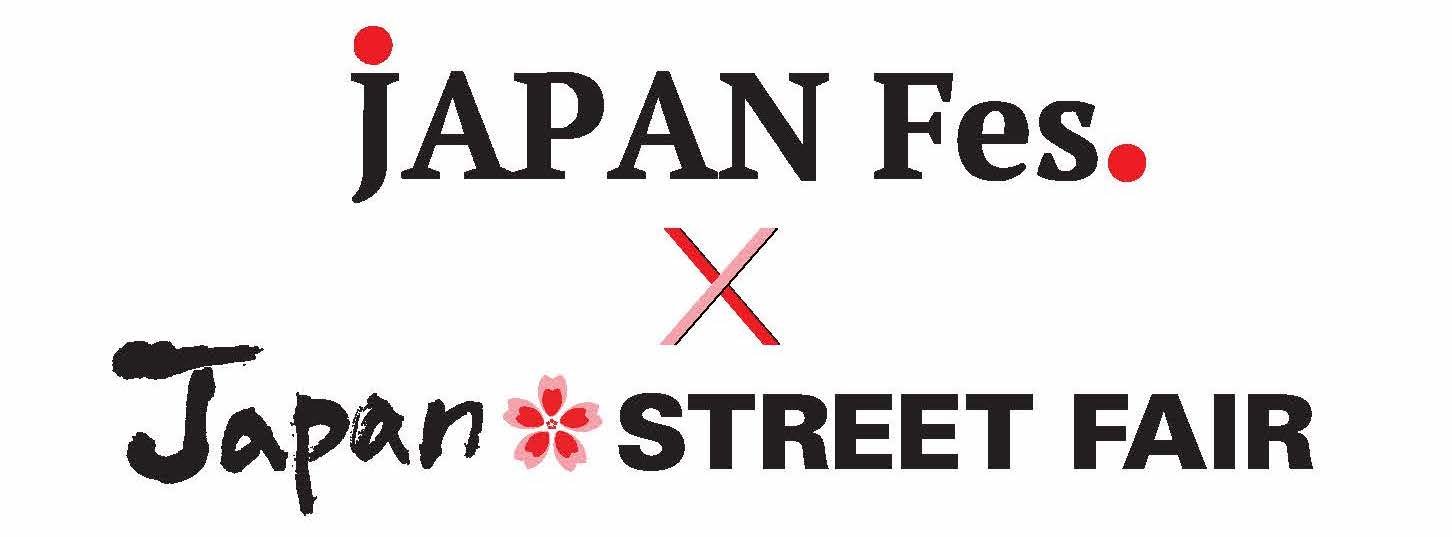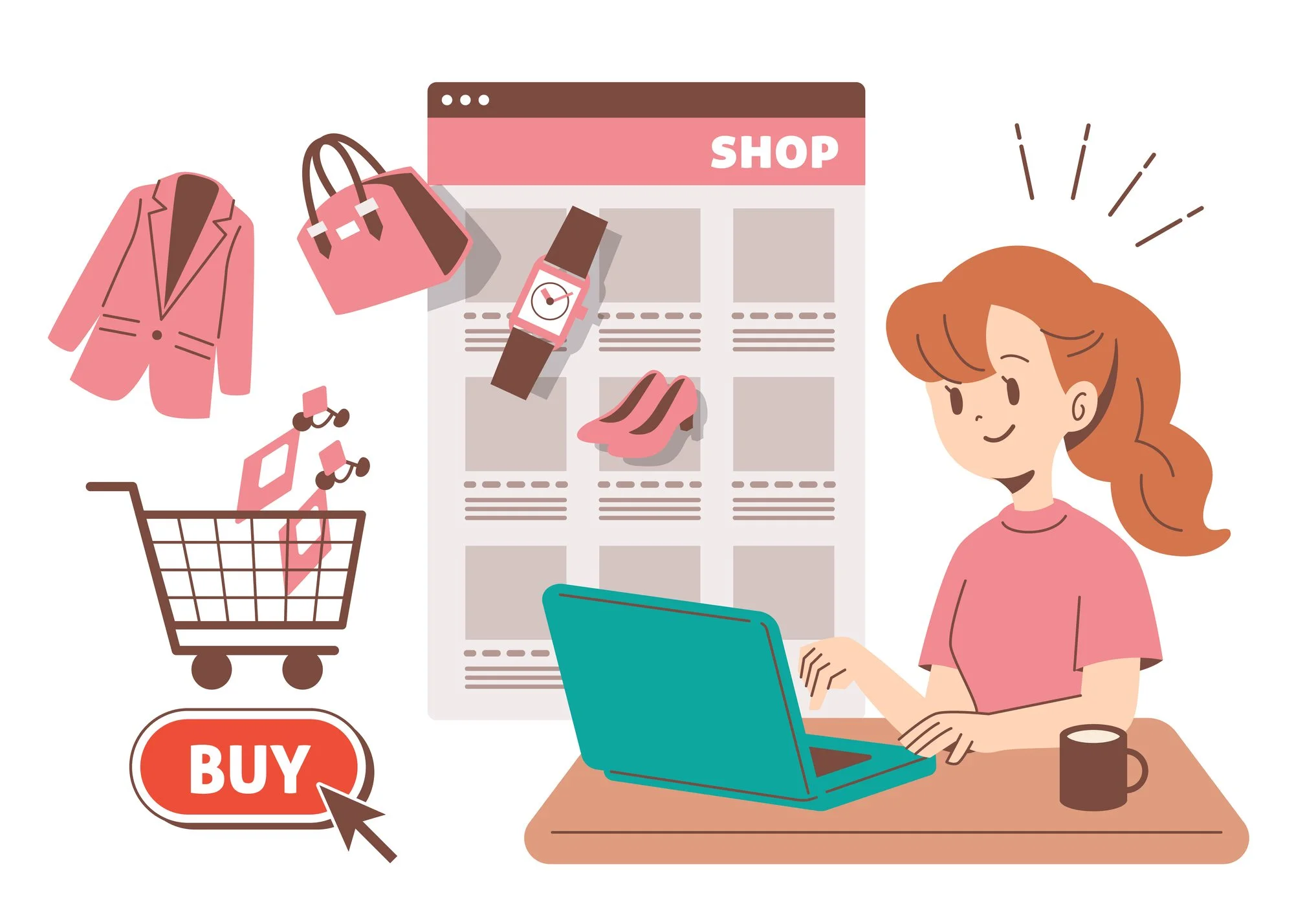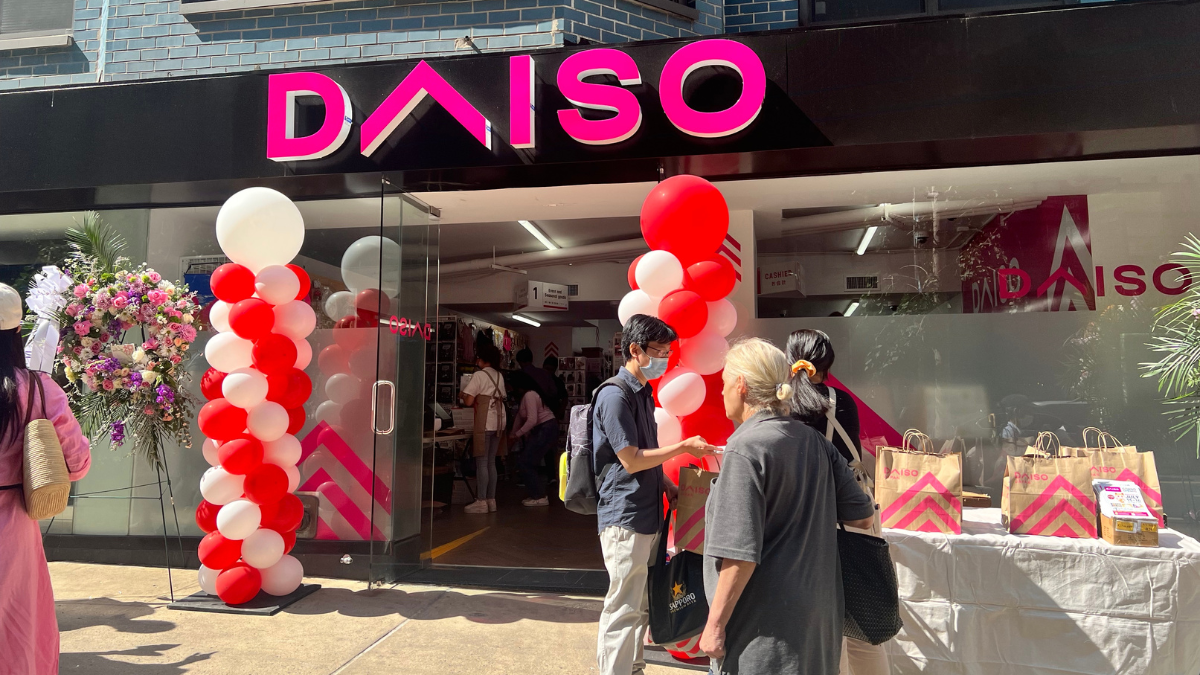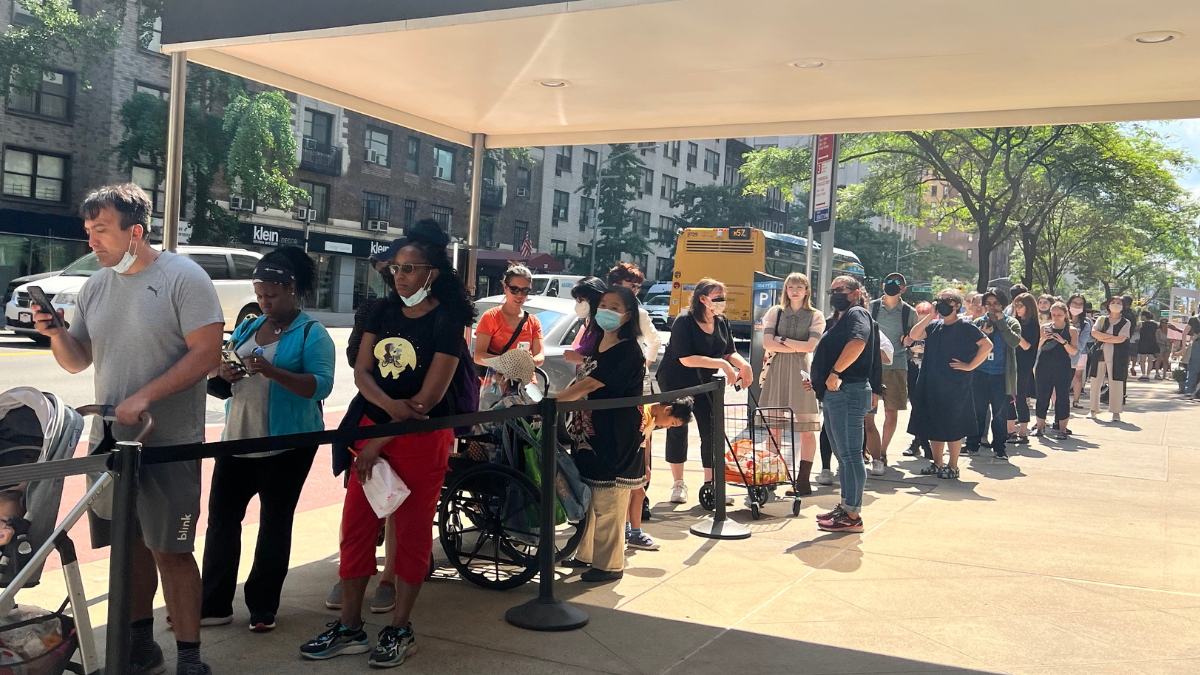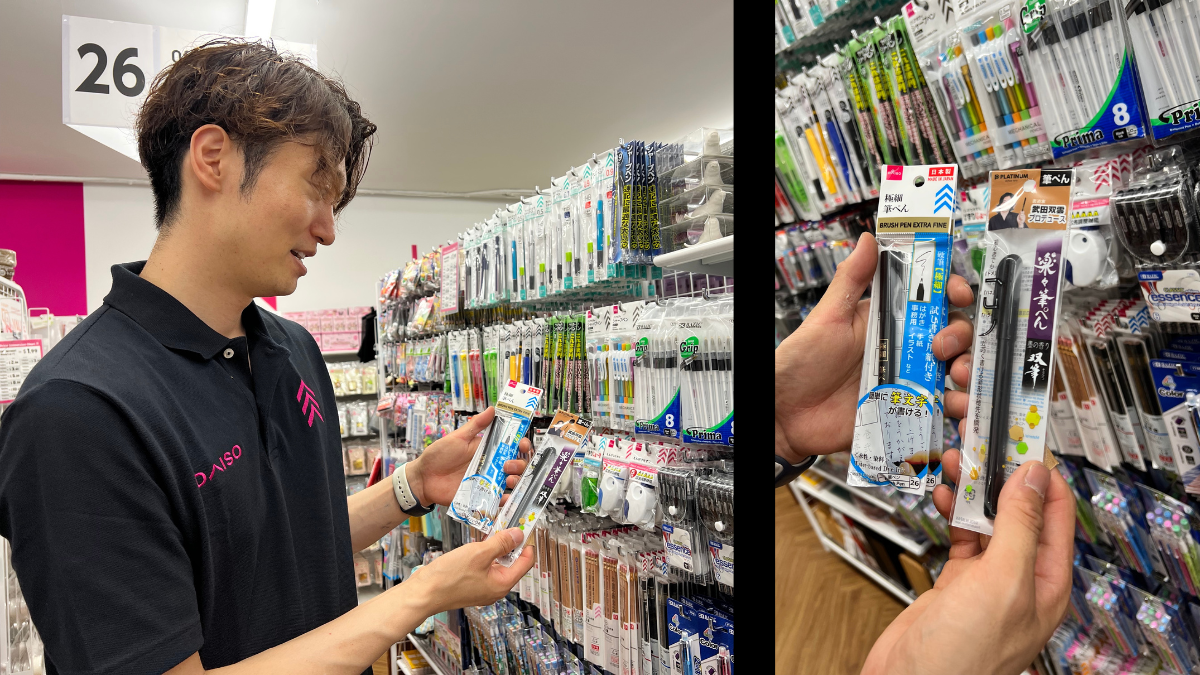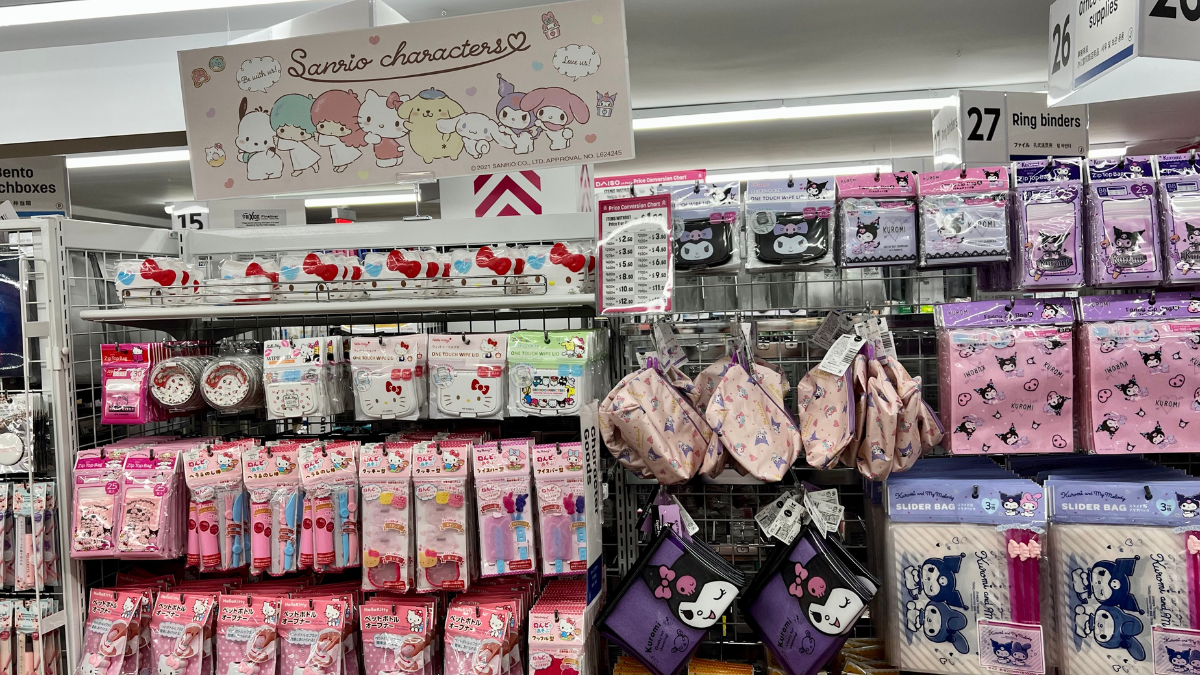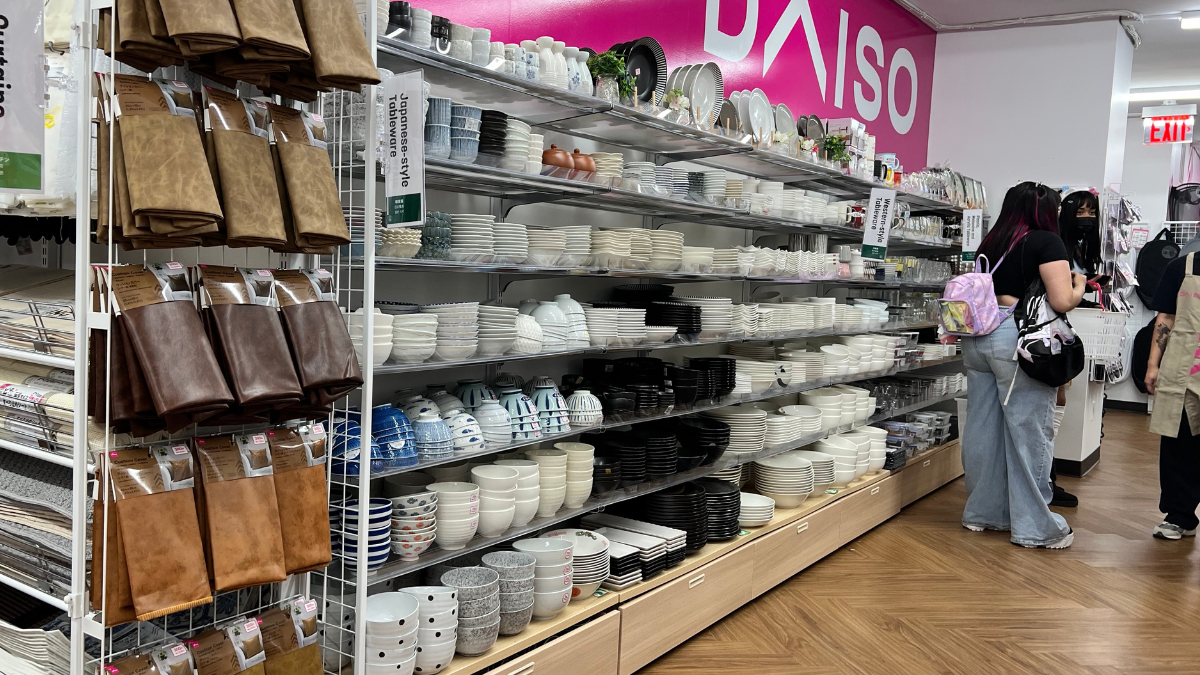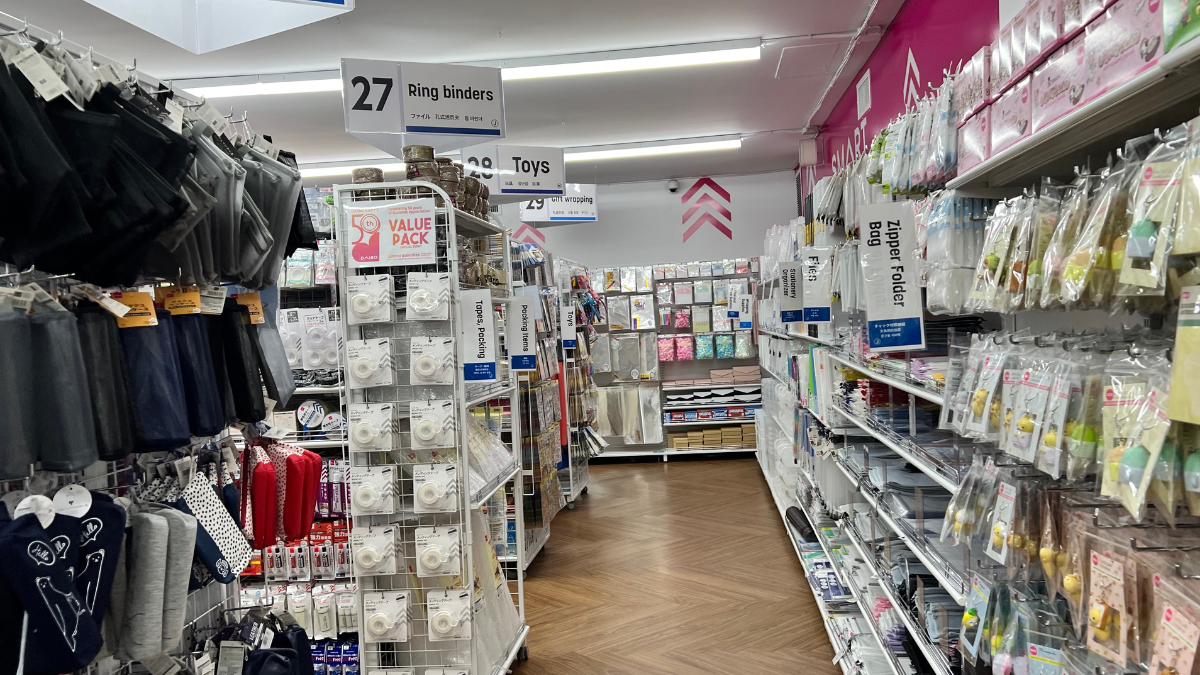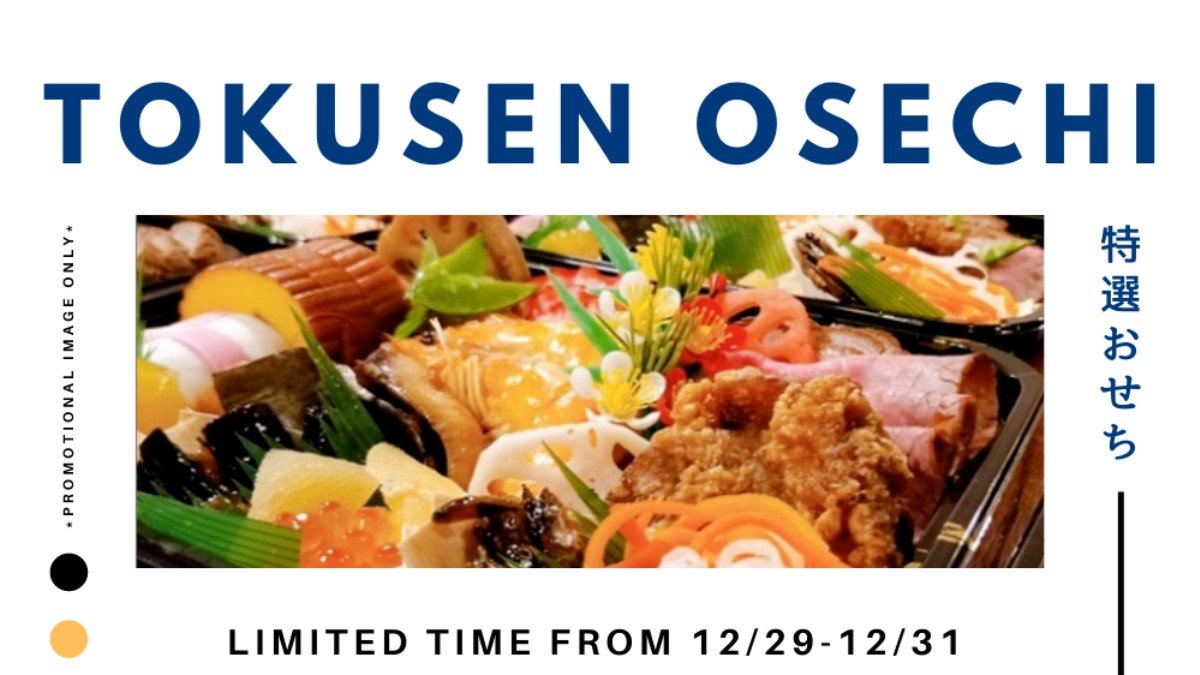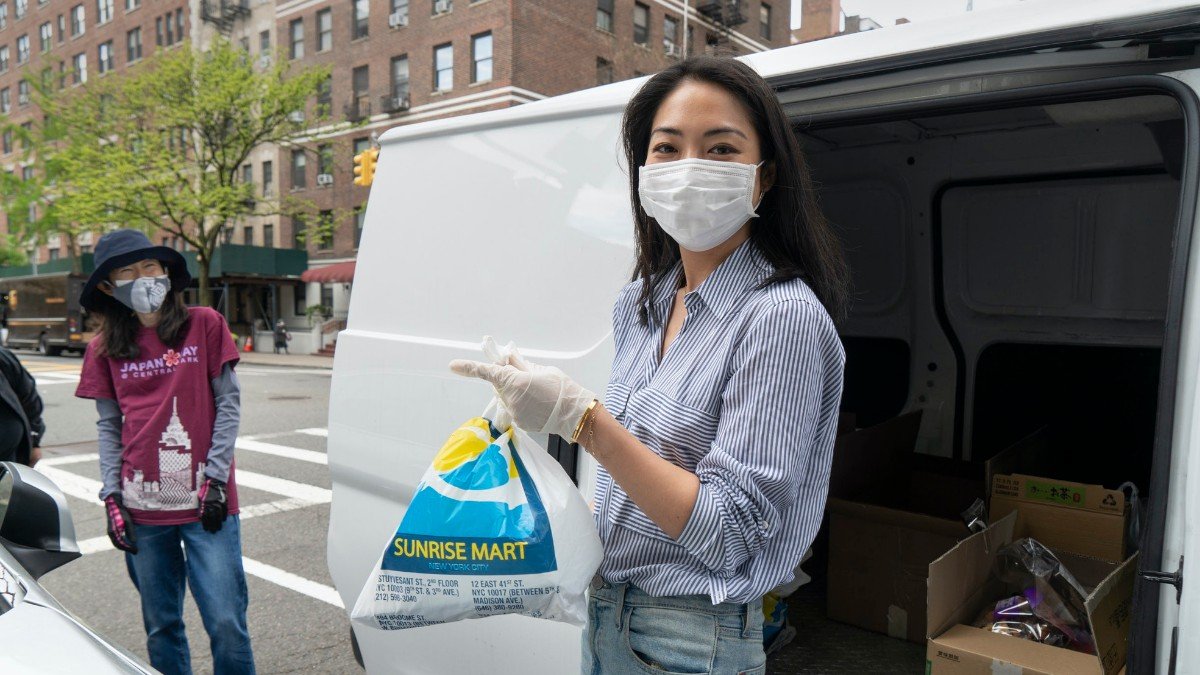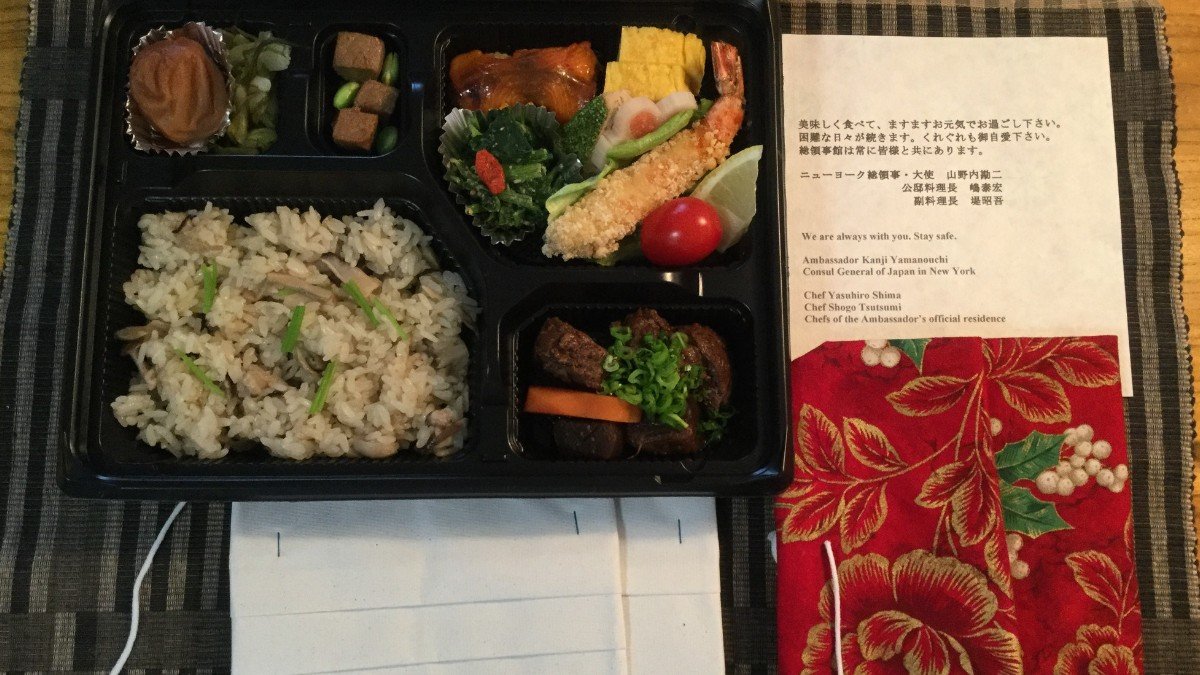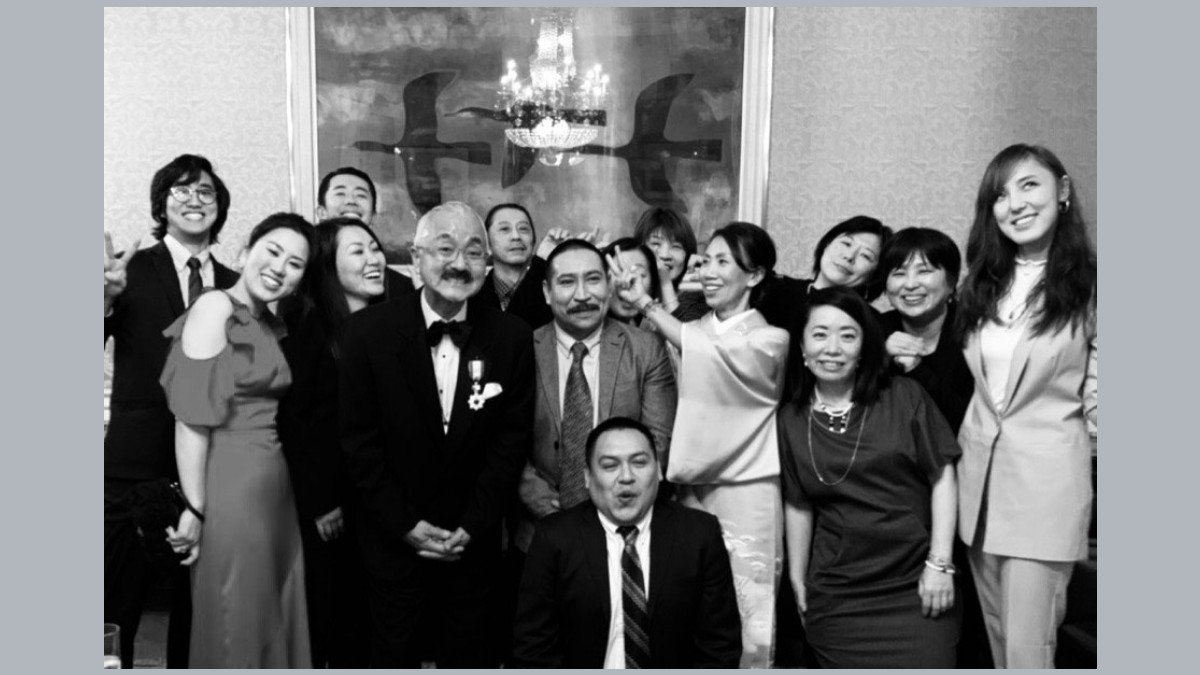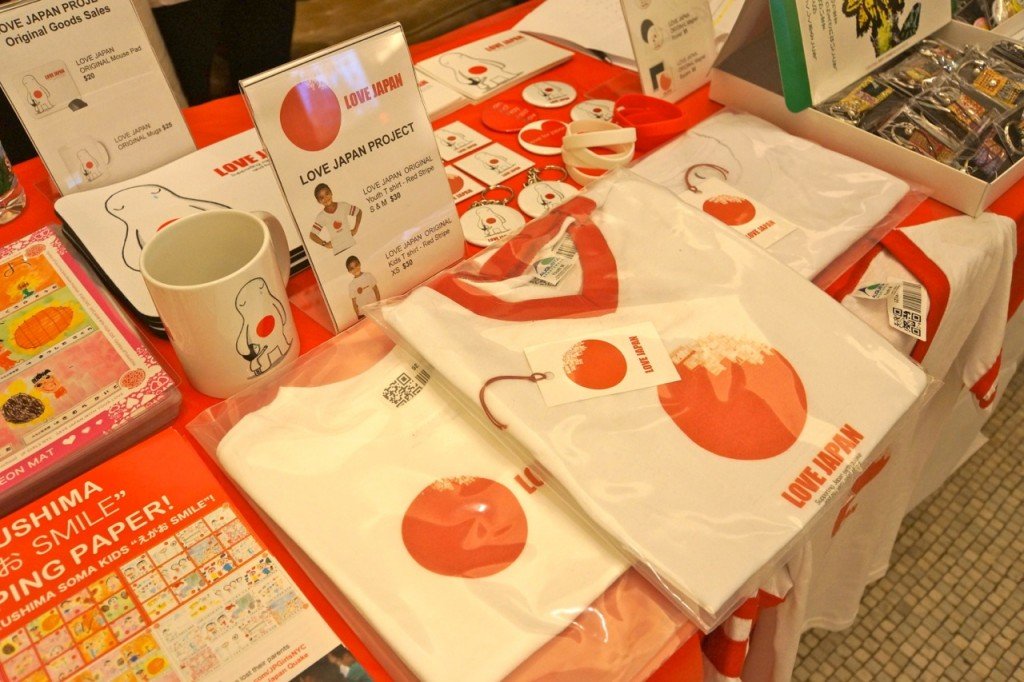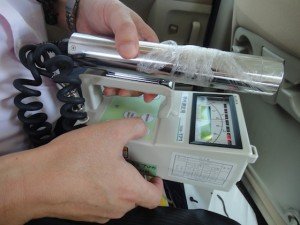Celebrate NYC-Japan Friendship at 2nd Annual Japan Parade
Japan Parade
Saturday, May 13 from 1:00 p.m. until 5:00 p.m.
Central Park West from 81st Street to 67th Street
Admission: Free
The second annual Japan Parade in New York City will be held on Saturday, May 13, beginning at 1:00 p.m. Starting on Central Park West at West 81st Street and traveling south to West 67th Street, the parade will celebrate, express, and bring awareness of the friendship between New York City and Japan with a thank you from the Japanese community. Olympic Gold Medalist Kristi Yamaguchi will be the Parade’s Grand Marshal. Former NY1 reporter Sandra Endo, current news correspondent on KTVV Los Angeles, Fox 11 News, and a feature reporter for Good Day LA, will serve as Emcee.
Official Japan Parade poster by art contest winner Gary Bitsicas
This year’s Japan Parade will feature a live performance by the cast of The 2.5-Dimensional show from Japan, “Live Spectacle ‘NARUTO.’” NARUTO is one of the most internationally recognized and popular manga series of all time. The franchise has sold more than 250 million copies worldwide to date. Written and illustrated by creator Masashi Kishimoto, NARUTO was first published in Shueisha’s magazine Weekly Shonen Jump in 1999, where it was serialized and ran for 15 years.
ⒸMasashi Kishimoto, Scott/SHUEISHA/Live Spectacle “NARUTO” Production Committee 2022
JAPAN Fes at Japan Parade
Concurrently with the Japan Parade, the Japan Street Fair will be held on W. 72nd Street, between Central Park West and Columbus Avenue.
The Japan Street Fair will feature tents offering entertaining and educational cultural activities including calligraphy, water balloon yo-yo fishing, origami, photo opportunities, and a giveaway. In collaboration with JAPAN Fes, one of the largest organizers of Japanese food festivals in the world, hosting more than 20 Japanese food fair events a year in New York City, the Street Fair will also feature about 20 tents serving authentic Japanese food. The latest information on Japan’s many tourist destinations will be made available at other tents, and as with last year, there will also be a tent where visitors can donate to charitable causes that support victims of the ongoing war in Ukraine and the recent earthquake in Turkey and Syria. The Japan Street Fair is your chance to experience a Japanese festival, or matsuri, unlike any other.
“I am truly honored to act as Grand Marshal for this year’s Japan Parade. My Japanese heritage is something I’m proud of and I’m happy to celebrate the goodwill of our relationship with Japan and the engagement and solidarity with the Japanese American community.”
—Kristi Yamaguchi
Participating groups include Anime NYC, COBU (Drum), Harlem Japanese Gospel Choir, International Karate Organization Kyokushinkaikan, The Japanese Folk Dance of NY, Katsura Sunshine (Rakugo Comedian), Midori & Friends (Music Education Group), Soh Daiko (Drum), TATE Hatoryu NY (Sword Fighting), Yosakoi Dance Project 10tecomai, Young People's Chorus of NYC, and many more.
The Diamond Sponsors of this year’s Japan Parade (as of April 5) include All Nippon Airways Co., Ltd., Hisamitsu America, Inc., Japan Airlines Co., Ltd., and Sumitomo Mitsui Trust Bank, Limited. The Platinum Sponsors include ITOCHU International Inc., Marubeni America Corporation, Mitsubishi Corporation (Americas), Mitsui & Co. (U.S.A.), Inc., Nomura America Foundation, Sumitomo Corporation of Americas Foundation, and Tokio Marine America.
Photo Credit: AP
"The Japan Parade is a huge 'Arigato!' from the Japanese community to New York City," says Honorary Chairman, Ambassador Mikio Mori, the Consul General of Japan in New York. "It will be the second annual celebration of Japanese culture and the many vibrant connections between Japan and this great city. We plan to outdo the inaugural parade in terms of marchers, contents, and food tents all highlighting the uniqueness of Japan, while also solidifying with Asian communities during AAPI Heritage Month. We hope that these festivities bring the Japanese and all of New York City even closer together, adding to our friendship for generations to come.”
“After the huge success of last year’s inaugural Parade, we are very excited to be back in New York City for our second year, demonstrating the diversity and pride of the Japanese community,” said Japan Parade Executive Producer Kumiko Yoshii. “Last year, we had a crowd of over 20,000 with approximately 2,400 participants, marching down Central Park West. We look forward to building on this success and showcasing more groups from New York and Japan. We especially want to thank our sponsors and supporters, without whom this event would not be possible.”
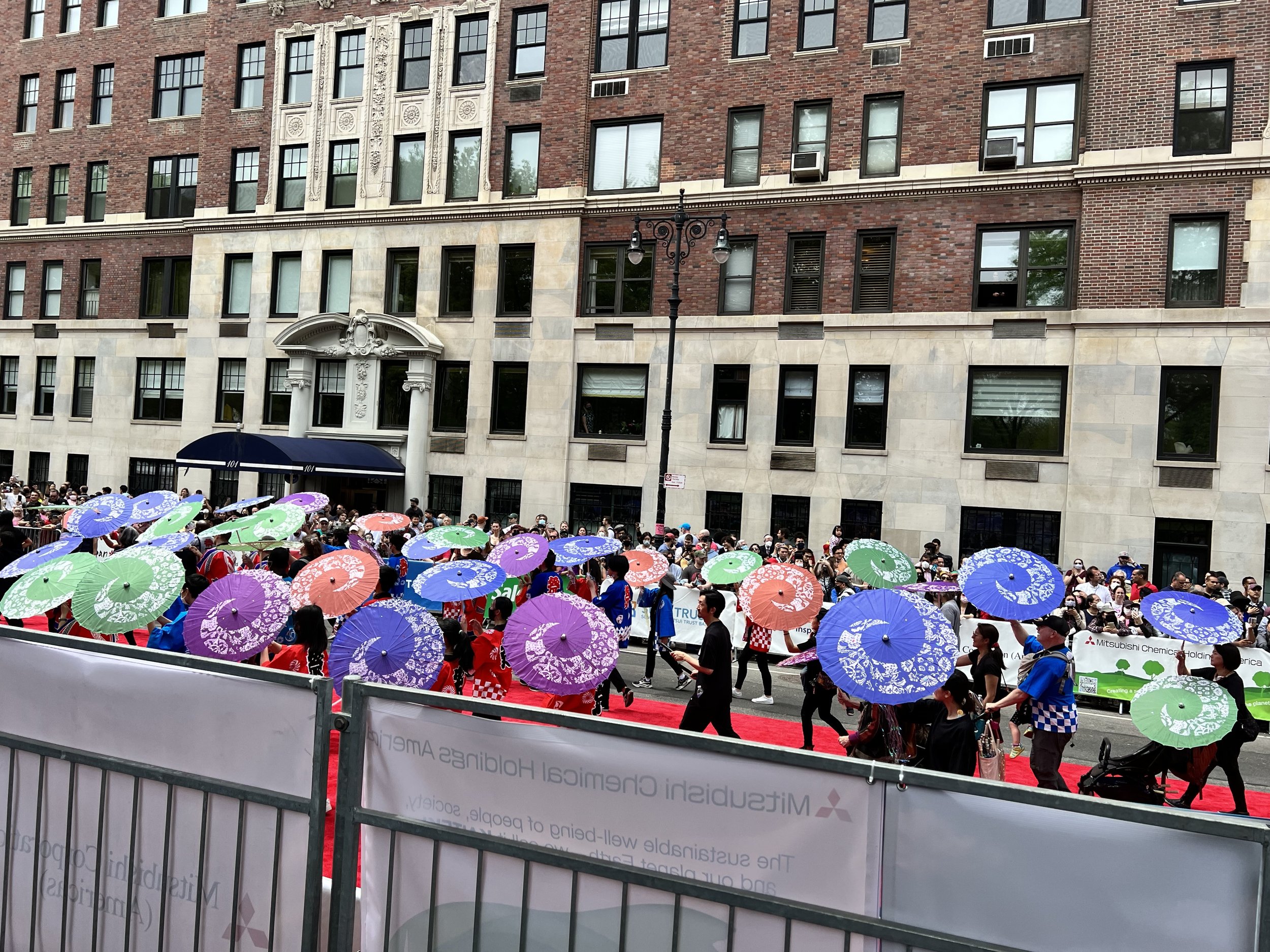
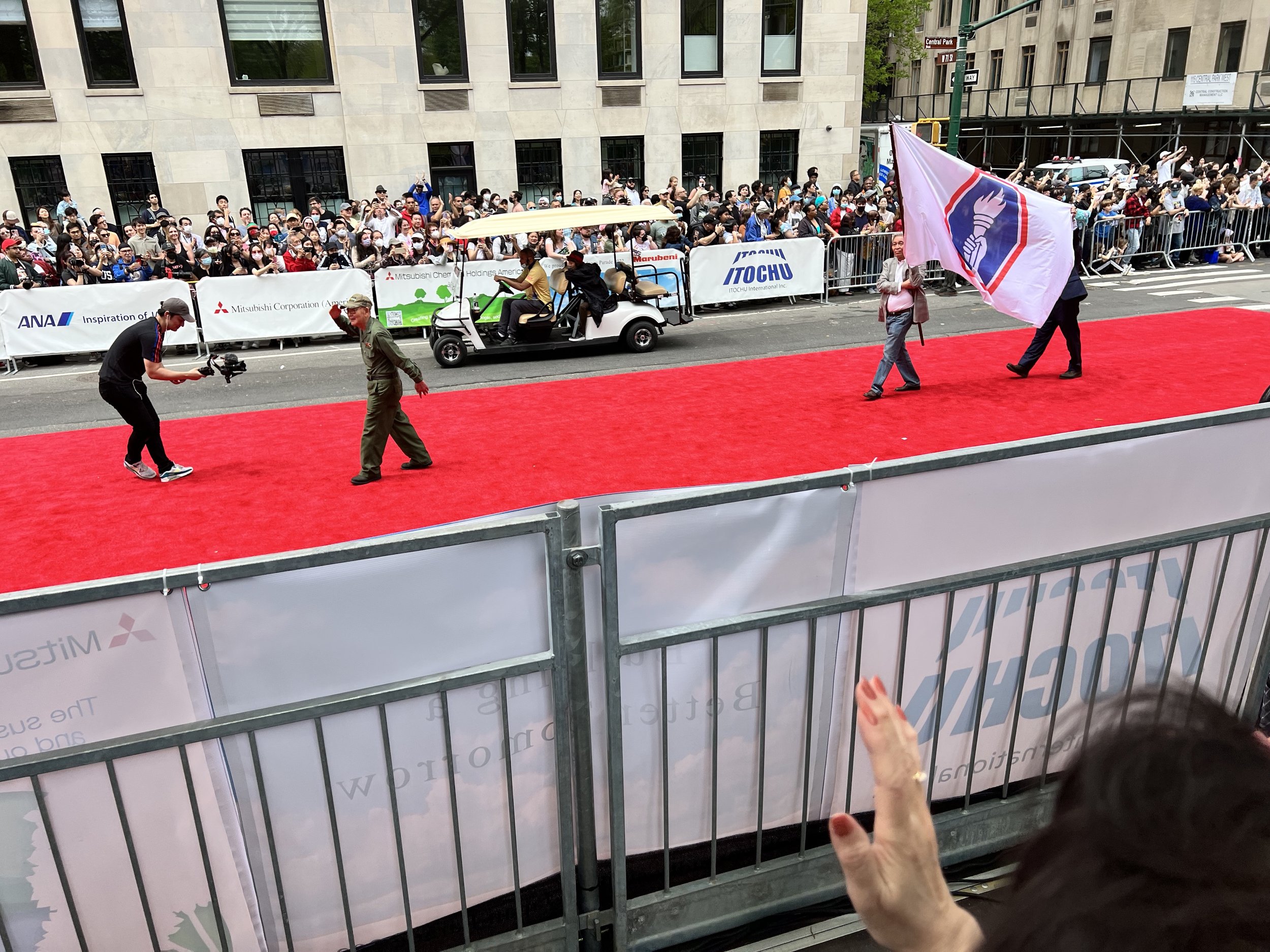
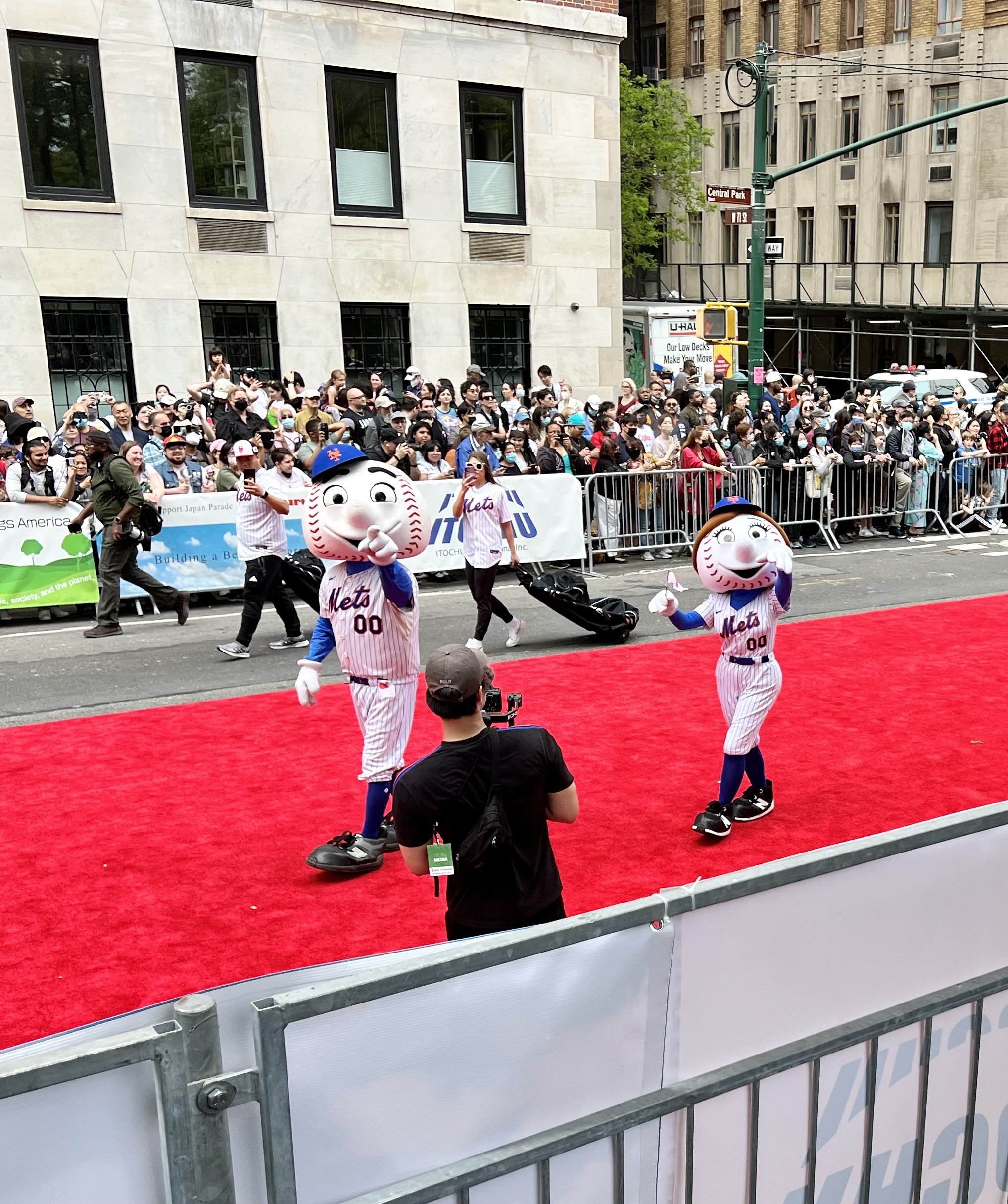
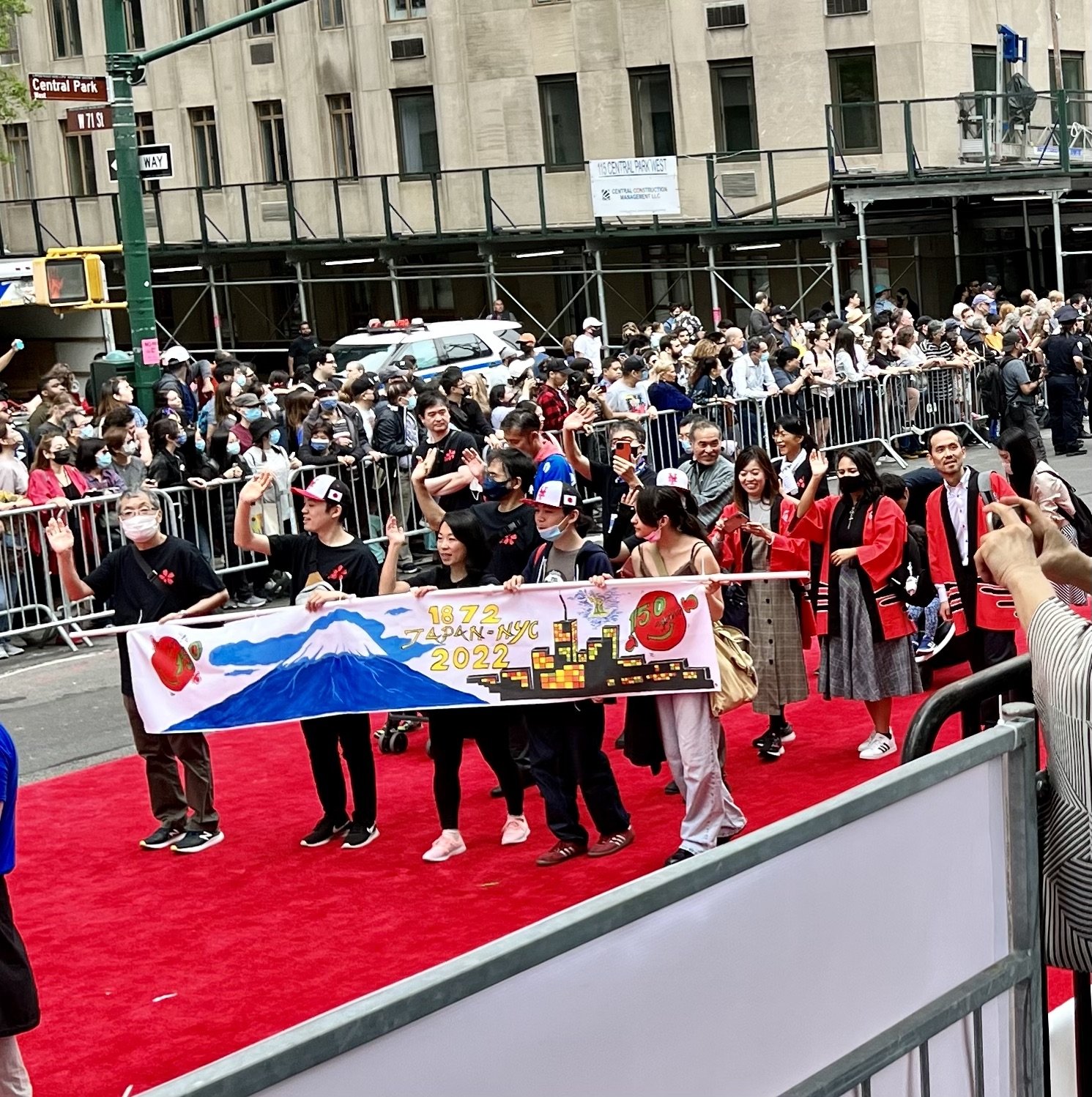
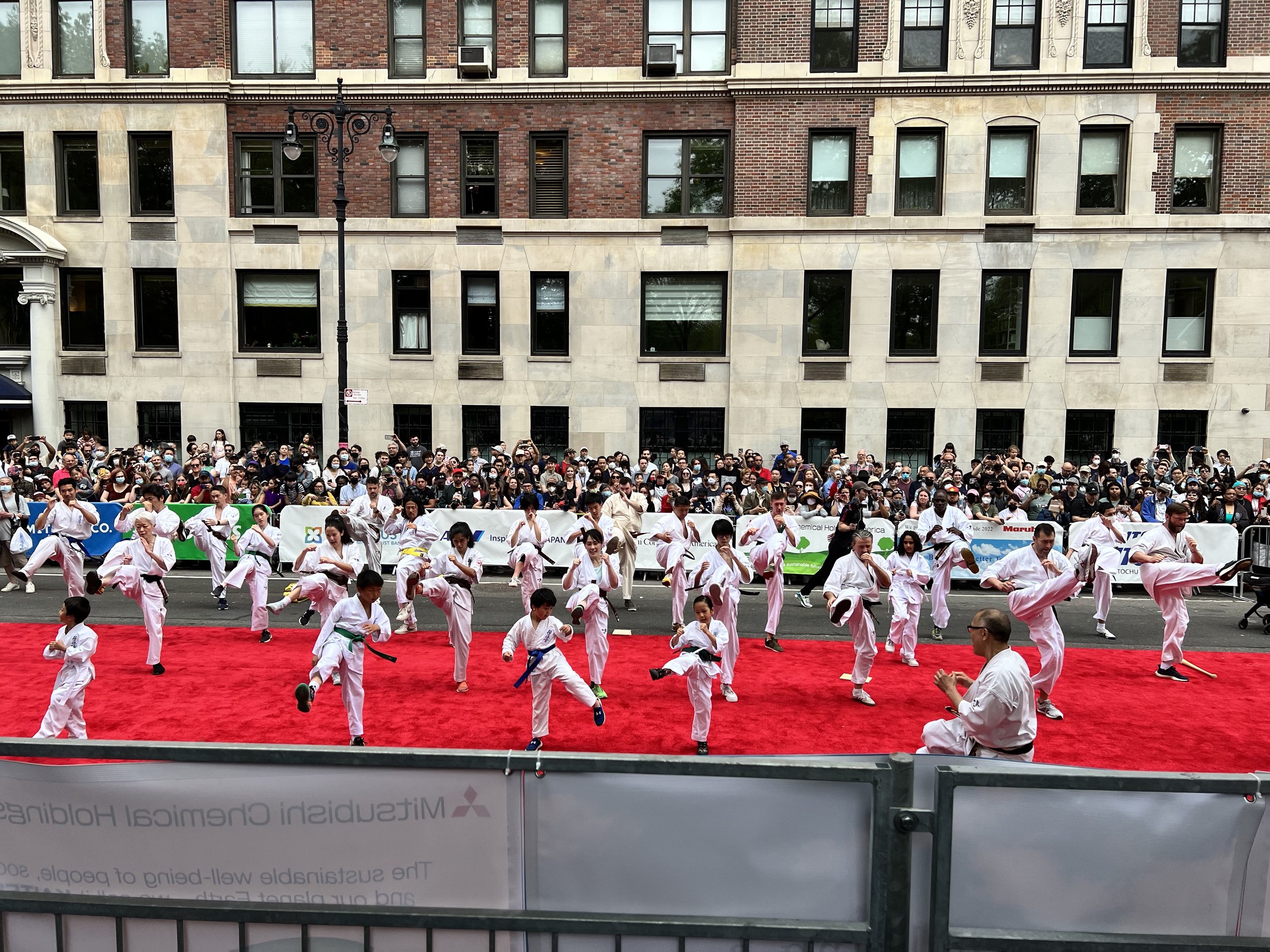
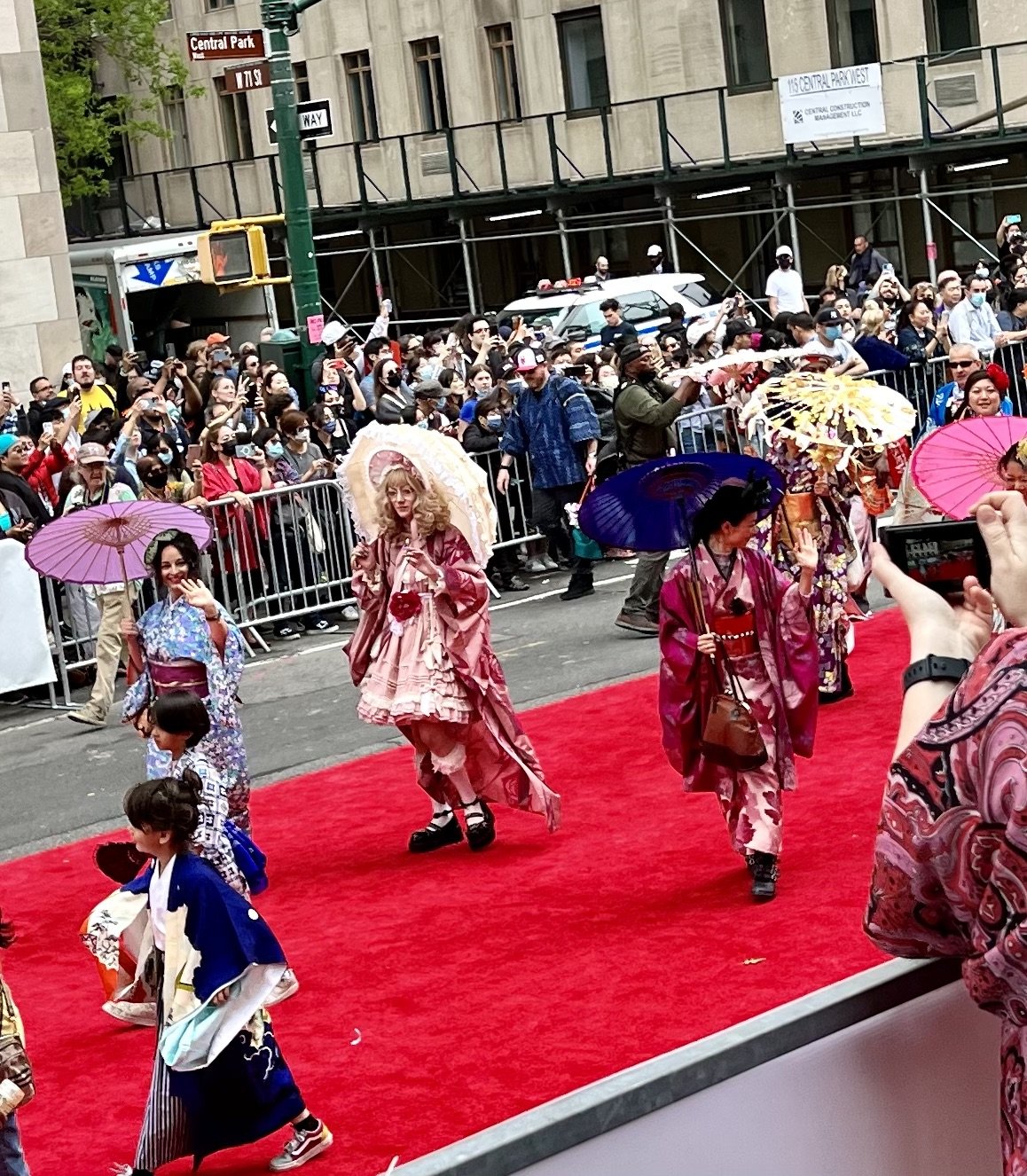
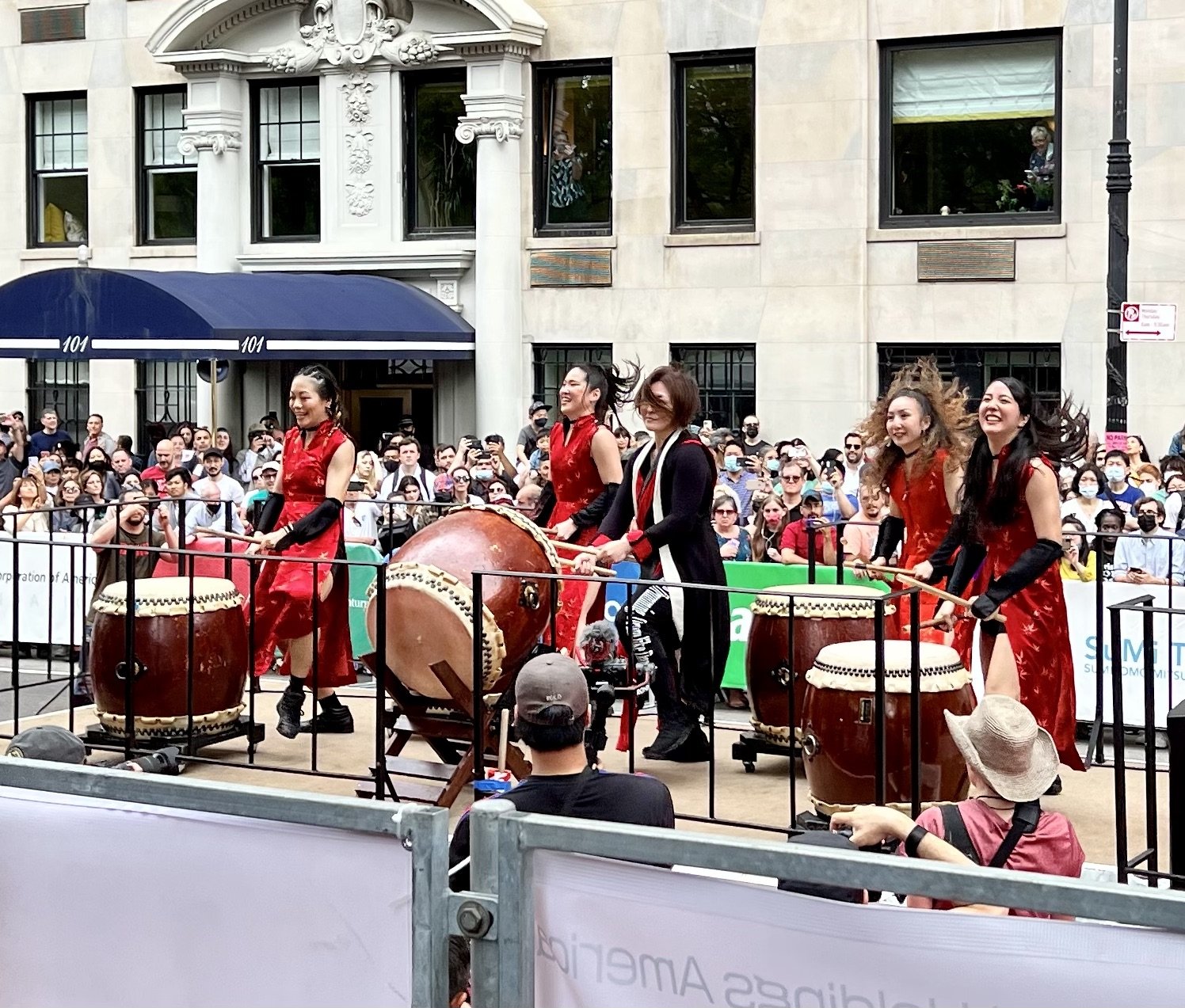
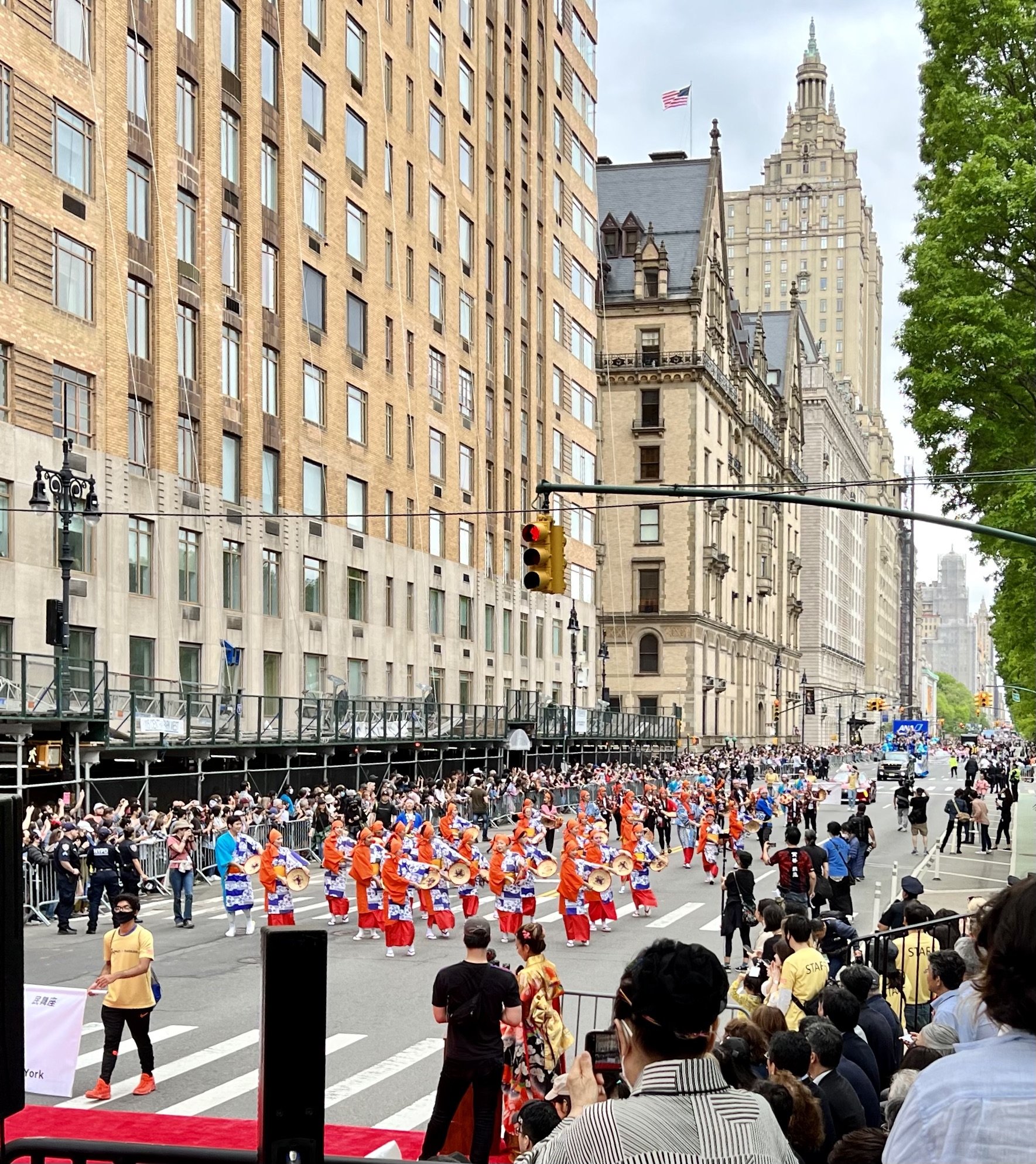
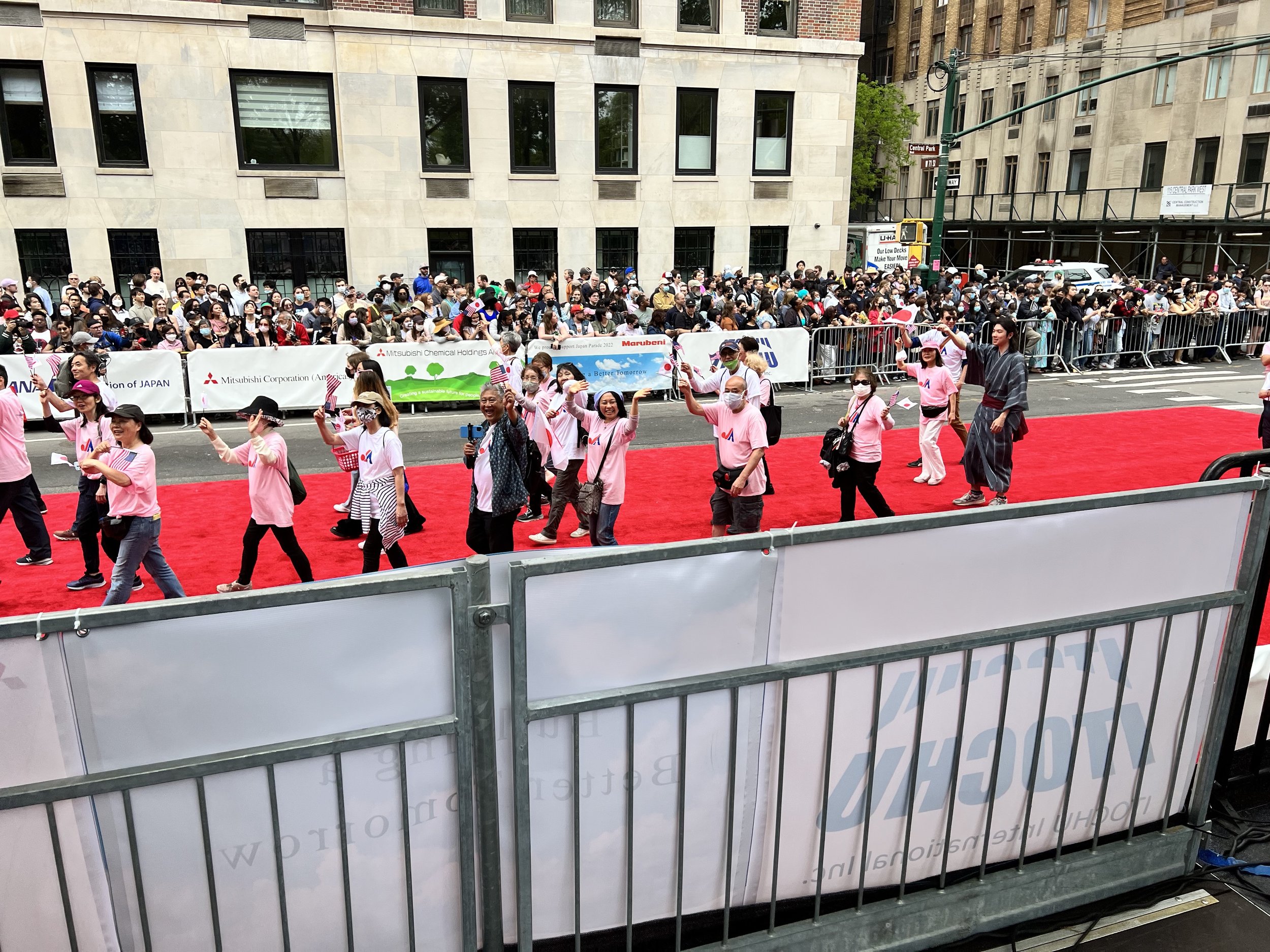

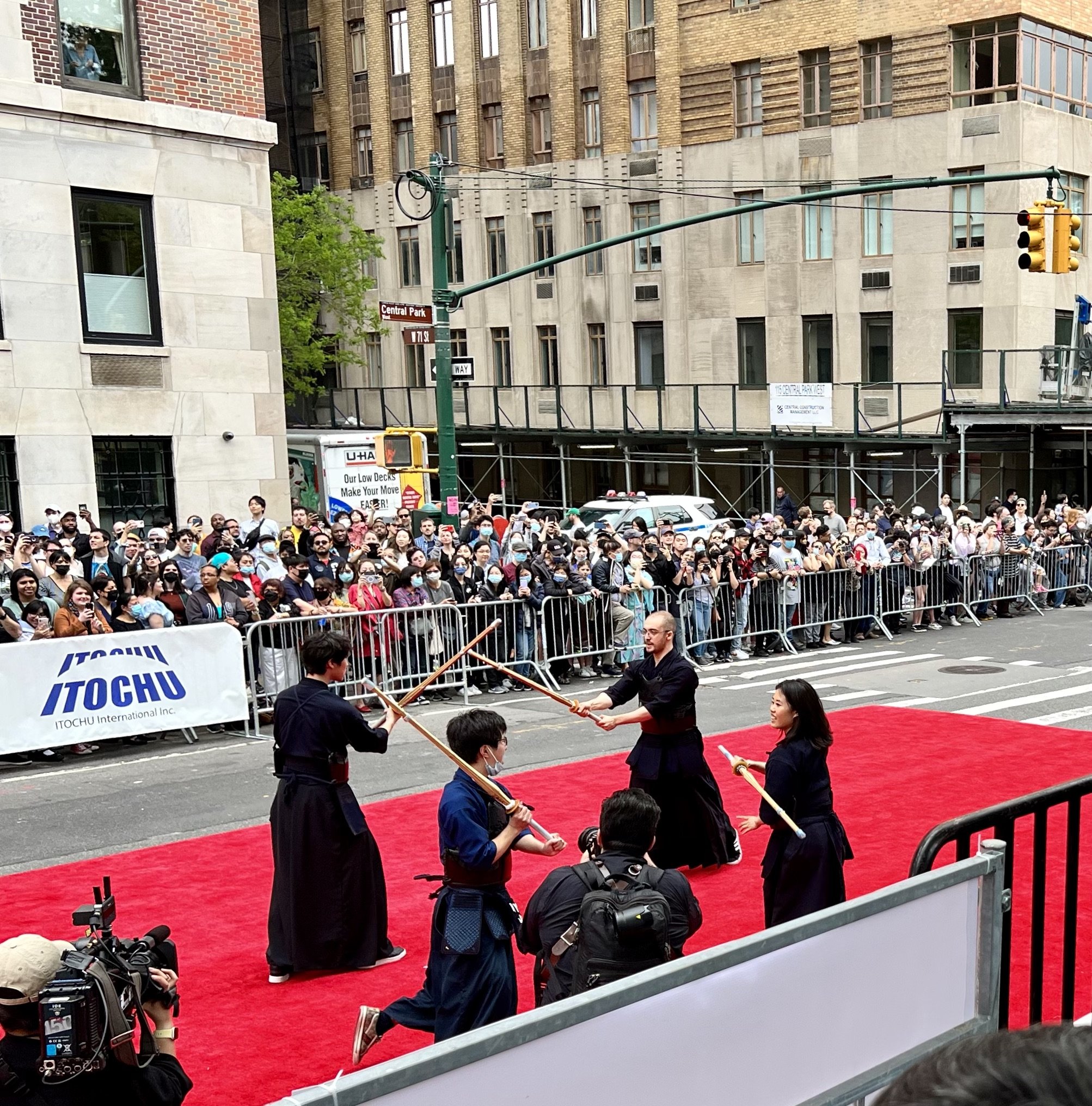
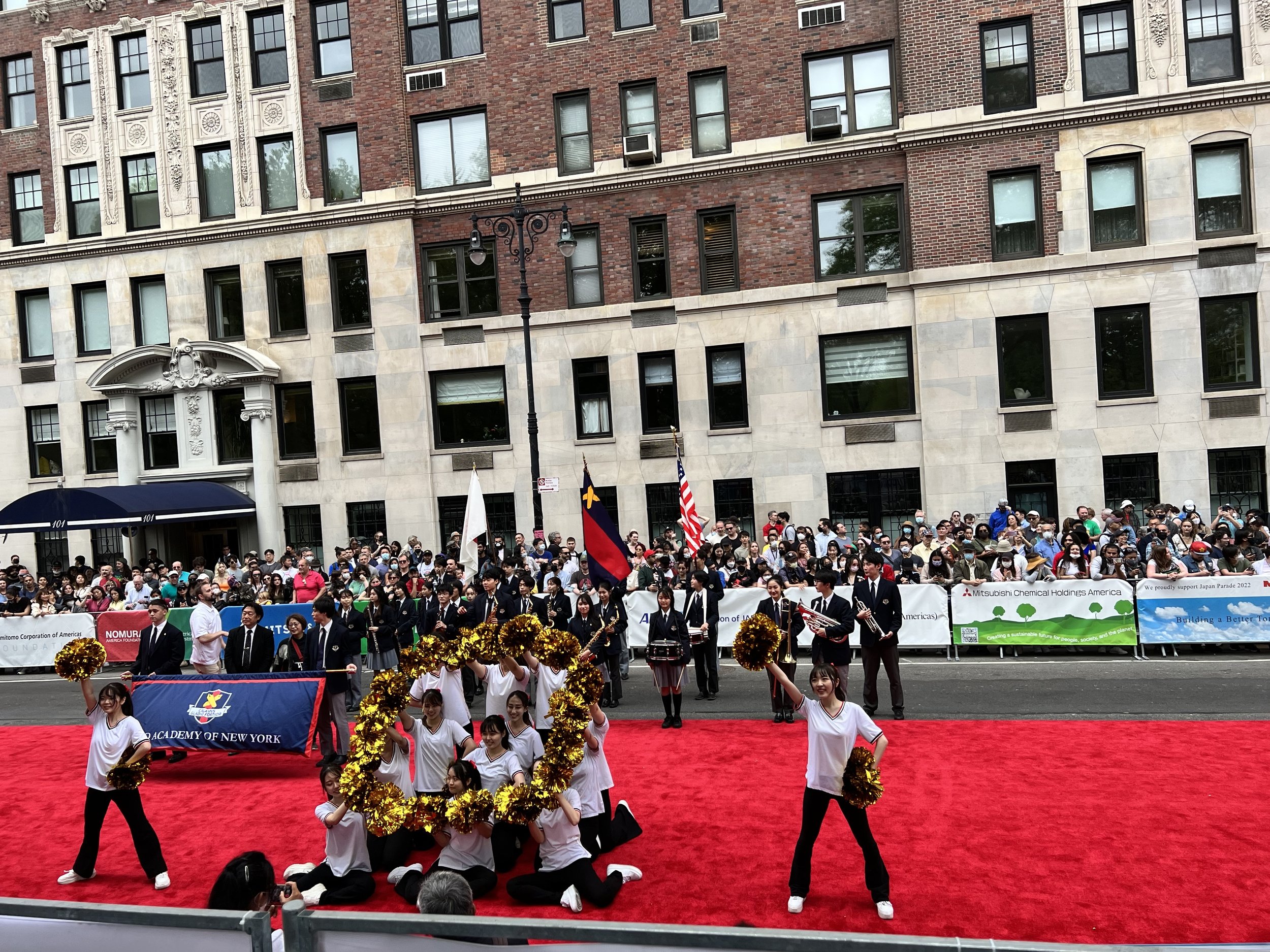
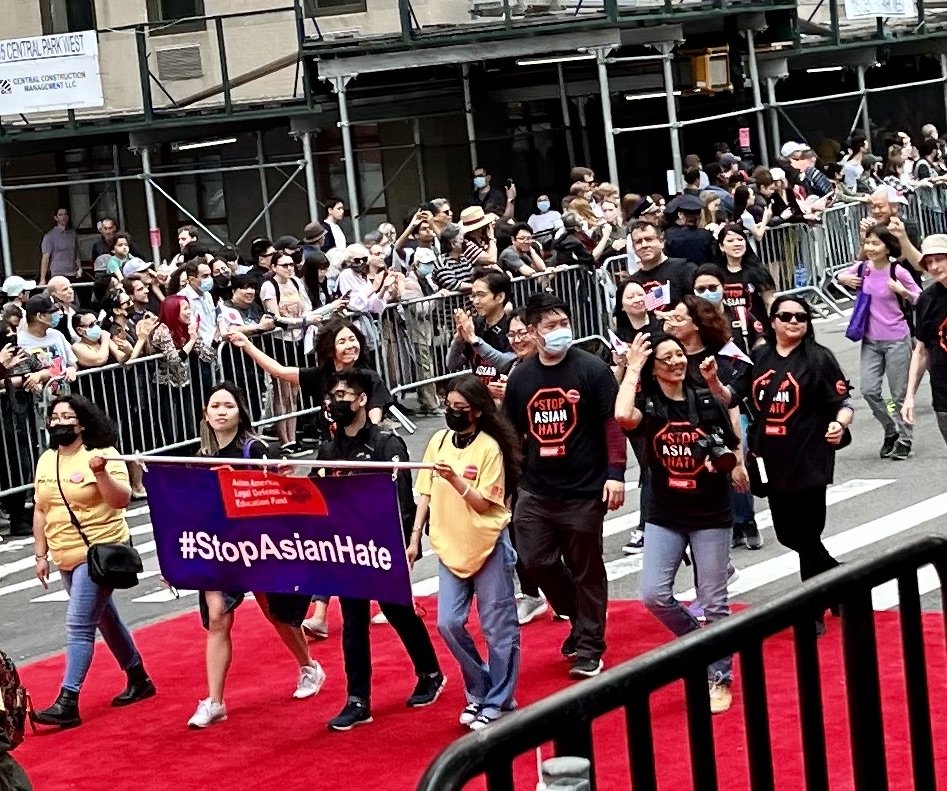
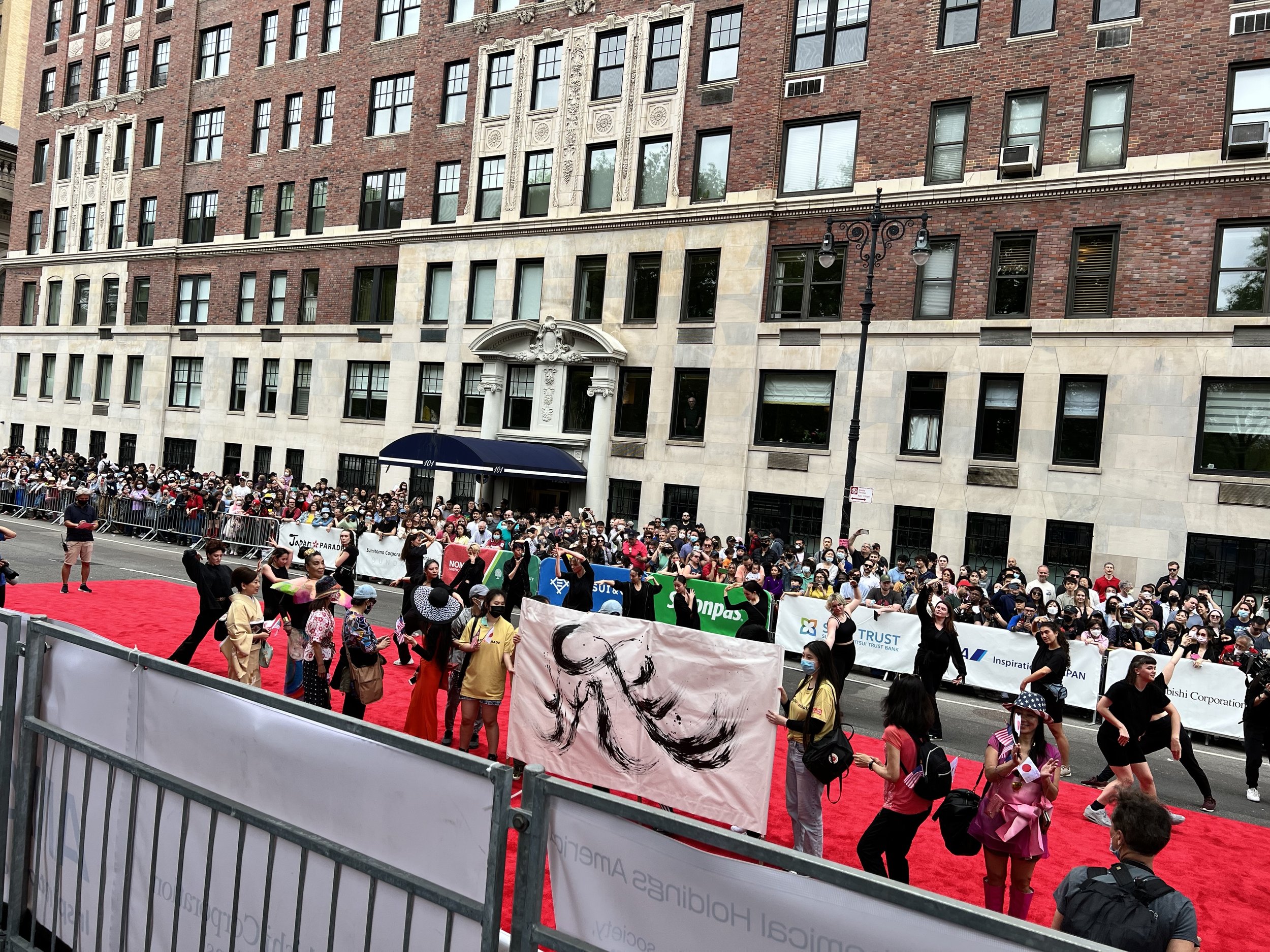
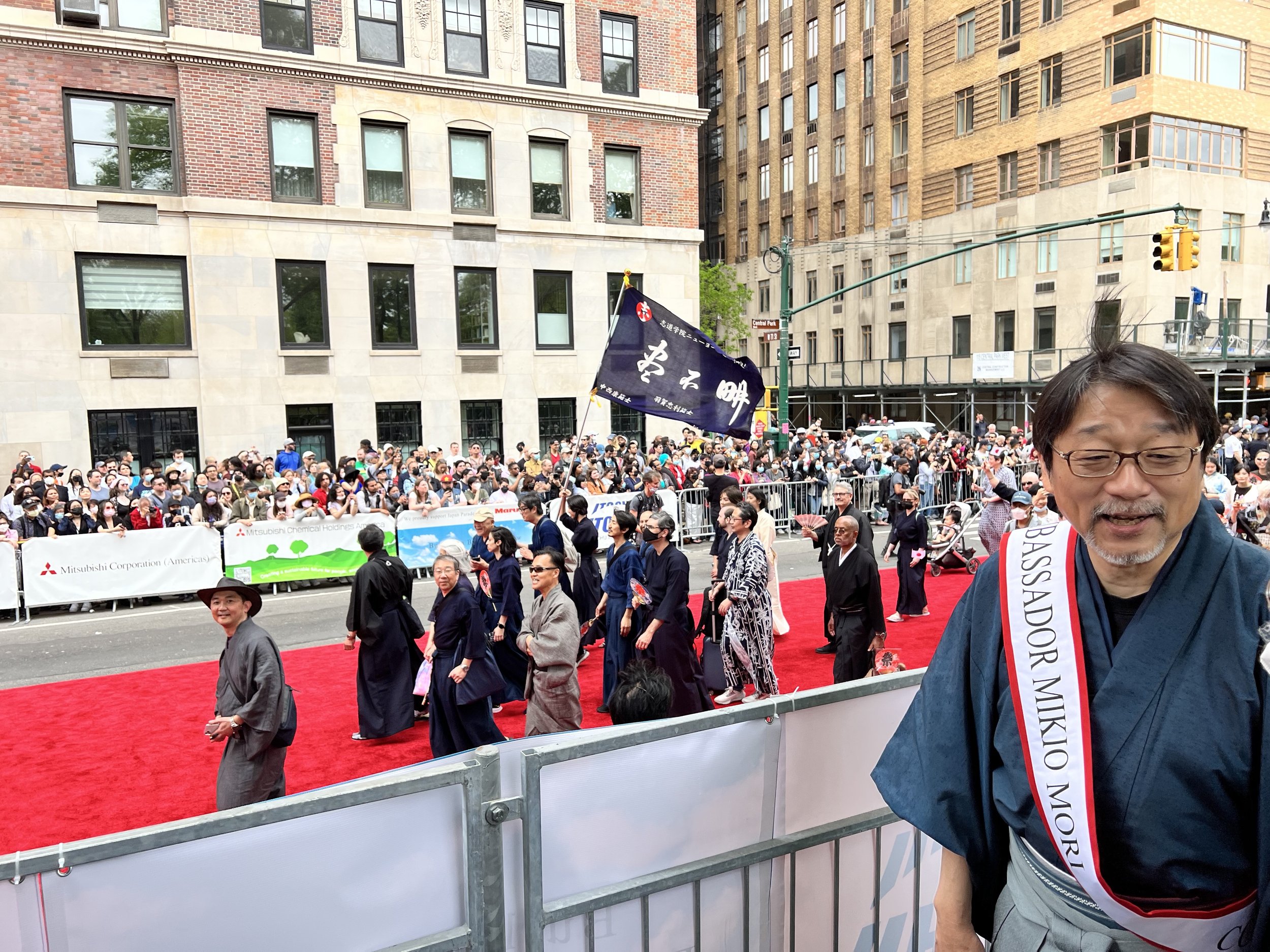
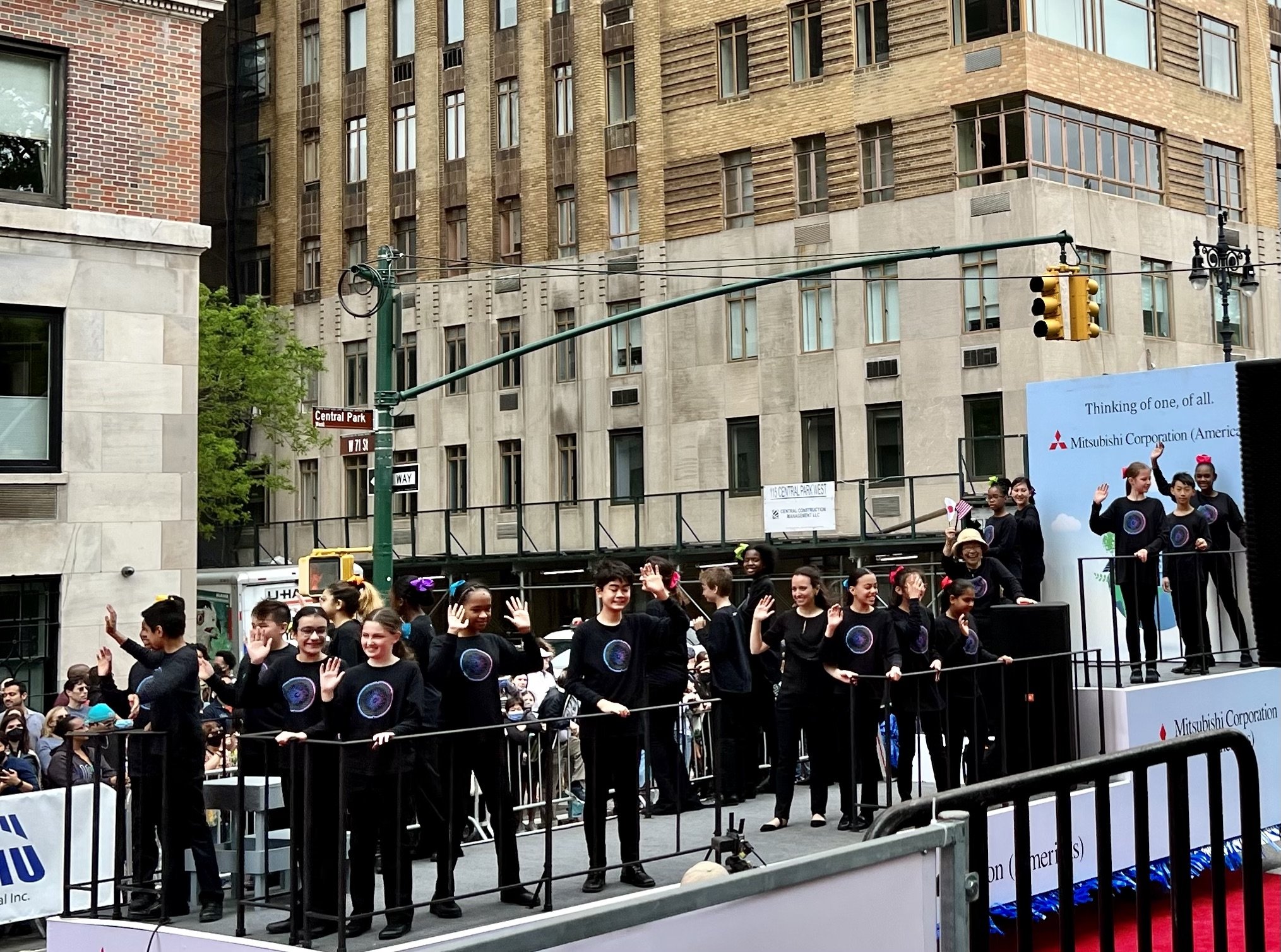
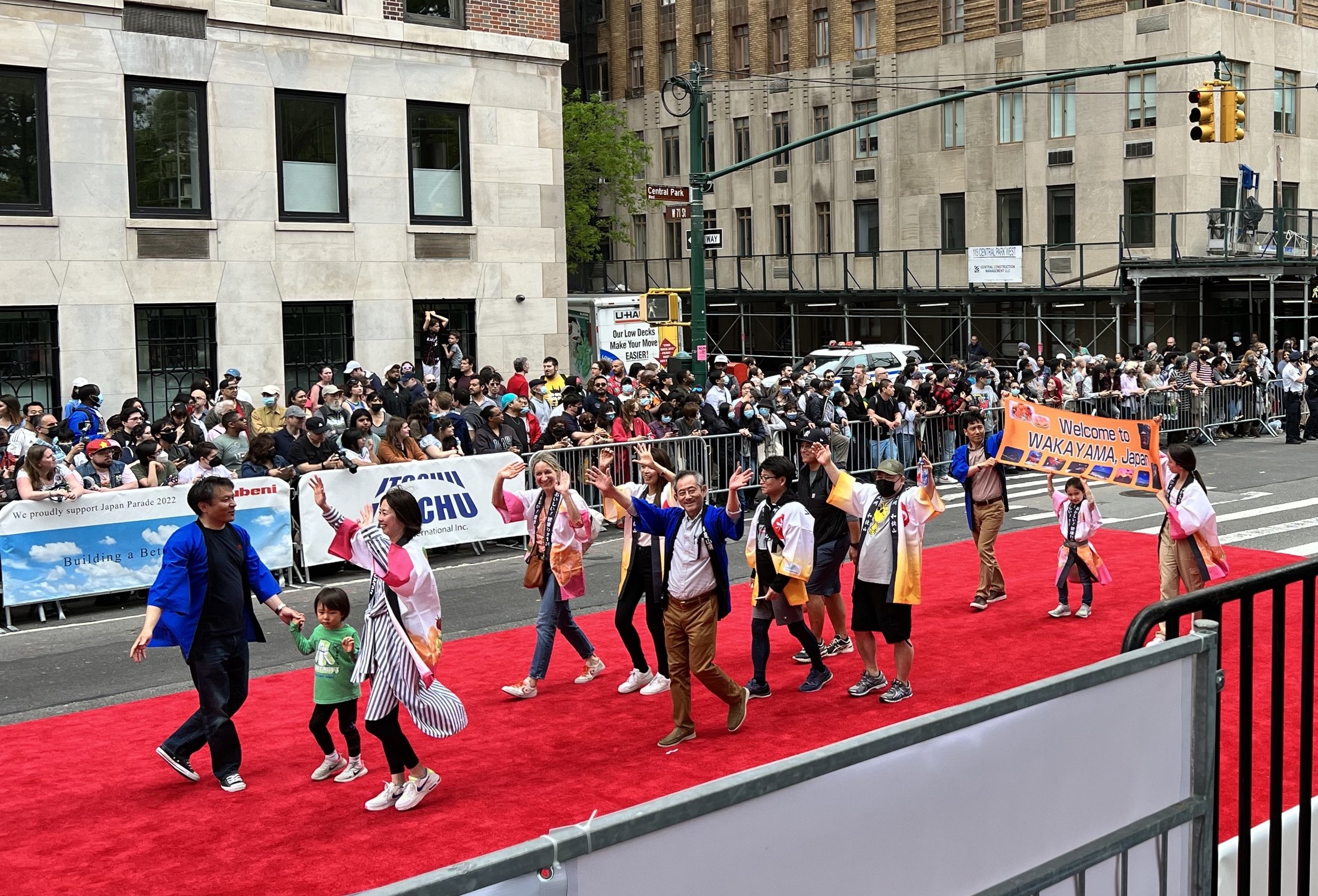
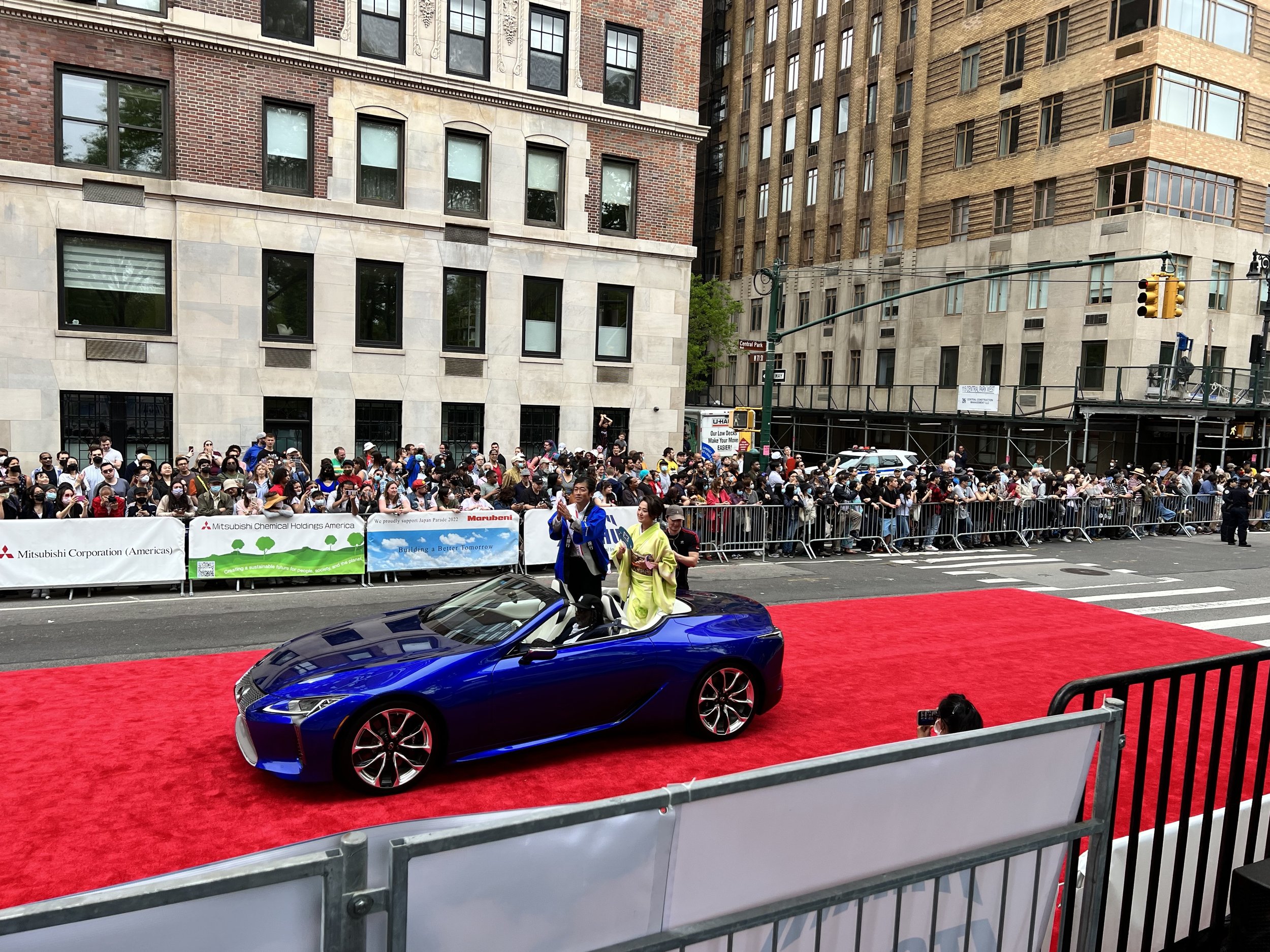
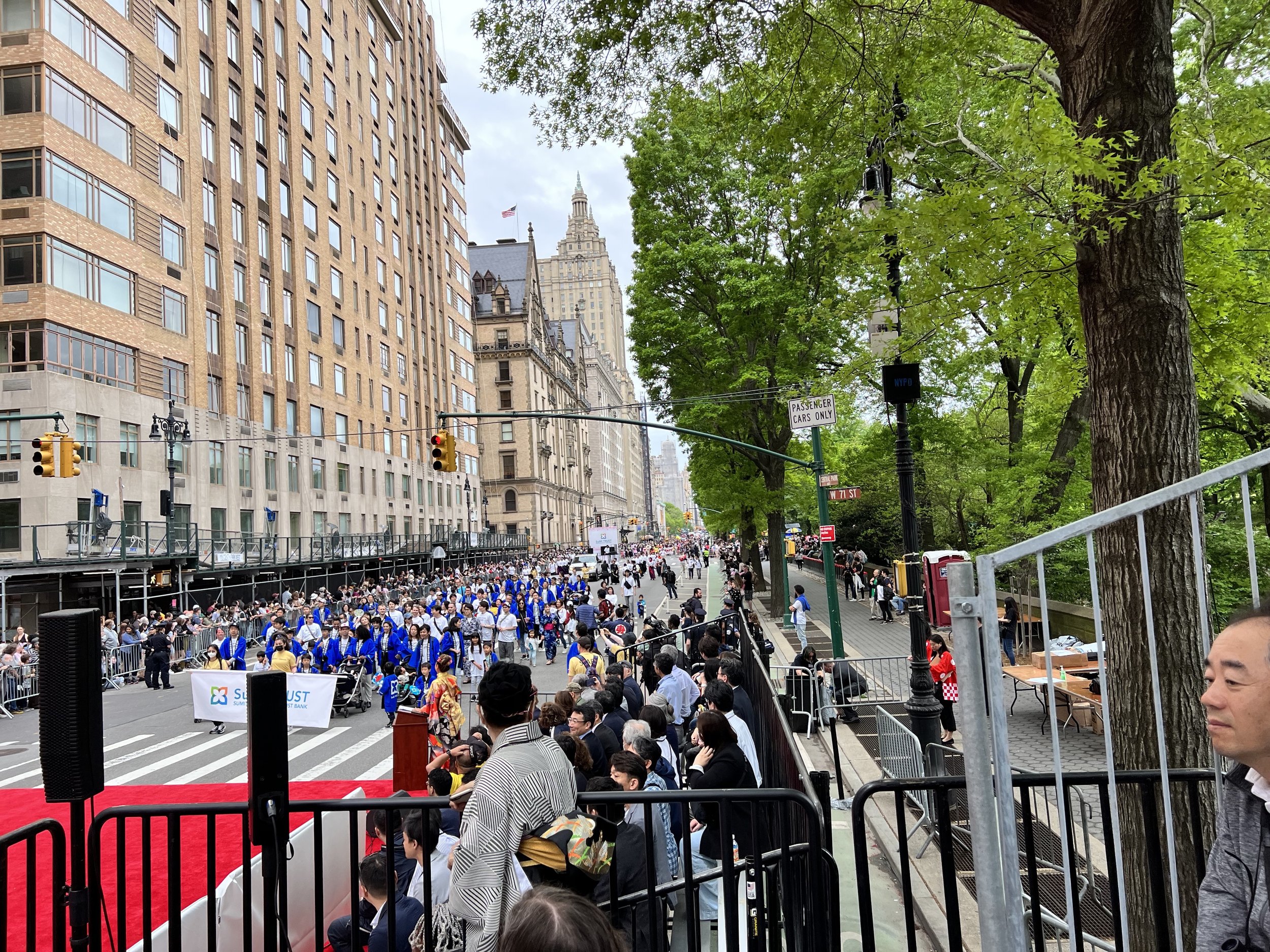
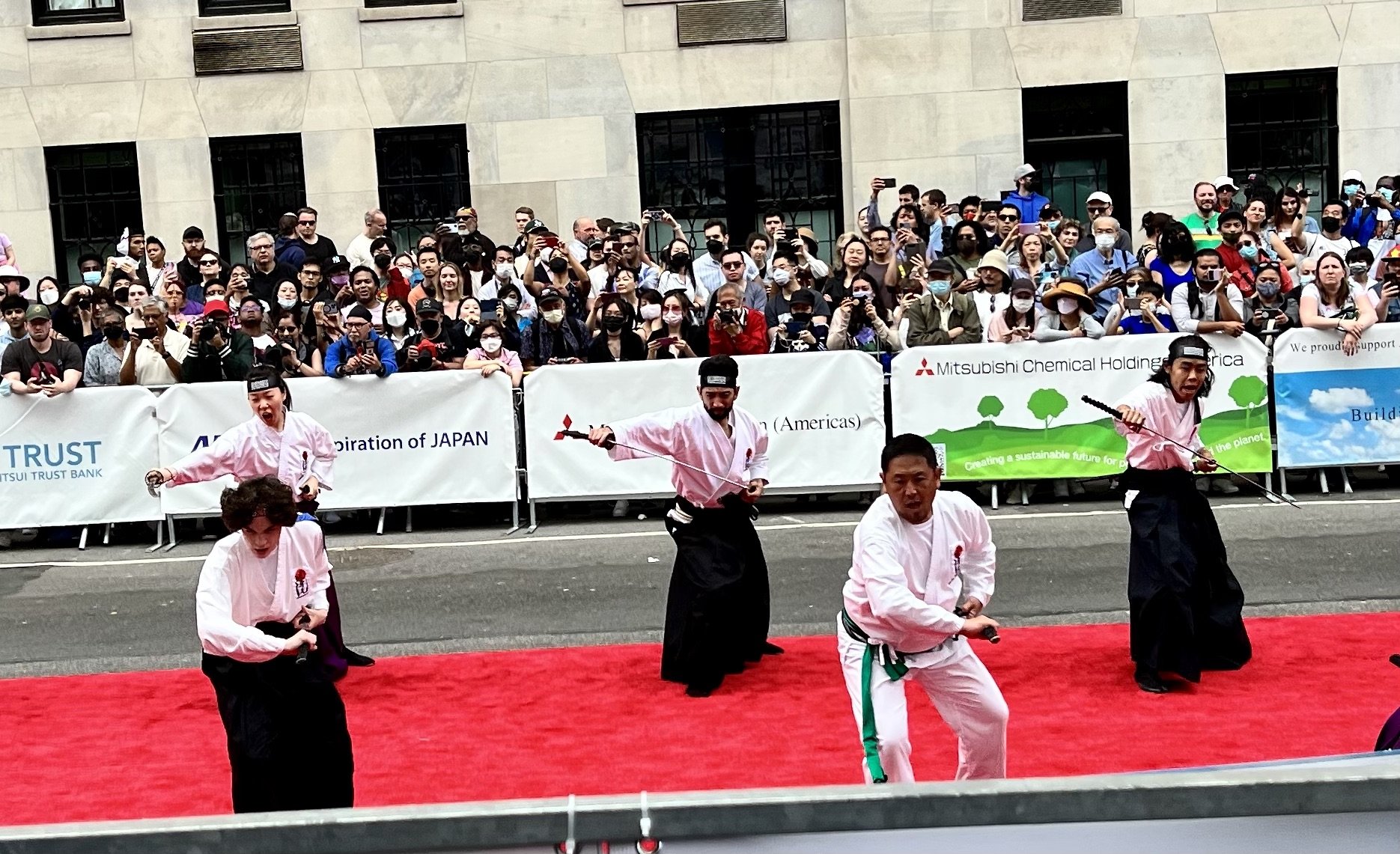
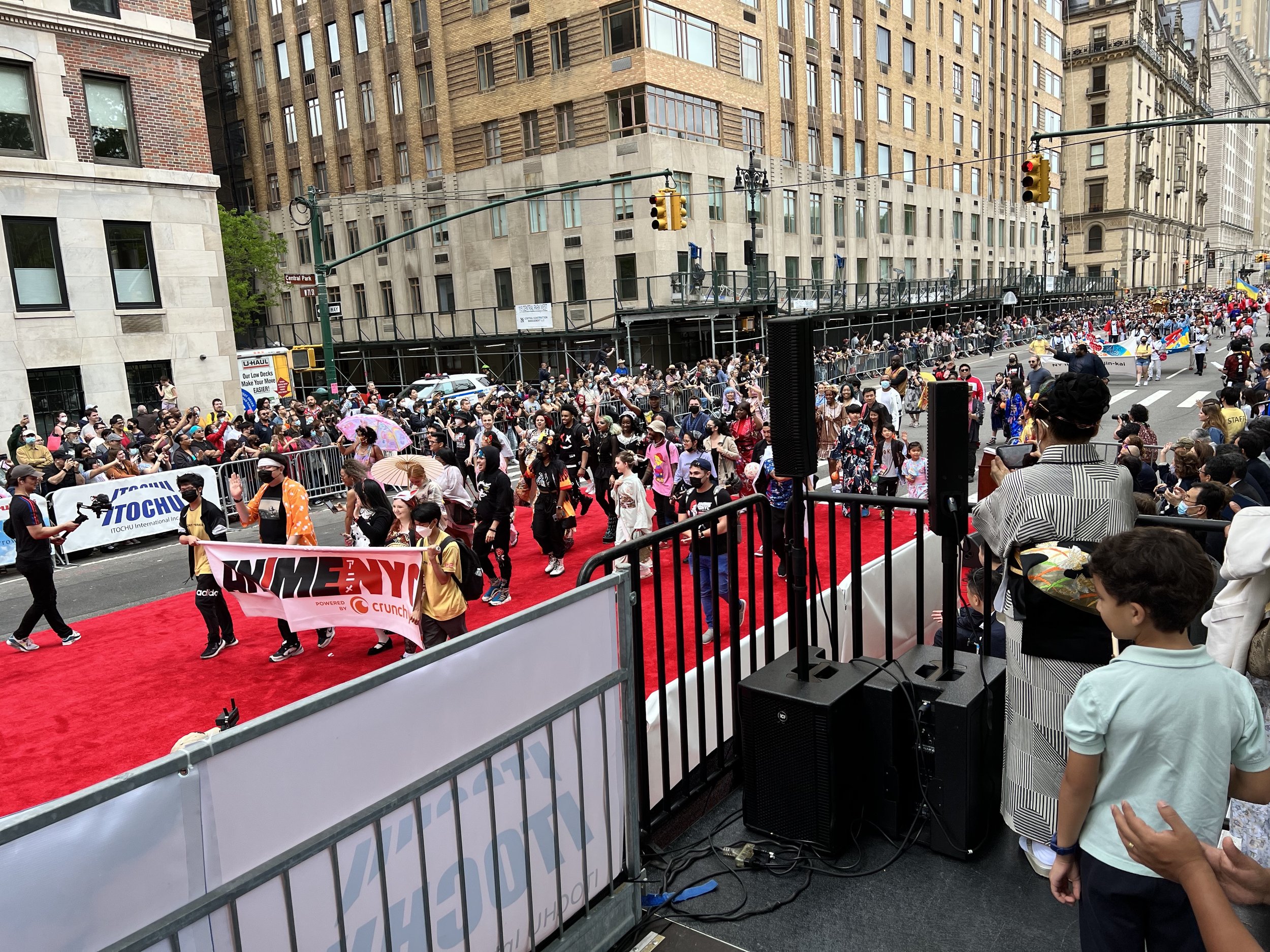
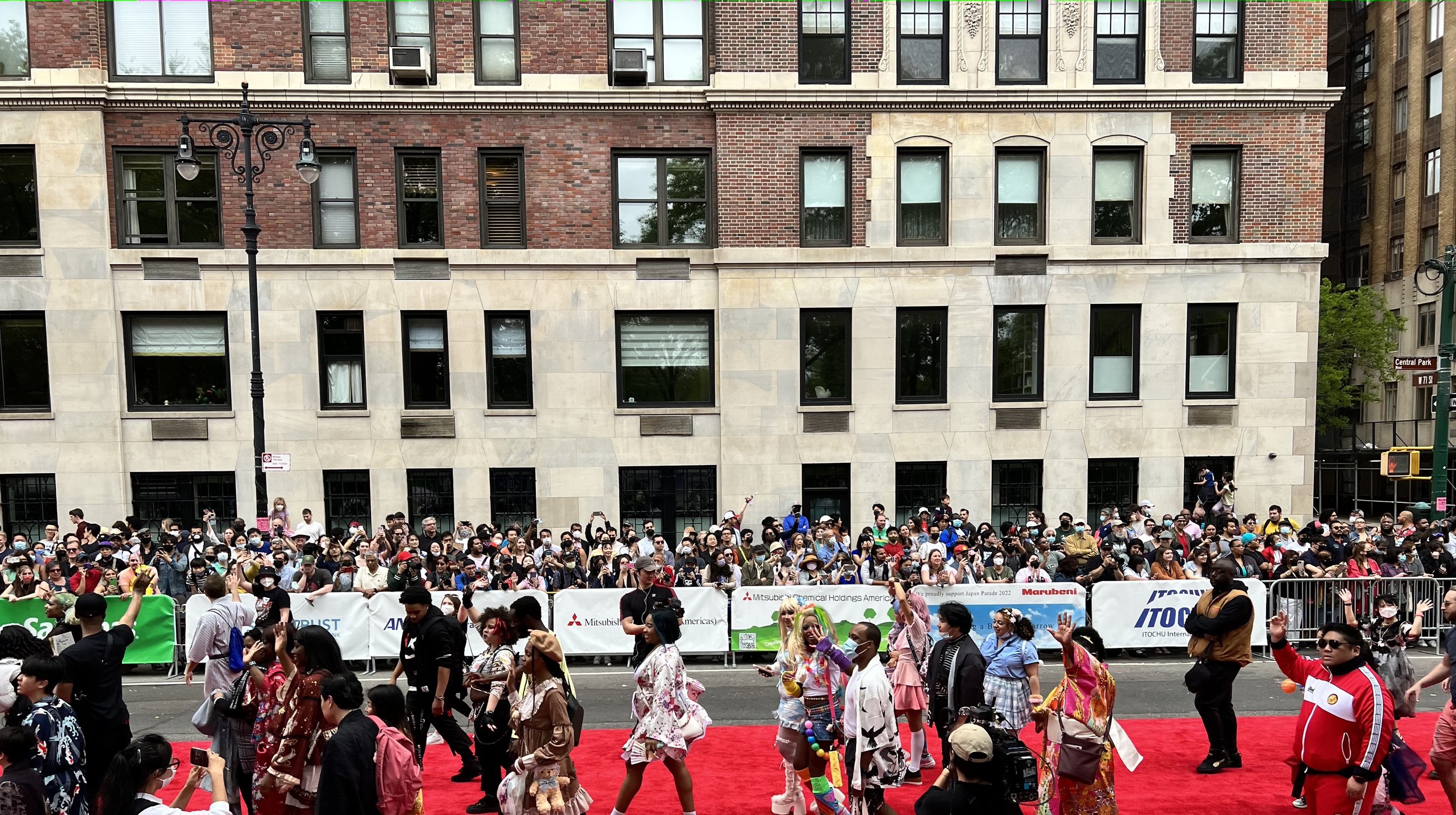
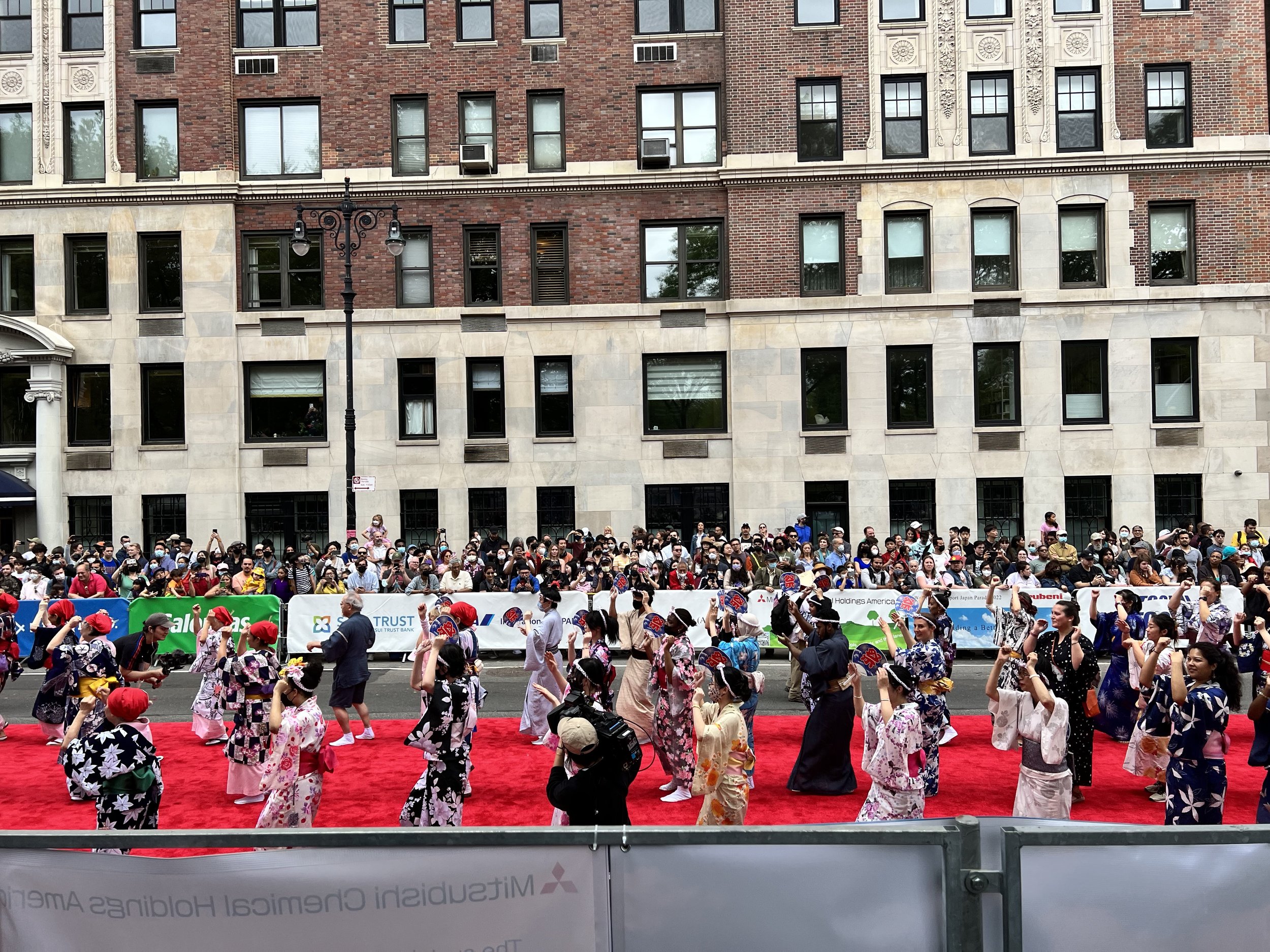
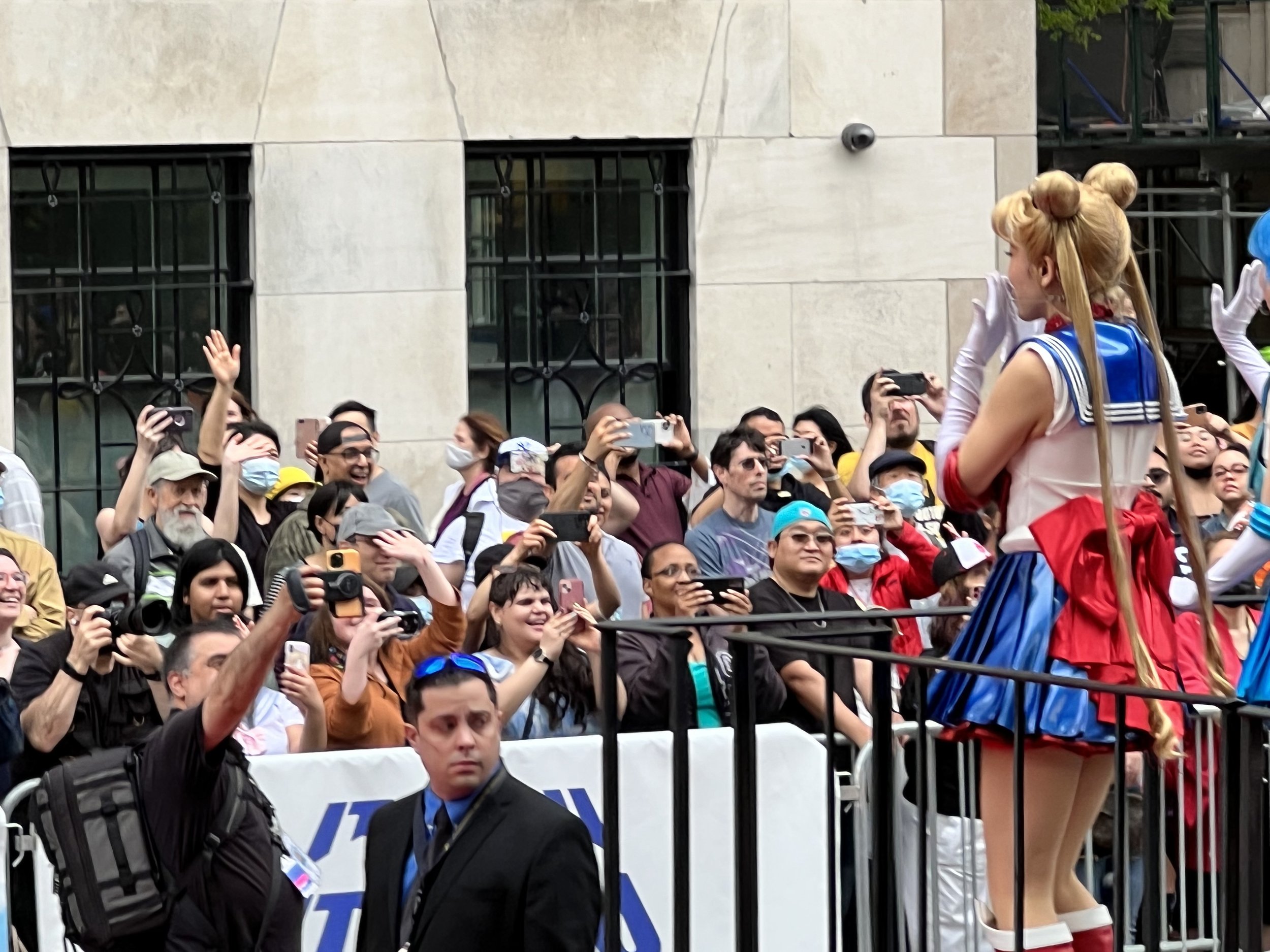
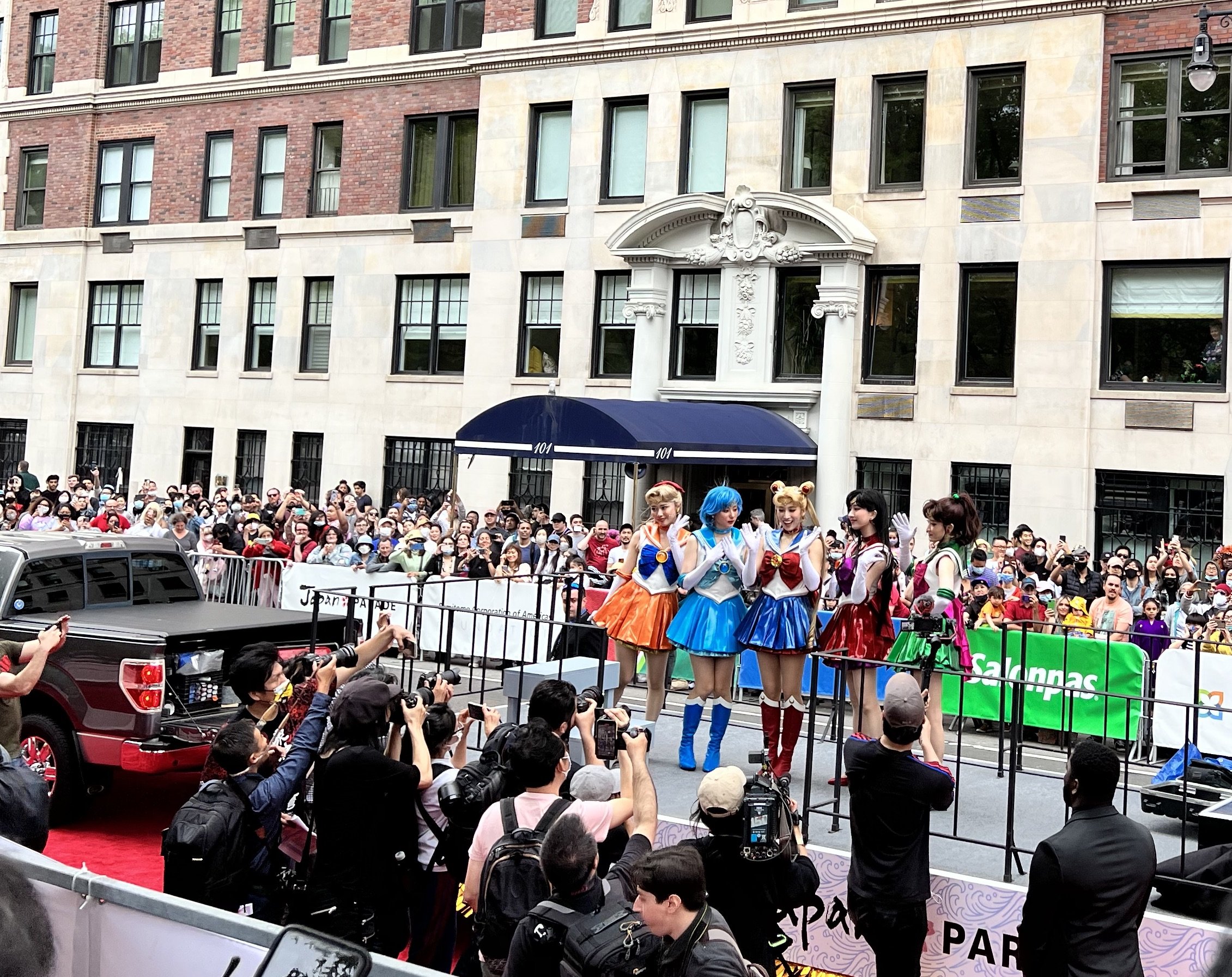
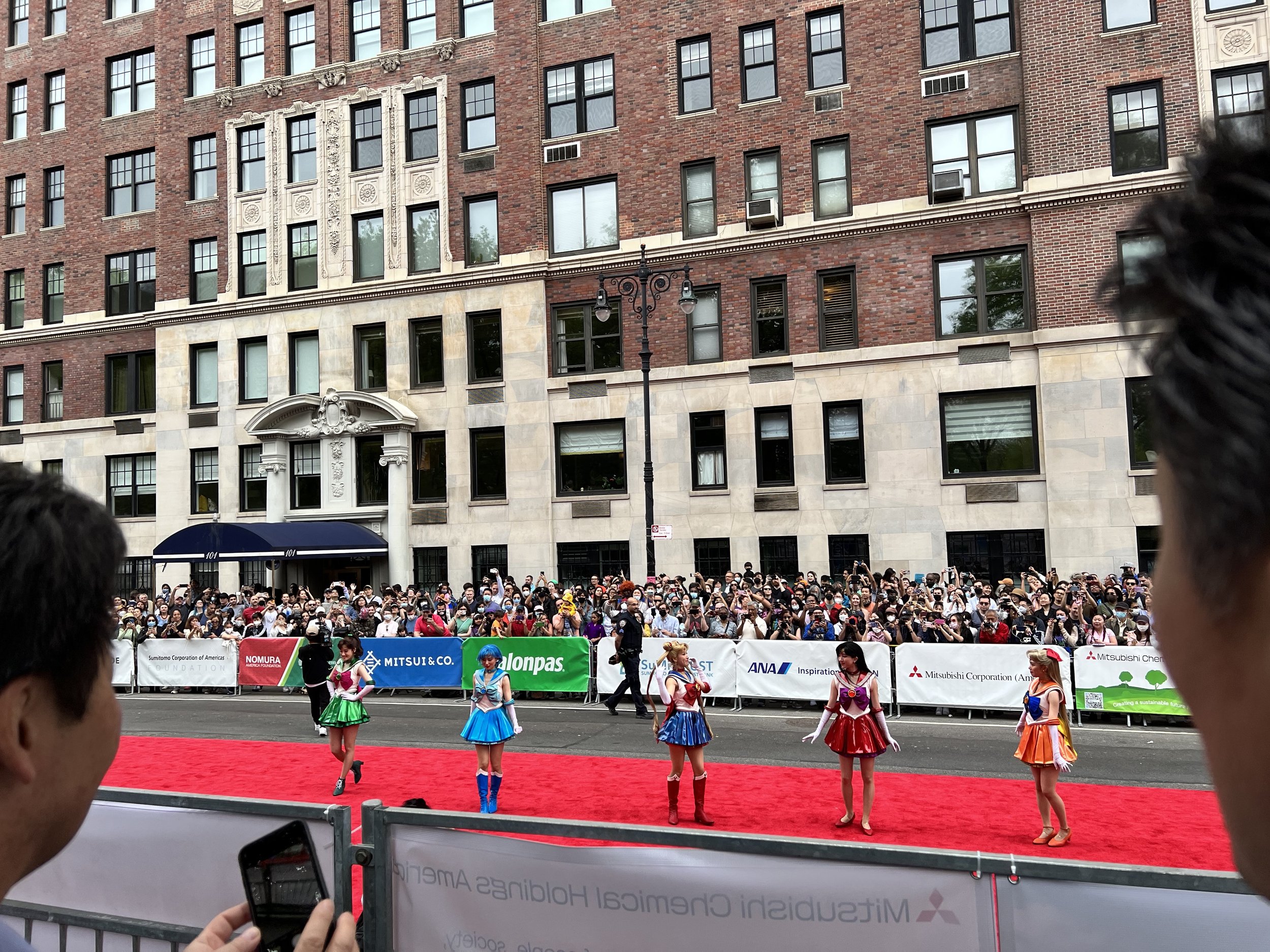

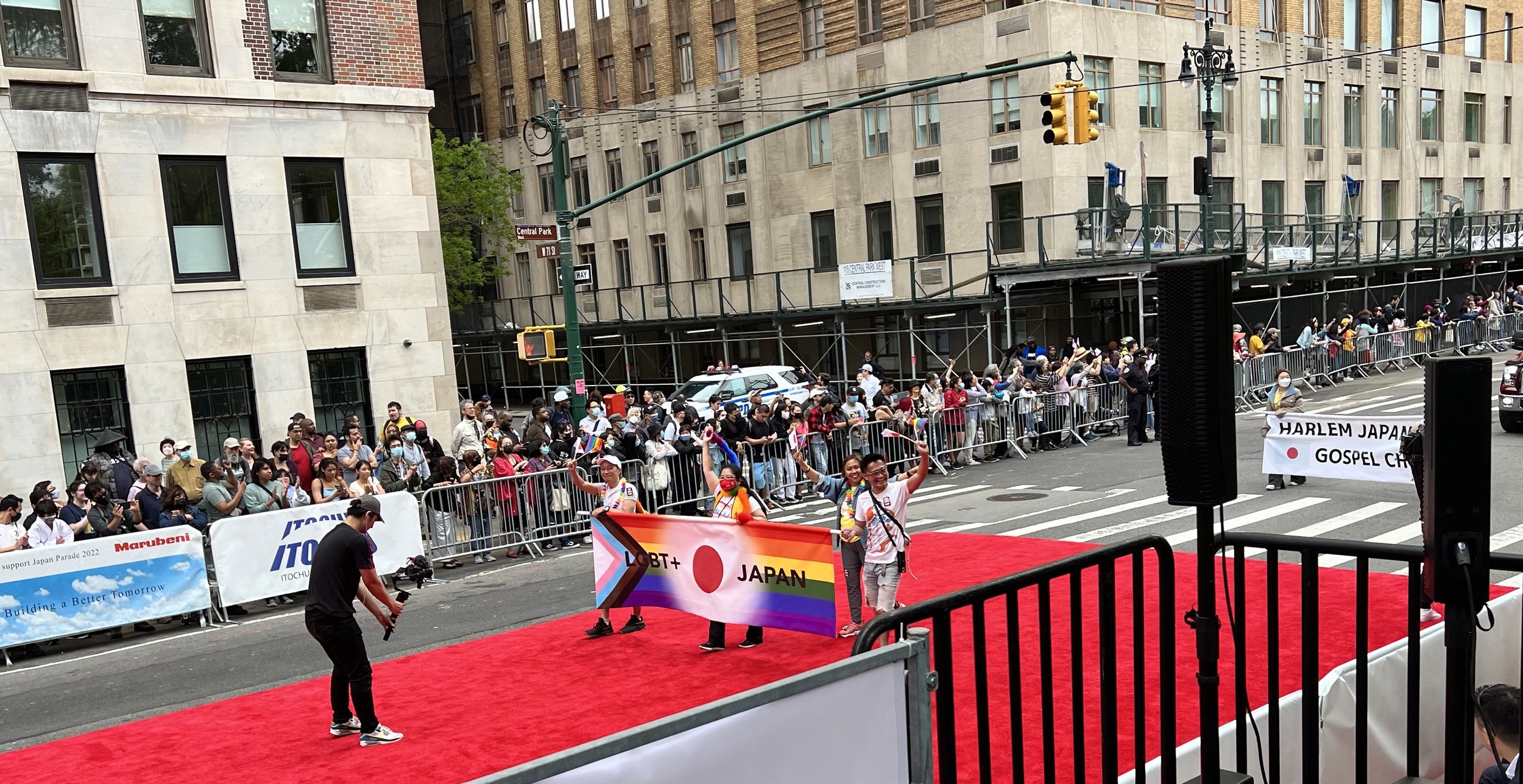
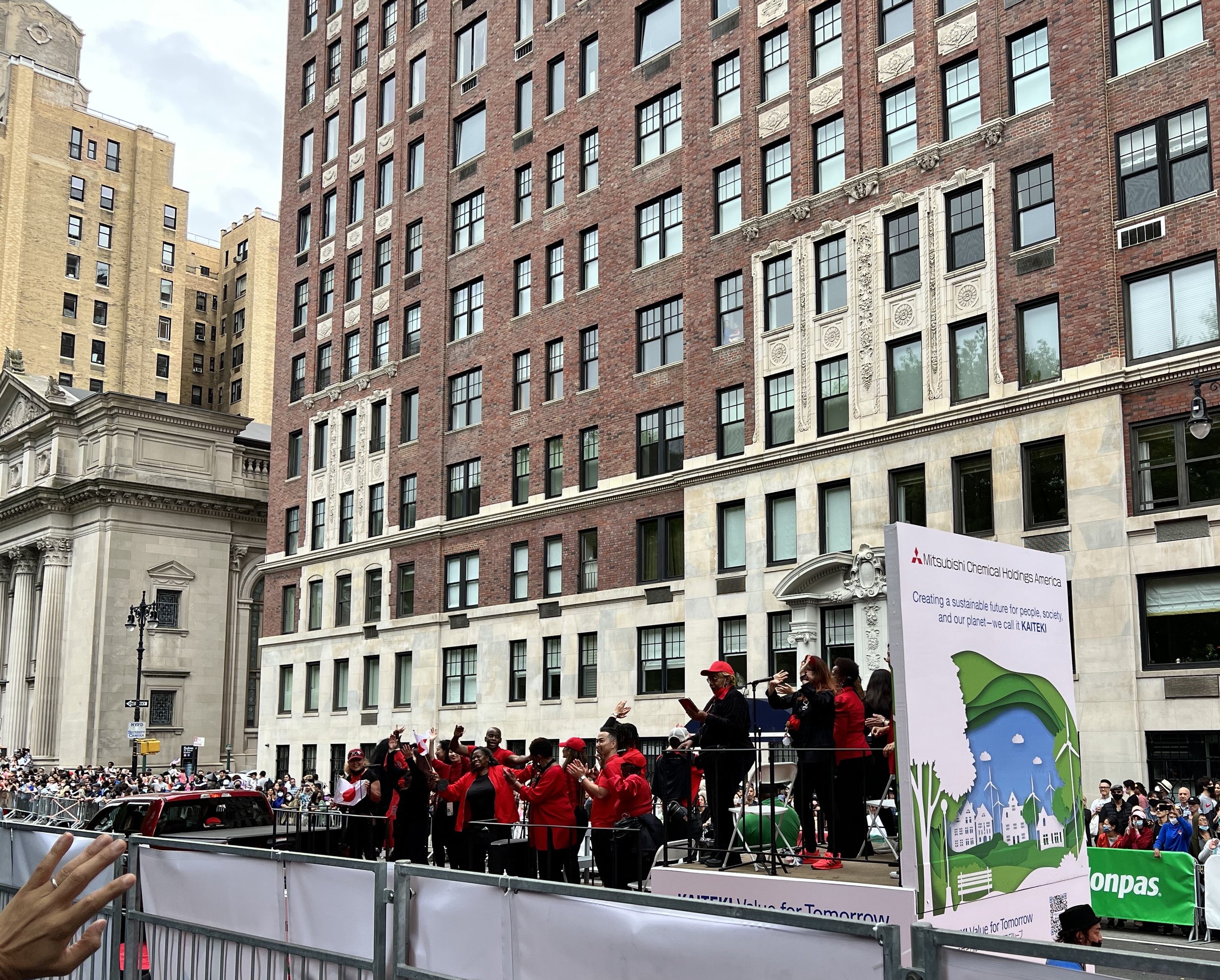
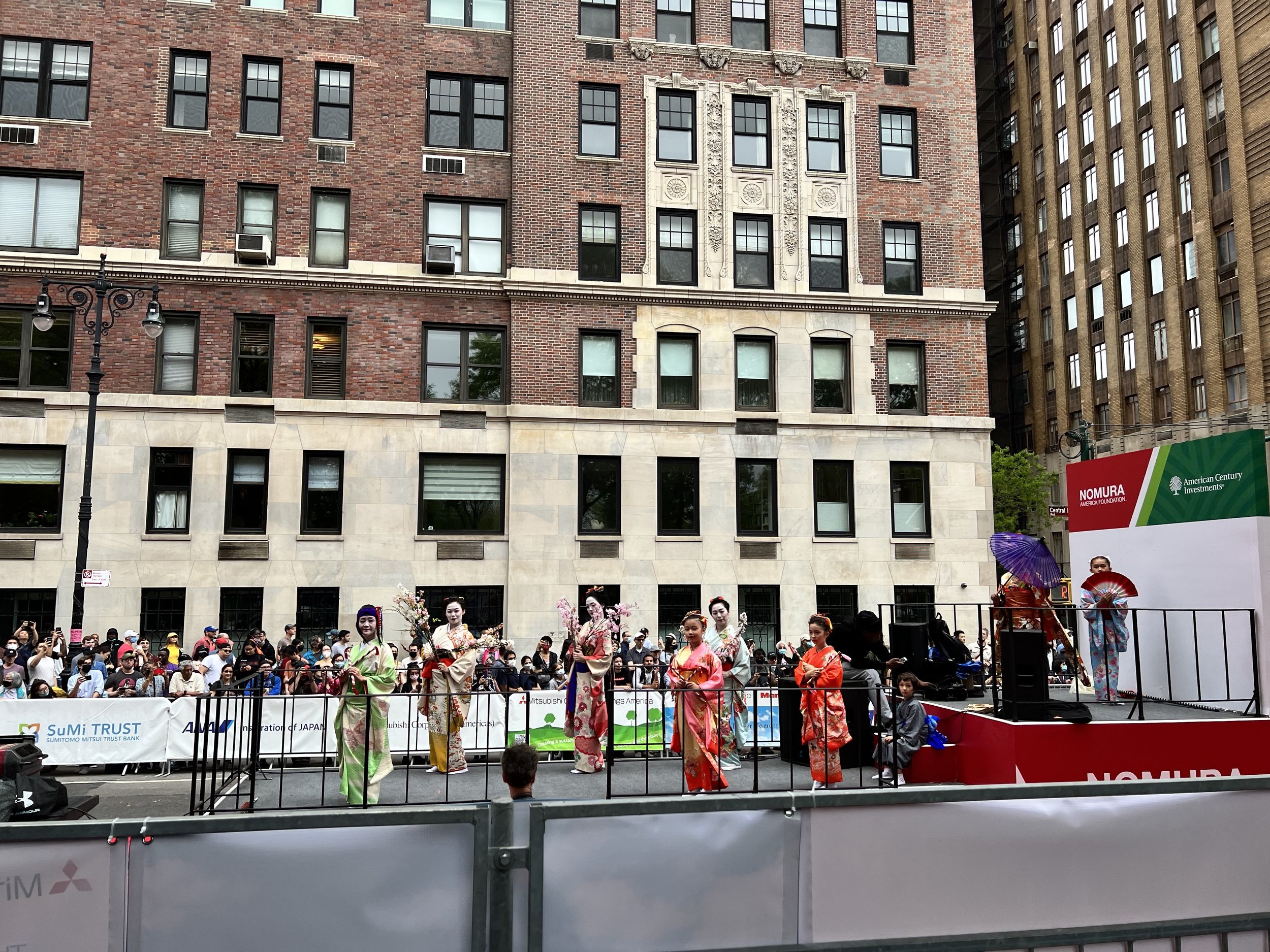
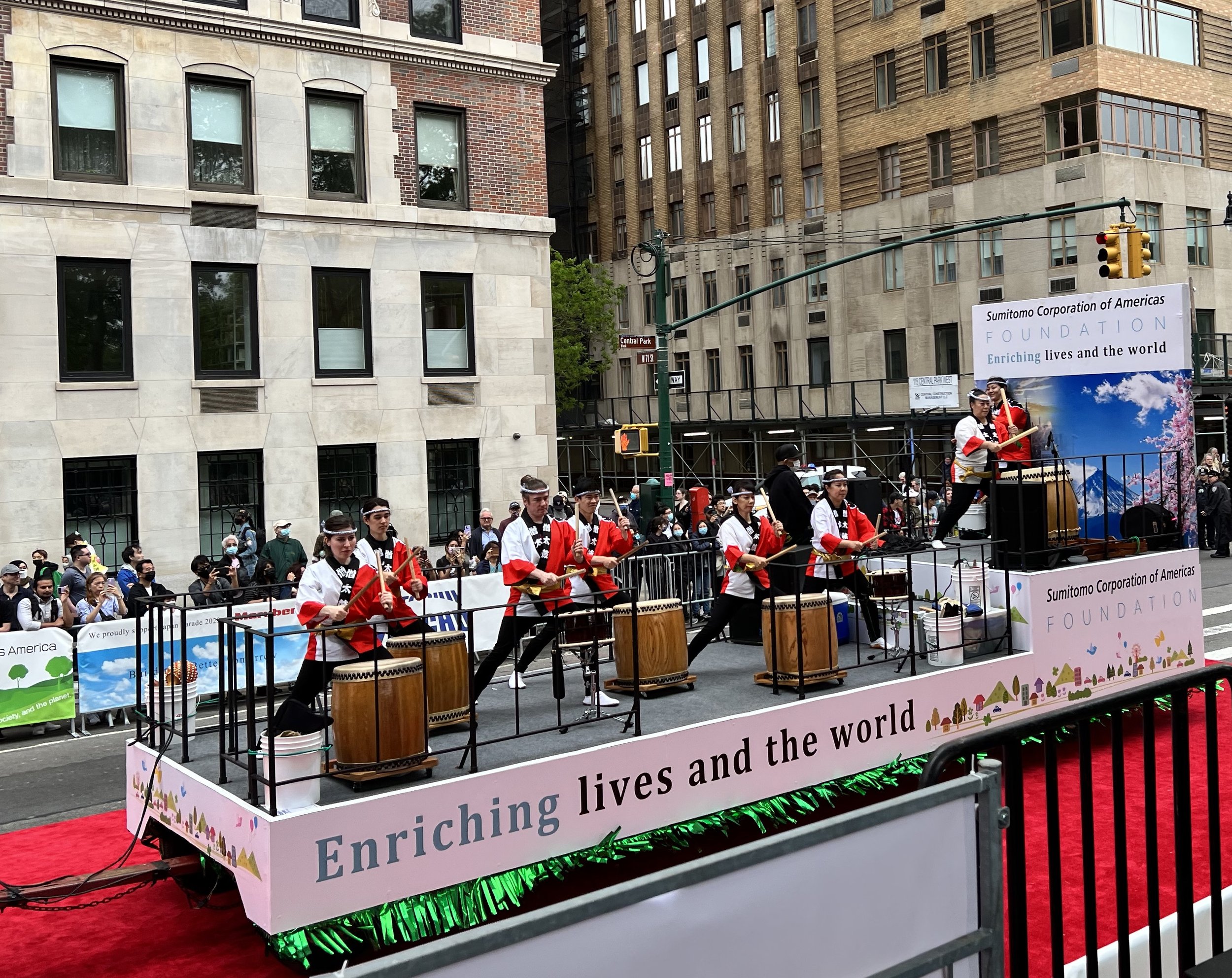
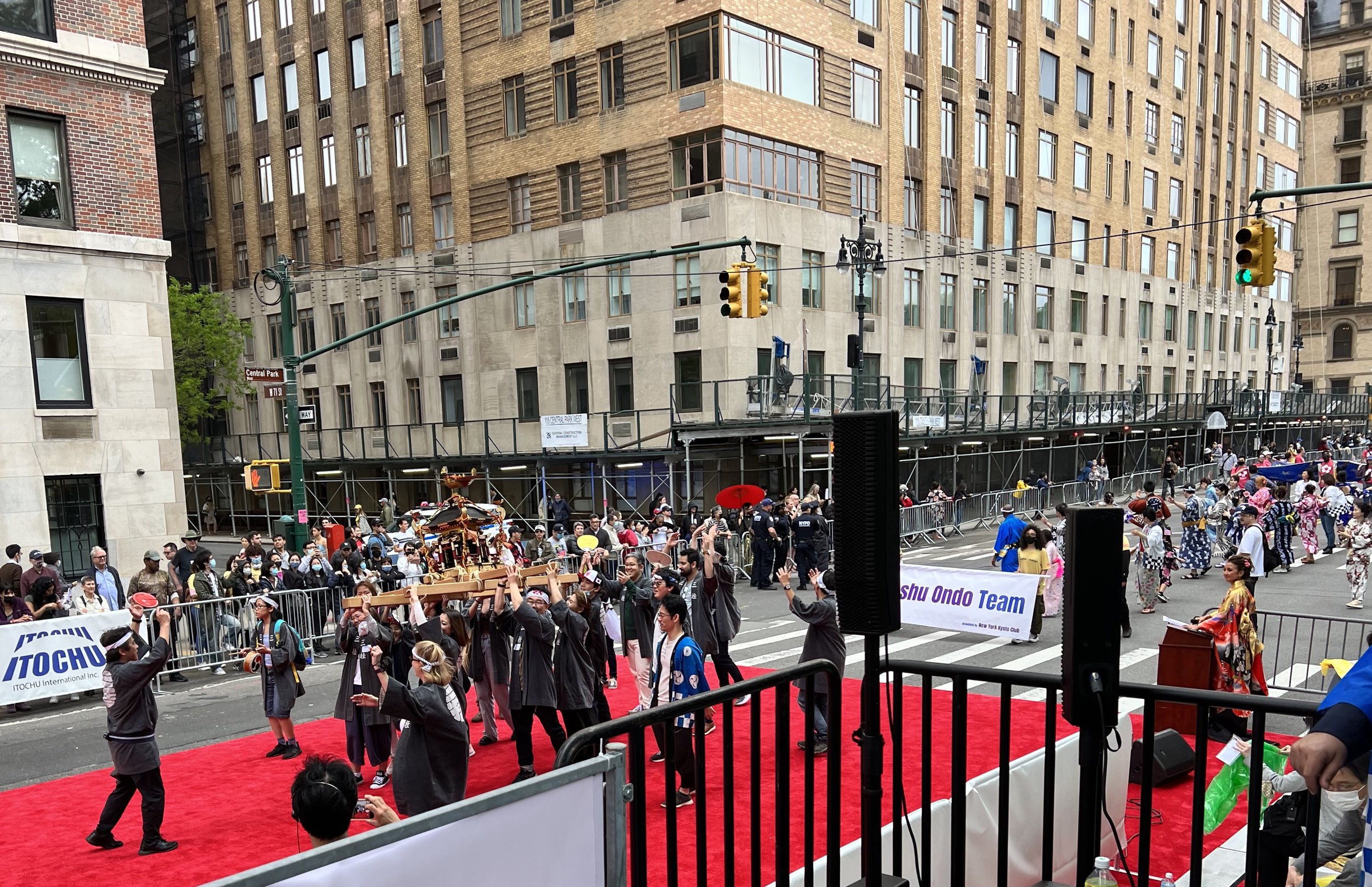
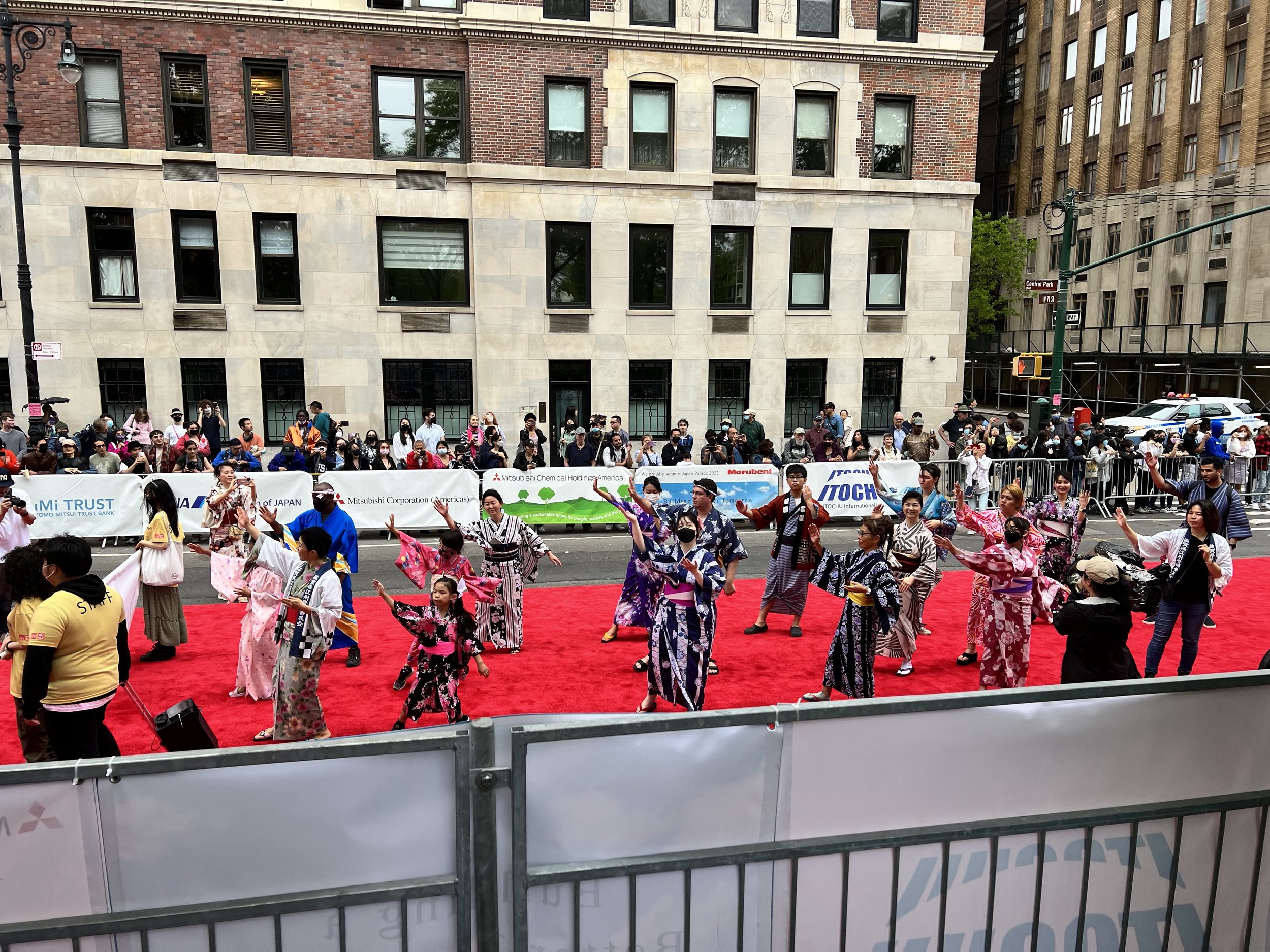
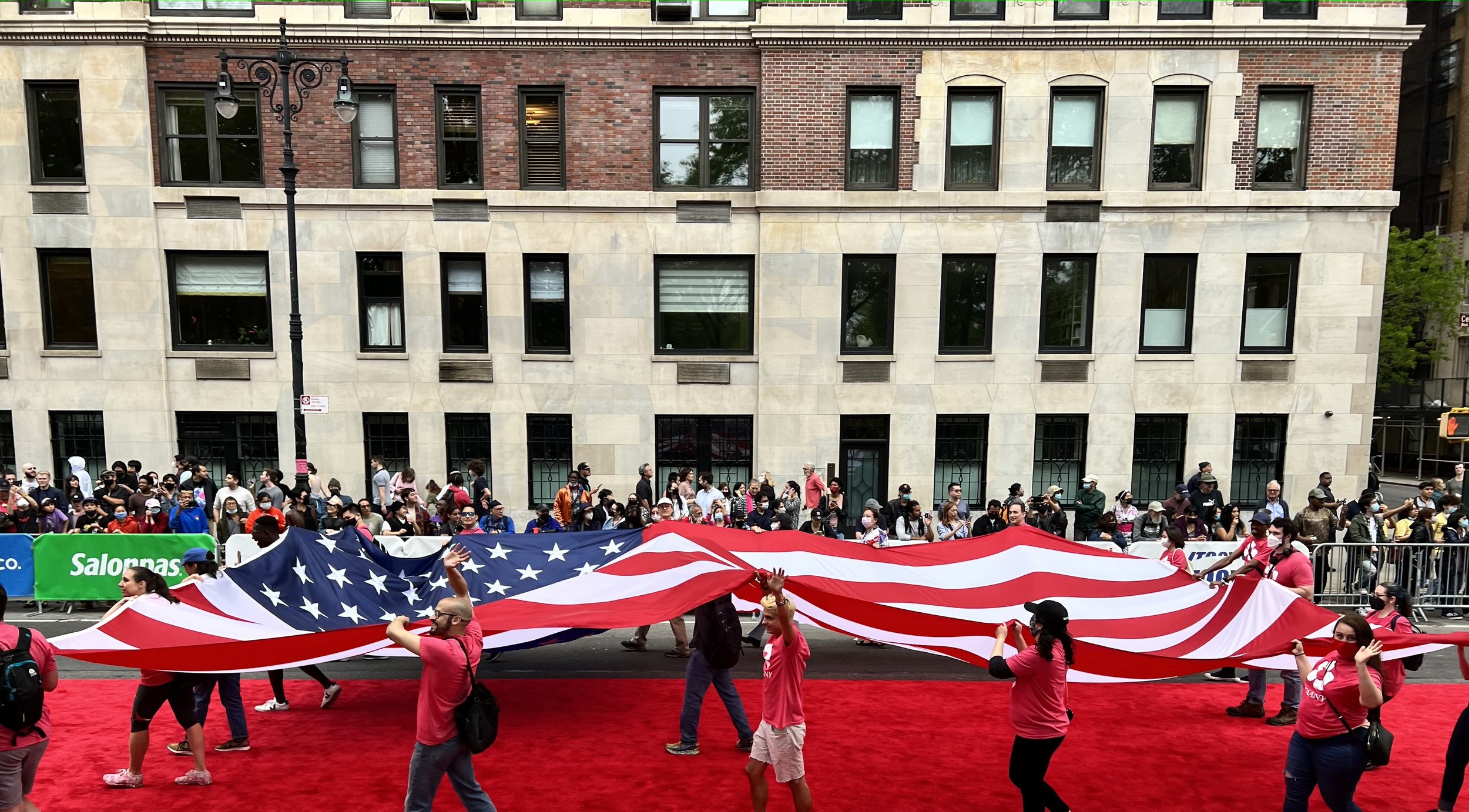
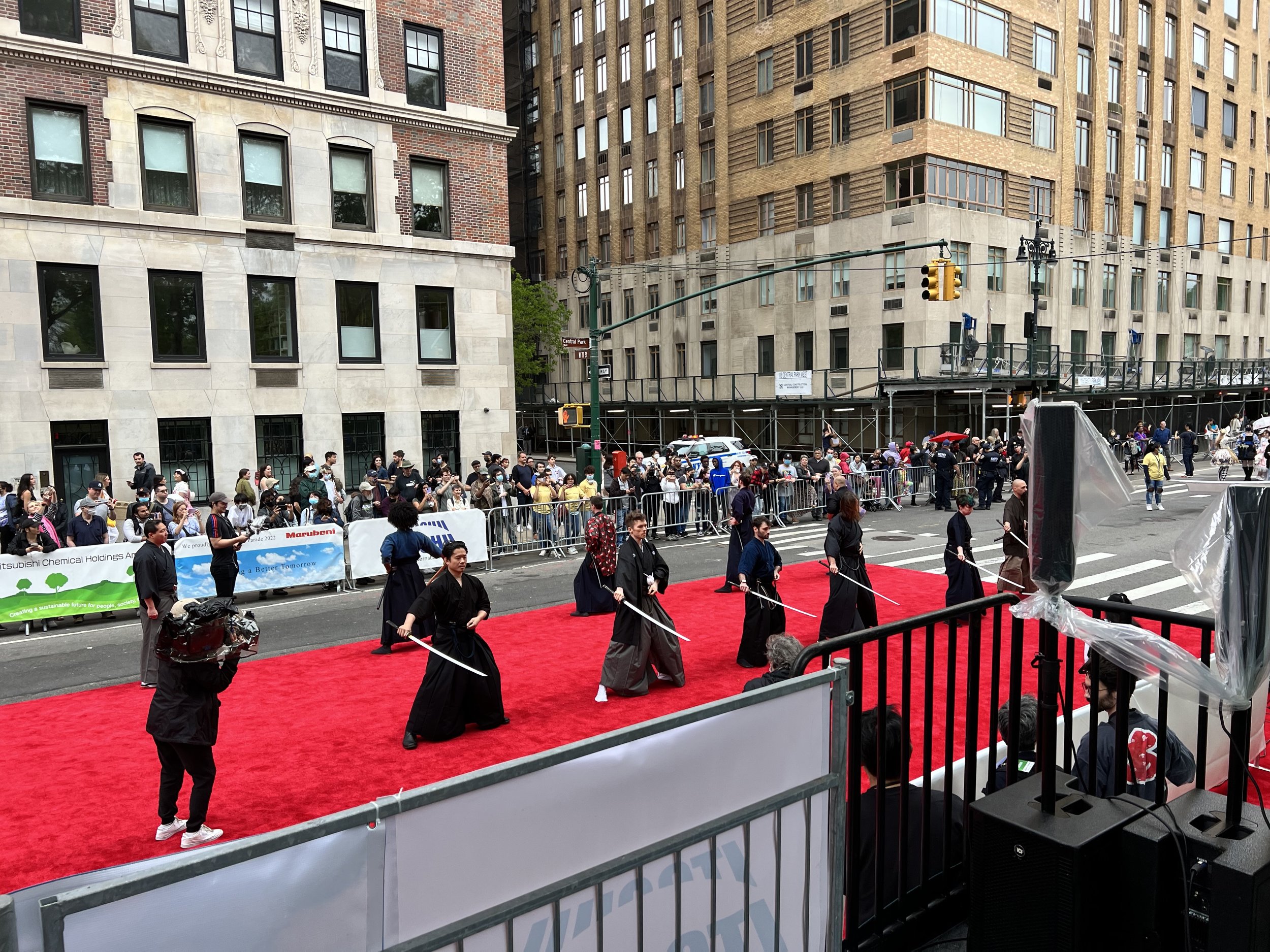
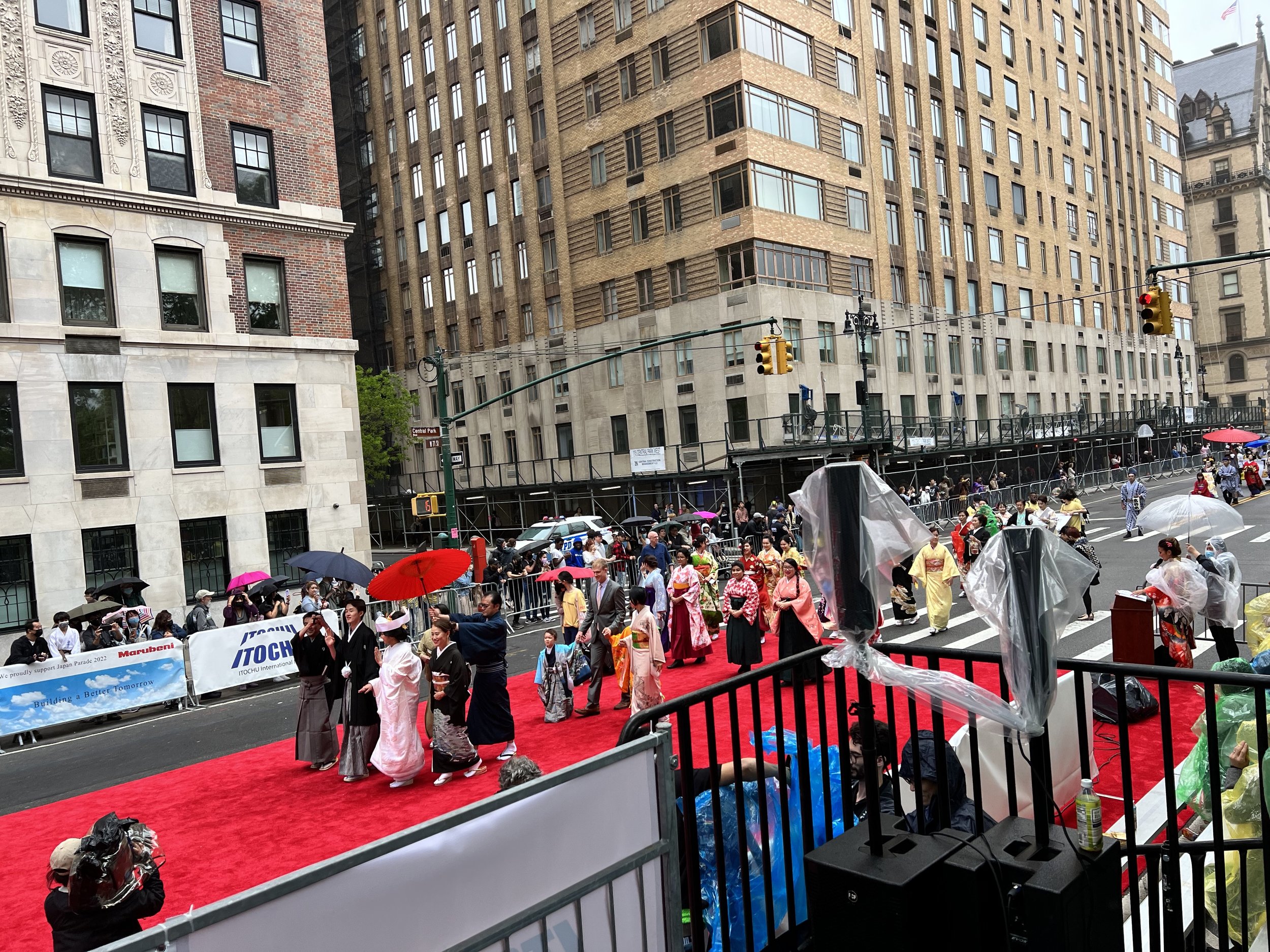
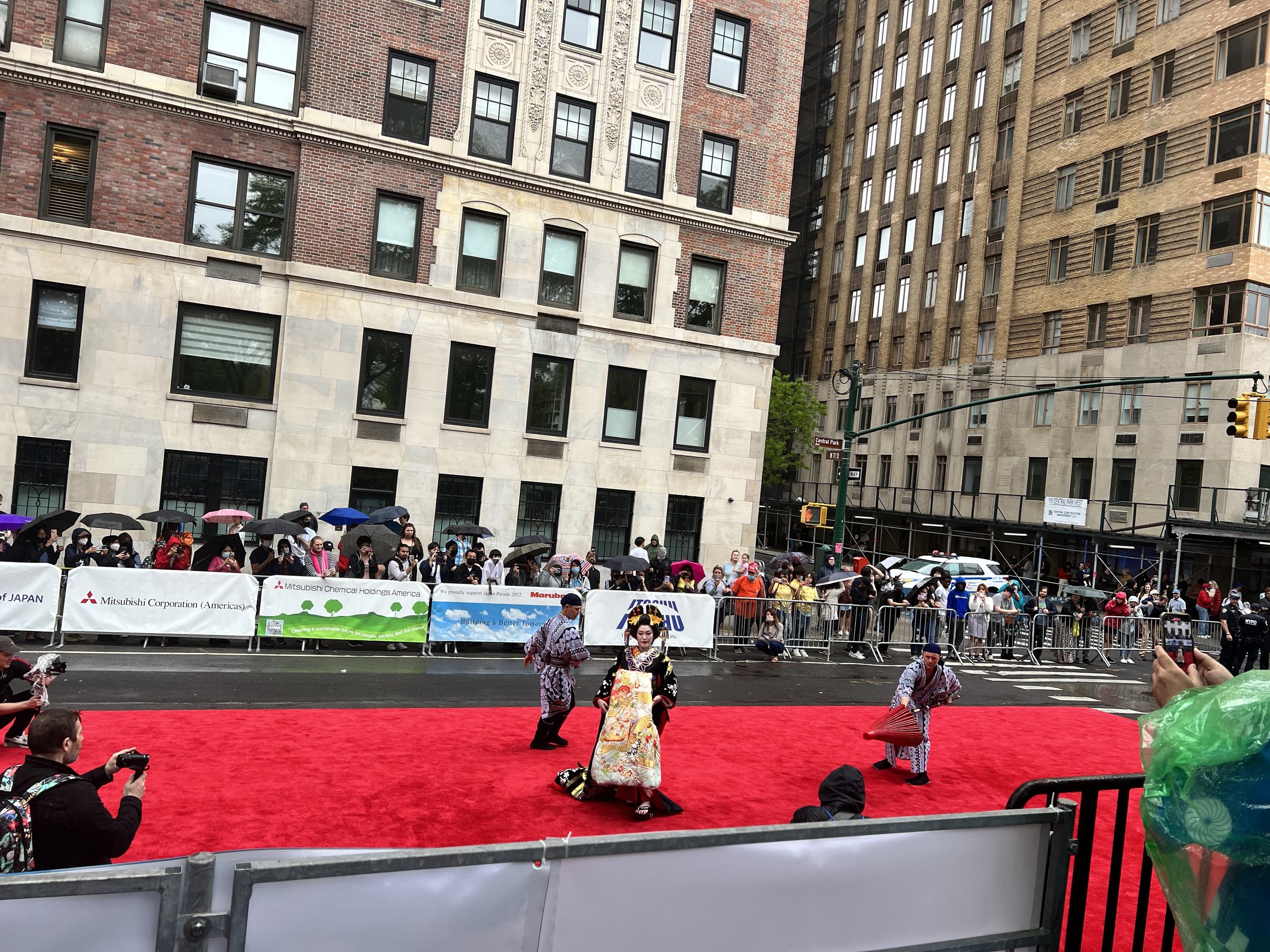
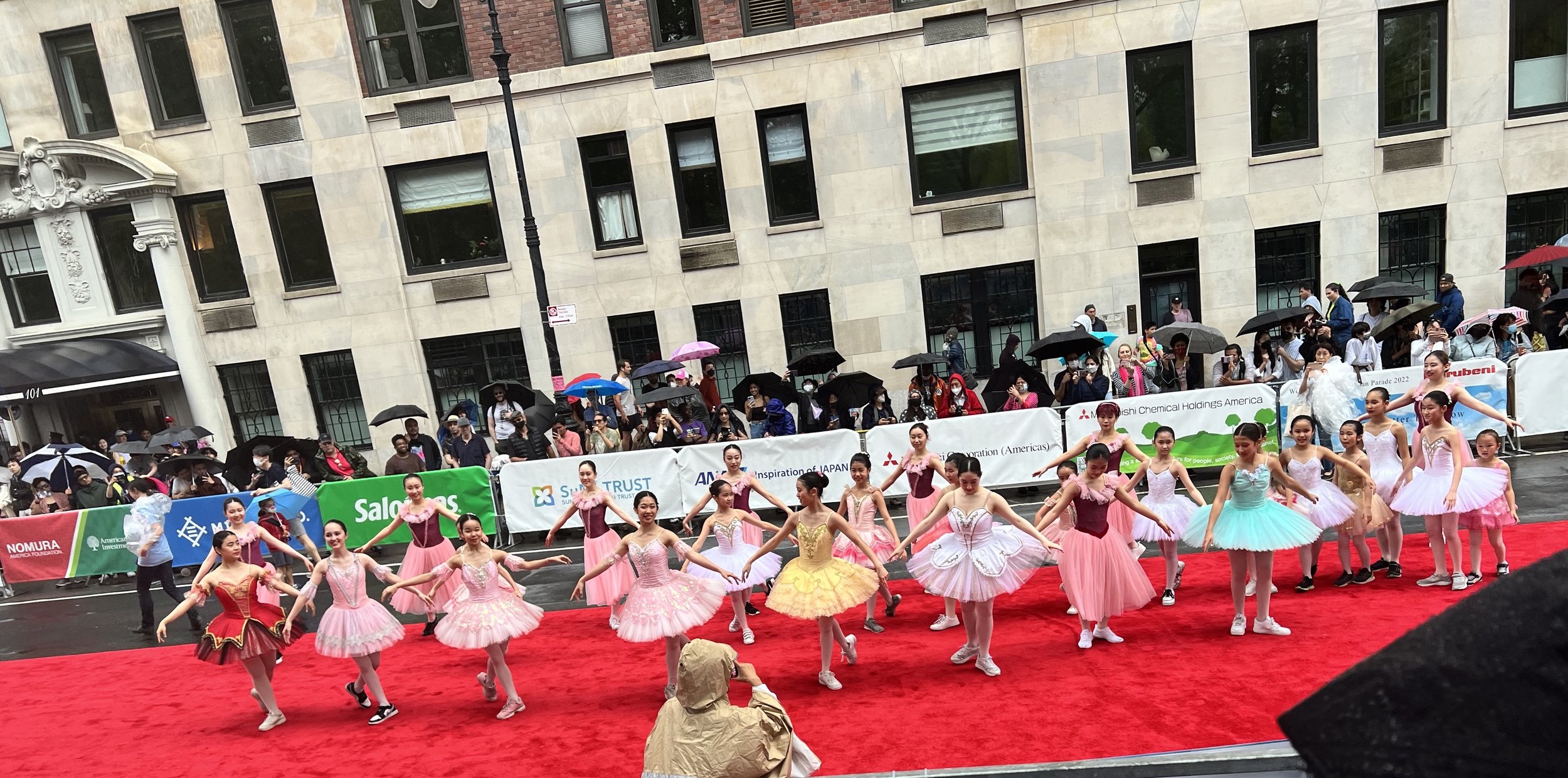
“The Japan Parade’s utmost goal is to be a foundation to forge new connections, and to be an inspiration to strengthen existing relations between Japan and the United States, as well as between the Japanese American community and the people of New York City,” said Japan Day Chairman of the Board of Directors, Daisuke Ugaeri, who represents the notable Japanese and Japanese American companies that make up the Japan Day Inc. Board of Directors. “To that end, I am humbled and empowered by the invaluable support of our sponsors, the trust placed in us by our parade participants, and the tireless efforts of our staff and volunteers who all truly believe in the good our event is capable of achieving. It is my greatest hope that all who visit, experience, and immerse themselves in Japan Parade 2023 will not only enjoy themselves to the fullest, but also walk away with a newly cultivated or renewed appreciation of the unique wonder and beauty of Japanese culture.”
Go early to enjoy the street fair and grab a spot along the parade route. Enjoy a full day of Japanese culture at Japan Parade! For more information, please visit Japan Parade’s website.
About Kristi Yamaguchi
Kristi Yamaguchi captured the gold medal in figure skating at the 1992 Winter Olympics in Albertville, France. She is also a two-time World Champion and US National Champion. Yamaguchi is a member of the US Figure Skating Hall of Fame, the World Figure Skating Hall of Fame, and the US Olympic Hall of Fame. She recently received the USOPC Jesse Owens Olympic Spirit Award for “serving as a powerful force for good in society.”
Following a long and successful career in professional figure skating, which included ten years of touring with Stars On Ice, Yamaguchi took to the dance floor to win the mirror ball trophy with partner Mark Ballas in season six of the popular TV show Dancing With The Stars.
In 1996, she founded Kristi Yamaguchi’s Always Dream, whose mission is to give children from low-income families access to high-quality books in the home environment. The organization aims to close the opportunity gap and digital divide with an innovative, family engagement literacy program. For her work with her Always Dream organization, Yamaguchi received the 2019 Heisman Humanitarian Award.
In 2012, Yamaguchi added New York Times Best-Selling author to her list of achievements by introducing her first children’s picture book, Dream Big, Little Pig!, and then following up with It’s a Big World, Little Pig! and Cara’s Kindness. Kristi resides in the San Francisco Bay Area with her husband, two-time US Olympian and Stanley Cup Champion, Bret Hedican, and their daughters, Keara and Emma.
About Sandra Endo
Sandra Endo is a television news correspondent on KTTV Los Angeles, Fox 11 News. Endo covers breaking news in feature reports for a Good Day LA. Prior to moving back to her hometown of Los Angeles, Endo spent most of her career on the East Coast a political reporter, host, and anchor for NY1. She covered a wide array of campaigns, the transit strike of 2005, and the terrorist attacks of September 11, 2001. Later, as a Washington, DC-based reporter for CNN, Endo’s stories appeared on primetime shows such as AC 360 with Anderson Cooper. She reported on the devastating tsunami and earthquake that struck Japan in 2011, as well as the international conflicts in Egypt and the US involvement in Libya.
Endo is a second-generation Japanese American whose grandfather was interned during WWII. She believes it is important to teach her two young children their cultural heritage to keep traditions alive and to learn from the past.
About Japan Day
Japan Day Inc., a 501(c)(3) non-profit organization, is the primary organizer of the Japan Day @ Central Park festivals since 2007 and of the Japan Parade and the Japan Street Fair since 2022. Japan Day Inc.’s activities are made possible by the support of the local leading Japanese American companies that compose Japan Day Inc.’s Board of Directors; the Consulate General of Japan in New York; and all the individuals, organizations, and companies that sponsor, donate, or volunteer and be a part of this great celebration.
JAPAN SOCIETY’S KODOMO NO HI
Children's Day: Kodomo no Hi
Sunday, May 7
Session 1: 10:30 a.m. until 12:30 p.m.
Session 2: 1:00 p.m. until 3:00 p.m.
Japan Society – 333 E. 47th Street (between 1st and 2nd Avenues)
Admission: $15 | $10 Japan Society members | Free children ages 2 and under and Cool Culture members
Carp streamers flying can only mean one thing: Children’s Day is here!
Share the joy of childhood as Japan Society celebrates Japan’s national holiday packed with fun for the whole family. Every child is a star as they pose with life-sized samurai armor displays and take to the stage in a popular sword-fighting workshop led by Kyo Kasumi from TATE Hatoryu NY. Families will also be captivated by the beauty of traditional Japanese dance through an enchanting performance by Sachiyo Ito & Company.
Image © Ayumi Sakamoto
Children can design their own koinobori carp streamer and wearable origami kabuto helmet. The excitement doesn’t end when you leave: There will be take-home craft kits for you to continue the fun at home!
For more information and to register, please visit Japan Society’s website.
Looking to deepen your understanding and appreciation of Japanese culture? Look no further than JapanCulture•NYC's membership program!
As a member, you'll gain access to exclusive content about events, workshops, and resources that will immerse you in the fascinating world of Japanese art, cuisine, history, and more. Whether you're a seasoned Japanophile or just beginning to explore this rich cultural tradition, our membership program offers something for everyone. From crafting classes to kimono-wearing workshops, from sake tastings to film screenings, you'll discover new facets of Japanese culture and connect with like-minded individuals who share your passion.
So why wait? Sign up for our membership program today!
44th Asian Pacific American Heritage Festival
Saturday, April 29 from 11:30 a.m. until 6:00 p.m.
Chelsea – 8th Avenue between 21st and 22nd Streets
Admission: Free
The Coalition of Asian Pacific Americans (CAPA) are hosting United We Stand, a festival celebrating Asian American and Pacific Islander Heritage Month, which begins Monday, May 1. The spotlight will shine on a wide range of wonderful organizations, programs, and companies in the Pan Asian American community. There will be arts and crafts booths and vendors, including a Peking duck crepe maker!
With its beginnings as Asian/Pacific American Heritage Week in May 1979, CAPA has hosted fun-filled outdoor festivals bringing together diverse Asian American cultures through education and interaction. Its Asian American Community Hub serves to promote and amplify work that Asian American organizations have been providing to our community. CAPA provides an excellent opportunity to get to know and get involved with active Asian American organizations.
What CAPA Does
Promotes connection, communication, and collaboration among Asian American organizations
Fosters relationships within and outside the Asian American community
Promotes, represents, and advocates for the issues and interests of Asian American and Pacific Islander communities
Provides an environment to encourage Asian Americans to use their history, culture, and art to foster self-esteem and respect for our heritages while sharing Asian American cultures and contributions to society
Stop by the festival to learn more!
Announcing the japanculture•NYC membership program!
Since 2011 JapanCulture-NYC.com has been your English-language resource for All Things Japanese in New York City. We have a fresh look, and now we’d like to announce our new membership program! For only $5 a month, you’ll have access to exclusive content and cool benefits.
Don’t worry; everyone will still be able to read articles on the website for free. But your membership to JapanCulture•NYC will help maintain the high quality of our site while we continue to showcase and support our community. Click here to begin your membership today!
benefits of membership
MONTHLY NEWSLETTER
We’ll send in-depth articles about Japanese cultural tidbits and how to find All Things Japanese in New York City that you won’t find on the website.
DISCOUNTS
Members will get access to exclusive promo codes to receive discounts on concerts, film screenings, performances, dinner events, books, and more!
Our first discount is to the Globus Film Series Rites of Passage: The Films of Shinji Somai that begins at Japan Society on Friday, April 28. To receive the code for $2 off any General Audience ticket, become a member of JapanCulture•NYC today! (This code for Rites of Passage cannot be used for additional discounts on Student/Senior/Japan Society member tickets.)
DOWNLOADABLE PDFS
Members will receive occasional lists of Japanese holidays and observances, cultural tidbits, food and drink, and where to find all of the above in NYC.
The most valuable benefit from a membership to JapanCulture•NYC is the connections that we’ll create with each other and the community we’ll continue building together. Learn about your favorite aspects of Japanese culture, eat your favorite Japanese food, and meet the creatives, businesspeople, and community leaders who make New York so special.
sponsorship program
We’ve also launched a Sponsorship Program! We’ll spotlight you on our website and our social media to gain more exposure for your business, event, purpose in the Japanese and Japanese American community in New York. Your support will enable us to continue providing informative and entertaining content about All Things Japanese in New York City. For more information, please click here.
Thanks to Stay Sassy Media for our amazing redesign and to Wasabi Kikaku for their many years of support!
JAA’s 18th Sakura Matsuri
Saturday, April 22 from 11:00 a.m. until 1:00 p.m.
Flushing Meadows Corona Park
Admission: Free
The Japanese American Association will hold its 18th Sakura Matsuri at Flushing Meadows Corona Park on Saturday, April 22. The program begins at 11:00 a.m. rain or shine and features performances by taiko drumming group Soh Daiko, the Japanese Folk Dance Institute of New York, the JAA Chorus, and the New York Okinawa Club with Jimpu-Kai New York. In addition, there will be a tea ceremony on the lawn by the Urasenke Tea Ceremony Society. Yours truly is honored to serve as emcee.
Bring a blanket and a bento and enjoy the cherry blossoms! For more information, please visit JAA’s Facebook page.
The History of JAA’s Sakura Trees
Symbolizing the friendship between Japan and the U.S., in 1912 Japan gave a gift of sakura trees the Washington, D.C., as well as 2,000 sakura trees to New York City, thirteen of which were planted in Claremont Park, now Sakura Park. JAA’s “21st Century New York Cherry Blossom Project” began on Arbor Day, April 24, 1992, at City Hall Park. Sakura seeds donated by The Cherry Association of Japan were presented by then JAA President Shigeru Inagaki to Betsy Gotbaum, then Commissioner of New York Parks.
The seeds were nursed in the greenhouses of Van Cortlandt Park, and JAA volunteers planted 168 trees in a design created by the noted landscape artist Kan Domoto with George Yuzawa in 2001. Working in close cooperation with the Flushing Meadows Corona Park staff, JAA has donated and planted hundreds of sakura trees.
2023 Honoree
This year a cherry tree will be planted in honor of Mr. Takeshi "Tak" Furumoto, who was born in a Japanese American internment camp during World War II, was raised in his parents' native Hiroshima after the atomic bombing, returned to the US for college, and eventually served our country in Vietnam. He has dedicated his life to the betterment of the Japanese American community, and this year he was successful in helping the state of New Jersey adopt January 30 as the Fred Korematsu Day of Civil Liberties and the Constitution.
Disclosure: The author is a Vice President of JAA and the chair of the Sakura Matsuri committee.
Shibutani Book Launch
Tuesday, April 18 from 5:30 p.m. until 7:00 p.m.
Yu and Me Books – 44 Mulberry Street
Admission: Free
Olympic ice dancing medalists Maia Shibutani and Alex Shibutani will be at Yu and Me Books in Chinatown for the launch of their new book, Amazing: Asian Americans and Pacific Islanders Who Inspire Us All.
About the Book
This beautifully illustrated children’s picture book highlights the achievements of many Asian Americans and Pacific Islanders who have made invaluable contributions to the world. Written with journalist Dane Liu and illustrated by Aaliya Jaleel, Amazing’s inclusivity sets it apart in its exploration of thirty-six inspirational AAPI figures, including civil rights hero Daniel Inouye, immigrant astronaut Kalpana Chawla, and biracial entertainer Dwayne “The Rock” Johnson.
The Shibutanis felt compelled to create a book showing the undeniably positive impacts that Pacific Islanders and Asian Americans have made in this country and around the world. With quick and accessible biographies written with Liu, readers will learn about important figures who have shaped life-altering policy, made indelible marks on pop culture, and achieved their greatest dreams—paving the way for future generations to make lasting change.
“A thoughtful and comprehensive survey of the ways in which Asian Americans and Pacific Islanders have shaped, and will continue to shape, the United States. Throughout, the prose is clear, concise, and well crafted, incorporating details that will enthrall young readers.”
—Kirkus Reviews
About the Shibutanis
Maia and Alex Shibutani are two-time Olympic bronze medalists who became the first ice dancing team of Asian descent to medal at the Olympics. Off the ice, the “ShibSibs” are goodwill ambassadors and storytellers who are active on social media. Amazing: Asian Americans and Pacific Islanders Who Inspire Us All is their third book; they launched their “Kudo Kids” series of children’s middle grade mystery books in 2020.
About Yu and Me Books
Established by Lucy Yu, Yu and Me Books is the first Asian American female-owned bookstore in New York. A bookstore that’s also a café/bar, Yu and Me focuses on the strong, diverse voices of the AAPI community, with a focus on immigrant stories.
the zen of shopping with zenplus
This listing is made possible by ZenPlus.
The internet has made the world smaller. People connect globally through social media platforms. Accessing information about other countries and cultures is a breeze. Even ordering your favorite products from Japan is easier with ZenPlus.
ZenPlus is a Japanese online marketplace that offers more than three million authentic products by 1,400 companies in Japan to customers all over the world. Three million.
What Kind of Products?
You can find practically anything you want on ZenPlus. Anything. Clothing and accessories, health and beauty, home and office supplies, even food and drink are among the categories of items on the website. And within these categories are even more specific subcategories.
As New Yorkers, we’re lucky to have plenty of goods from Japan only a subway ride away. You can find anime, manga, and action figures in New York City, but there are hundreds that aren’t available here. As I browsed through the ZenPlus website, I found fascinating things that I didn’t realize I could buy online from Japan.
Hanging scrolls and a sleeping bag with sleeves? Check. Shogi board games and fishing reels? Check. All the Kit Kat flavors from Tokyo Banana to cheesecake can be yours, as well as a tambourine shaped like a koala. The possibilities are endless.
How Does It Work?
The Osaka-based company acts as a liaison between the customer and the companies they represent. ZenPlus understands that Japanese culture and products are revered around the world, so they make it easy for customers in hundreds of countries who need to communicate in languages other than Japanese.
Go to the ZenPlus website. Create a free account and shop online as you would with any e-commerce platform. Choose your shipping and payment methods, and you’re done. Shipping may take several days to several weeks depending on the method you choose, standard or express.
Explore ZenPlus and find the world of Japan at your fingertips. As ZenPlus says, “You don't need to be in Japan to shop like the Japanese.”
This listing is made possible by our generous sponsor, ZenPlus.To learn more about ZenPlus, please visit https://zenplus.jp/en/.
Manhattanites Now Have a Daiso of Their Own
July 15 was a banner day for Manhattan-based Daiso fans. The celebrated Japanese retailer known for its inexpensive, yet high-quality products opened its first Manhattan store.
July 15 was a banner day for Manhattan-based Daiso fans. The celebrated Japanese retailer known for its inexpensive, yet high-quality products opened its first Manhattan store.
The new location at 220 E. 57th Street (between 2nd and 3rd Avenues) marks the eighty-third Daiso storefront in the contiguous United States. There are now more than 3,300 stores in Japan and more than 5,500 worldwide. The Manhattan opening is particularly pleasing to city dwellers who until now have had to trek to Brooklyn or Queens to indulge in purchasing loads of stationery, craft supplies, and home goods at significantly low prices. Manhattanites showed their appreciation by waiting in a long line down E. 57th Street on the morning of the grand opening.
Check out our Instagram reel of the line outside the store on July 15, the morning of the grand opening.
Serendipitous Situation
“We never thought about opening in Manhattan before because of the price, but because of COVID the rent [lowered], and we thought maybe now is a good chance to open a store here,” says Shuhei Geshi, store operation manager for Daiso in the US. “We always get so many messages from customers on Instagram or Facebook that they want us to open a store in Manhattan, so this is like a destination for us, finally.”
It’s unusual to hear a favorable rent-related story during COVID, but in Daiso’s case, the pandemic actually helped. A real estate broker informed Daiso management about the availability of the Manhattan site in February 2021. The new store is Daiso’s largest in New York City, topping the square footage of the Flushing, Rego Park, and Japan Village locations.
Geshi says that all the stores have the same inventory, but the Manhattan location serves a different purpose for Manhattanites.
“Customers cannot come here by car, so I wanted to have this store so that customers can come back every day,” he says.
Shoppers can stop by Daiso Manhattan often for things that are easy to carry, rather than a once-a-month visit where they purchase items in bulk that they can put in the trunk of their cars.
Daiso’s US store operation manager Shuhei Geshi with brush pens, a popular item
Most Popular Items
You can find practically anything you’d want for your kitchen, your office, your latest craft project, and even your garden at Daiso. The shelves are filled with products you didn’t realize you needed.
Asked what Daiso’s best sellers are, Geshi first points to the store’s well-stocked stationery section.
“Staples closed so many stores, and our stationery items are increasing in sales a lot. Especially pens from Japan are really popular,” he says, referring to brush pens that are used in calligraphy.
Sanrio characters adorn a variety of items for sale at Daiso
Items featuring characters from such beloved lines as Sanrio and Disney are also high on the list.
Surprisingly, Daiso’s brand of makeup pads and cotton balls are hot ticket items for the store. There’s even an end cap dedicated to them. Geshi points out that a nearby drug store sells the same items, but for a higher price. A bag of 400 cotton balls costs Daiso customers $1.99, whereas a 200-count bag goes for $3.99 elsewhere. The drug store brand’s cotton balls are larger, however.
Shuhei Geshi says cotton makeup pads and cotton balls are favorites of customers at Daiso
Future Goals
If Geshi has his way, the first Daiso in Manhattan won’t be the last. His goal is to open more stores in the city, “near supermarkets or similar retail stores. Maybe customers will become interested in our products,” he says. Bronx and Staten Island locations are also on his wishlist.
Daiso price conversion chart
Pricing Structure
Almost every item in the store is $1.99. The packaging for items in that price point doesn’t have the symbol/character for yen—¥ or 円. Products that cost more than $1.99 will have the price in yen, including tax. Yen-to-US dollar conversion signs are found throughout the store, so customers will know exactly how much each item costs. A lot of shoppers—myself included—don’t pay attention to those signs. Instead, we choose to throw whatever we want into our baskets and analyze our receipts after purchasing, marveling at how we bought so many items for so little money.
Daiso can keep costs low because it purchases in high volume—in the millions for a single product. This bulk-buying practice allows the variety store to stick to its mission of helping consumers maintain a high standard of living without paying high prices.
You’re sure to find something that will make you happier or feel more efficient by strolling the aisles at Daiso.
Dishes at Daiso
Daiso: where you can get origami paper AND rubber chickens
Woven storage boxes for organizing your home
Daiso’s section of office supplies
Daiso Locations in New York City
Manhattan: 220 E. 57th Street, between 2nd and 3rd Avenues
Flushing, Queens: 40-24 College Point Boulevard
Rego Park, Queens: 61-35 Junction Boulevard
Brooklyn: 68 35th Street, 2nd Floor in Japan Village, Industry City
For more information, please visit Daiso’s website.
For All Things Japanese in New York City, check out JapanCulture-NYC.com and follow @JapanCultureNYC on Instagram, Twitter, and Facebook!
The First Annual Japanese Restaurant Cherry Blossom Week 2021 Is in Full Bloom
It’s been one year since the first case of COVID-19 was confirmed in New York City, and we are still in the midst of the pandemic. Many Japanese restaurants have suffered due to restrictions and the difficult winter weather. After cold weather and a spike in COVID-19 cases, indoor dining was banned again in December of 2020, leaving restaurants with only outdoor seating options.
Now that indoor dining has been re-opened in time for spring, the New York Japanese Restaurant Association (NYJRA) established its First Annual Japanese Restaurant Cherry Blossom Week 2021. Taking place from March 8 to March 21, the initiative features 92 participating restaurants offering special menu items that focus on a sakura theme.
The Ministry of Agriculture, Forestry and Fisheries of Japan (emergency support project for the development of overseas sales channels for Japanese agricultural, forestry, and fishery products and foods) is subsidizing this event, and the Japan Food Restaurant Overseas Promotion Organization (JRO) is sponsoring as a collaborative project with the NYJRA.
Organizers and participants hope that Japanese Restaurant Cherry Blossom Week 2021 will provide an opportunity for these struggling restaurants to open their doors to the people of New York City to enjoy Japanese ingredients and cuisine.
Visit NYJRA’s website for details about each restaurant’s special for the First Annual Japanese Restaurant Sakura Week 2021. Contact the restaurants to see if they have indoor and outdoor dining, take reservations, or are take out/delivery only
Participating Restaurants
Manhattan
Aburiya Kinnosuke – 213 E. 45th Street
BAR GOTO – 245 Eldridge St. Ground Floor
Basta Pasta – 37 West 17th Street
and Bar B – 84 7th Avenue
Benemon – 10 E. 4th Street
BentOn – 156 East 45th Street
Blue Ribbon Columbus – 308 W. 58th Street
Blue Ribbon Izakaya – 87 Orchard Street
Blue Ribbon Sushi – 119 Sullivan Street
Blue Ribbon Sushi Brookfield – 225 Liberty Street
Cagen – 414 E. 9th Street
Cha-An BONBON – 238A E. 9th Street
Curry-Ya – 218 E. 10th Street
Decibel – 240 E. 9th Street
DokoDemo – 89 E. 4th Street
Donburiya – 253 W. 55th Street
Douska (formerly Douzo) – 63 Delancey Street
Dr. Clark – 104 Bayard Street
Gari Columbus – 370 Columbus Avenue
Go! Go! Curry! Chelsea – 144 W. 19th Street
Go! Go! Curry! Harlem – 567 W. 125th Street
Go! Go! Curry! Midtown East – 235 E. 53rd Street
Go! Go! Curry! Times Square – 273 W. 38th Street
Go! Go! Curry! Washington Square Park – 231 Thompson Street
Go! Go! Curry! World Trade Center – 12 John Street
Gorin Ramen – 351 E. 14th Street
Hasaki – 210 E. 9th Street
Hi-Collar – 231 E. 9th Street
Hide Chan Ramen Midtown East – 248 E. 52nd Street, 2nd Floor
Hirohisa – 73 Thompson Street
INASE – 1586 1st Avenue
J-Spec – 239 E. 5th Street
Katana Kitten – 531 Hudson Street
MakiMaki Sushi – 1369 6th Avenue
MakiMaki Sushi – 360 Lexington Avenue
Marezzata – 231 E. 50th Street
Marumi Restaurant – 546 LaGuardia Place
Minca – 536 E. 5th Street
Momokawa – 1466 1st Avenue
Ootoya Chelsea – 8 W. 18th Street
Ootoya Greenwich Village – 41 E. 11th Street
Ootoya Times Square – 141 W. 41st Street
Rai Rai Ken – 218 E. 10th Street
Rai Rai Ken Uptown – 1467 Amsterdam Avenue
Ramen Misoya – 129 2nd Avenue
RAMEN-YA – 181 W. 4th Street
Restaurant Nippon – 155 E. 52nd Street
Sakagura – 211 E. 43rd Street
Sake Bar Hagi 46 – 358 W. 46th Street
Sake Bar Shigure – 277 Church Street
Samurice – 261 Canal Street
Shabu Tatsu – 216 E. 10th Street
Soba Noodle Azuma – 251 W. 55th Street
Sobaya – 229 E. 9th Street
Sushi Ann – 38 E. 51st Street
Sushi Ikumi – 135 Sullivan Street
Sushi of Gari 46 – 347 W. 46th Street
Sushi of Gari TriBeCa – 130 West Broadway
Sushi of Gari Upper East Side – 402 E. 78th Street
Sushi Ryusei – 216 E. 39th Street
Sushi Tsushima – 210 E. 44th Street
Takahachi Bakery – 25 Murray Street
Takahachi Tribeca – 145 Duane Street
Tempura Matsui – 222 E. 39th Street
THE IZAKAYA NYC on 6th – 326 E. 6th Street
THE IZAKAYA NYC on 4th – 215 E. 4th Street
Tomi Jazz – 239 E. 53rd Street
Totto Ramen Hell’s Kitchen – 464 W. 51st Street
Totto Ramen Midtown East – 248 E. 52nd Street
Tsurutontan Midtown – 64 W. 48th Street
Tsurutontan Union Square – 21 E. 16th Street
Udon Izakaya West 46 – 150 E. 46th Street
WOKUNI – 327 Lexington Avenue
Yakiniku Futago – 37 W. 17th Street
Yakiniku Tohbay – 235 W. 55th Street, 2nd Floor
Yakiniku West – 218 E. 9th Street
Yakitori Torishin – 362 W. 53rd Street
Yakitori Totto – 251 W. 55th Street, 2nd Floor
Brooklyn
750 Myrtle Diner – 750 Myrtle Avenue
Andante – 255 Berry Street
BAR GOTO NIBAN – 474 Bergen Street
Bozu – 296 Grand Street
Japan Village – 934 3rd Avenue
Karazishi Botan – 255 Smith Street
Momo Sushi Shack – 43 Bogart Street
Samurai Mama – 205 Grand Street
Samurai Papa – 594 Lafayette Avenue
Sunrise Mart Brooklyn – 934 3rd Avenue
Wasan Brooklyn – 440 Bergen Street
Queens
Ariyoshi Japanese Restaurant – 41-13 Queens Boulevard, Sunnyside
BentOn Factory – 3739 Crescent Street, Long Island City
Hartsdale
FUJINOYA – 26 South Central Avenue
Kishuya – 163 South Central Avenue
Sharing is Caring
Spread the word by sharing the details of your meals on social media! Follow @nyjra_nyc on Instagram and use these suggested hashtags:
#NYJRA #NYJapaneseRestaurantCherryBlossomWeek #Cherryblossomfestival #Japanesefood #NYJapaneseRestaurant #sushi #sashimi #wagyu #bento #ramen #yakitori #udon #takoyaki #kaiseki #shabushabu #sukiyaki #onigiri and #tempura.
About the NYJRA
The purpose of the New York Japanese Restaurant Association is to heighten the status of and develop markets for Japanese food in America. NYJRA seeks to revitalize the prevalence of Japanese food and culture through organizational activities such as collaborating with Japanese restaurants to facilitate catering to offices; supporting education for restaurants on topics like the history of Japanese food, human resources tips, and culinary techniques; and assisting Japanese restaurants to address the major challenges they face today.
The JapanCulture•NYC Holiday Gift Guide – Part V
Still grappling with holiday gift ideas this Christmas Eve? For procrastinators, this is nothing, but for those of you who are more organized, you might be feeling a bit stressed right now. Look at it this way: Remember when we were in the throes of the lockdown in New York City and no one knew what day it was? All was forgiven because, well, 2020. Why would Christmas be any different?
Kanpai!
Still grappling with holiday gift ideas this Christmas Eve? For procrastinators, this is nothing, but for those of you who are more organized, you might be feeling a bit stressed right now. Look at it this way: Remember when we were in the throes of the lockdown in New York City and no one knew what day it was? All was forgiven because, well, 2020. Why would Christmas be any different?
All of a sudden, we woke up, and it was Christmas Eve. If you send a gift to a friend or family member and it arrives late, does it really matter? It’s the thought that counts, and we should be kind to ourselves. (Procrastinators are pros at justifying our procrastination!)
So, for those super-last-minute gifts, we recommend sake!
Sake is the perfect gift because, let’s face it, everyone could use a drink right now.
In the fifth installment of our 2020 Holiday Gift Guide, we suggest our favorite places to buy sake in New York City. You can support local businesses—which is a major theme of our Holiday Gift Guide every year, but this year in particular—give a boost to Japanese sake breweries, and let someone on your gift list enjoy a taste of Japan.
In no particular order, here are our fave places to buy sake in New York City. These places put you in the holiday spirit(s)!
Sakaya
NYC’s first shop specializing in premium sake
Address: 324 E. 9th Street, New York, NY 10003
Phone: 212-505-7253
Website: sakayanyc.com
Instagram: @sakayanyc
Minoru’s Sake Shop at Landmark Wine and Spirits
A Chelsea liquor store with a huge section dedicated to sake and shochu. Minoru’s Sake Shop is a key supporter of Fukushima sake.
Address: 167 W. 23rd Street, New York, NY 10011
Phone: 212-242-2323
Website: wineon23.com
Instagram: @minorunyc
Holiday Special: Buy one 720 ml bottle of sake from Fukushima, get a 300 ml bottle AND a sake bag!
Minoru’s Sake Shop at Landmark Wine and Spirits
Kuraichi
Brooklyn’s go-to shop for Japanese spirits and sake, located in Japan Village at Industry City
Address: 267 36th Street, Brooklyn, NY 11232
Website: kuraichibk.com
Instagram: @kuraichibk
Union Square Wines and Spirits
Large selection of sake with an area devoted to sake from Fukushima Prefecture
Address: 140 4th Avenue, New York, NY 10003
Phone: 212-675-8100
Website: unionsquarewines.com/sake
Instagram: @usqwines
Fukushima sake at Union Square Wines
Ambassador Wines and Spirits
Upscale shop with a walk-in sake fridge
Address: 1020 2nd Avenue, New York, NY 10022
Phone: 212-421-5078
Website: ambassadorwines.com
Free delivery within a 10-block neighborhood range; amount of delivery fee depends on location
Astor Wines and Spirits
Almost 200 artisanal sakes from around the world, stored in temperature-controlled units
Phone: 212-674-7500
Website: astorwines.com
Instagram: @astorwines
Open until 6pm on Christmas Eve!
Cocktails to Go
Sakagura
The mecca of sake in New York City since 1996, Sakagura is now offering a variety of sake flights to go! Check out their website to place an order and get these portable potent potables into the hands of everyone on your gift list! (Order dinner while you’re at it.)
Address: 211 E. 43rd Street, B1, New York, NY 10017
Phone: 212-557-5205
Website: sakagura.com
Instagram: @sakagurany
To-Go Sake Flight from Sakagura
Angel’s Share
This iconic Japanese speakeasy in the East Village has been whipping up creative to-go cocktails since the early days of the pandemic. The weather outside may be frightful, but the hot and canned cocktails by Angel’s Share are delightful!
Address: 8 Stuyvesant Street (Heated outdoor dining available at street level)
Website: angelssharenyc.com
Instagram: @angelssharetogo
Online Options
If you prefer to order online from the comfort of your own home while wearing pajamas, here are a couple of great services.
Drizly
E-commerce platform for alcohol delivery working with stores in your delivery area. Depending on where you are in the city, there is a wide range of sake, shochu, Japanese beer, and Japanese whisky available. Delivery times range from “Get it now” to next day to two or three days later
Website: drizly.com
Instagram: @drizlyinc
Tippsy
Consider this online sake subscription service to educate someone on your gift list about the beverage. Choose a subscription box or order individual bottles from their selection of more than 200 sakes.
Website: tippsysake.com
Instagram: @tippsysake
$10 shipping fee (Free shipping of six bottles or more)
$10 off your first order with promo code TIPPSYFIRST
Happy Holidays from JapanCulture•NYC! Kanpai!
The JapanCulture•NYC Holiday Gift Guide – Part III
Here’s a sweet and savory idea for the foodies on your gift list. For this list, we’re focusing on holiday items from Sunrise Mart. Panya Bakery and Café Japan in Japan Village at Industry City in Brooklyn are taking preorders for their gorgeous and festive Christmas-themed cakes. Limited quantities will be available for in-person purchase at both locations beginning Monday, December 21.
Here’s a sweet and savory idea for the foodies on your gift list. For this list, we’re focusing on holiday items from Sunrise Mart.
Let them eat cake!
Christmas cakes, to be more specific.
Panya Bakery and Café Japan in Japan Village at Industry City in Brooklyn are taking preorders for their gorgeous and festive Christmas-themed cakes. Limited quantities will be available for in-person purchase at both locations beginning Monday, December 21.
Take a look at this mouth-watering list of cakes!
🍓 Strawberry Shortcake — $31 (8”) $28 (6”)
🌰 Chestnut Cream Cake — $30 (6”)
🍵 Green Tea Tiramisu — $25 (6”)
🍫 Raspberry Chocolate — $28
🎂 Buche de Noel — $31
How to Preorder
In person at Café Japon at Japan Village – 934 3rd Avenue, Brooklyn, NY 11232
Email info@japanvillage.com
Preorders close on December 19
Holiday Gift Boxes! 🎁
For a limited time, all Sunrise Mart locations are stocked with a variety of gift items. From beautifully packaged cookies to artisanal rice crackers, they’re a delicious, last-minute gift item!
For the New Year
Christmas cakes and cookies are a tasty way to celebrate the holidays, but New Year’s Day is the most important holiday to the Japanese. Osechi Ryori, or traditional New Year’s Day cuisine, is key.
Osechi will be available to pick up from Tuesday, December 29 through Thursday, December 31. You can make your reservation now at all Sunrise Mart locations and online at sunrisemart.com.
Sunrise Mart’s Osechi Menu
Broiled Spanish Mackerel in Citrus Soy Sauce
Boiled Shrimp in Sweet Dashi Sauce
Marinated Octopus in Sweet Vinegar
Roast Pork
Fried Chicken
Washugyu Beef in Sweet Soy Sauce
Red and White Fish Cake
Year-Crossing Noodles
Sunrise Mart’s handmade Toshikoshi Soba for crossing over to the New Year will be available at Gohei in Japan Village the last week of December.
Kagami Mochi
The traditional New Year decoration of kagami mochi is also available at all Sunrise Mart locations. Make sure to pick up a few different styles to add a touch of kawaii to your gift giving!
New Year’s Raffle Day
Sunrise Mart is keeping its New Year’s Raffle Day tradition alive! From Friday, January 1 through Sunday, January 3 at each Sunrise Mart location, everyone is a winner! Simply show a receipt of purchase for every $10 spent, and you’ll be entered into the raffle for a chance to win amazing prizes such as Japanese candy, premium produce, kitchen tools and appliances, and more! You can keep your prizes to yourself, or use them as late Christmas gifts for others!
Support Local Japanese Restaurants!
Buy gift cards from your favorite Japanese restaurants during this holiday season! They make great presents for your foodie friends and will help the restaurants survive during the ongoing pandemic.
New York Japanese American Organizations Launch Project Bento
Project Bento is a program under the auspices of The Japanese American Association of New York, Inc. in partnership with Sunrise Mart that offers bento to seniors and disabled members in New York’s Japanese American community.
I’ve been working on an initiative during this COVID-19 pandemic, and I’m proud to share it with all of you.
Project Bento officially launched on Monday, May 4!
Project Bento is a program under the auspices of The Japanese American Association of New York, Inc. in partnership with Sunrise Mart that offers bento to seniors and disabled members in New York’s Japanese American community.
With each bento generously donated by Sunrise Mart, Ito En is providing Japanese tea, and Daiei Trading is providing senbei, or rice crackers. Volunteers throughout New York City are sewing masks, and JAA Vice President Yuki Kaneshige is collecting them so that each senior will receive one with the bento, tea, and senbei.
Each Monday Erina Yoshida of Sunrise Mart and volunteer members of JAA and other Japanese-related organizations travel throughout Manhattan and the Bronx, delivering these goodies to seniors in our community. We also deliver bento in Queens and Brooklyn on Thursdays.
Erina Yoshida (right) of Sunrise Mart and JAA Vice President Yuki Kaneshige on the launch of Project Bento on May 4, 2020
Support from Local Restaurants
Even in its infancy, Project Bento is resonating with people who want to help us make a difference. Last week bento maker BentOn joined Project Bento, providing bento to seniors living in Queens from their factory in Long Island City. While they are not making a 100% donation, they are providing the bento to JAA at cost.
SAPPORO USA and an anonymous donor collaborated with Lower East Side restaurant JUKU to provide 25 Japanese and JA seniors at Isabella Center with these delicious bento.
If you are affiliated with a restaurant and want to donate bento (or provide at cost), please email me at susan@japanculture-nyc.com.
BentOn in LIC joined Project Bento on May 14, 2020
Bento prepared by JUKU and delivered to Isabella Center on May 12, 2020 (photo by senior recipient)
(from left) Madame Yukiko Yamanouchi, Chef Shogo Tsutsumi, Erina Yoshida, Ambassador Kanji Yamanouchi, Chef Yasuhiro Shima at the Ambassador’s residence with donated bento
Support from the Japanese Consulate
Ambassador Kanji Yamanouchi, Consul General of Japan in New York, supports Project Bento! On Monday, May 18, Chef Yasuhiro Shima and Chef Shogo Tsutsumi, the official chefs at the residence of Ambassador and Madame Yukiko Yamanouchi, prepared 25 bento for Japanese and JA seniors at Isabella Center. They will prepare 25 more bento next week, bringing the Consulate’s total donation to 50. Each meal comes with a mask handmade by JAA volunteers and words of encouragement written by the Ambassador and printed on origami paper.
Bento prepared by Ambassador Yamanouchi’s chefs and donated to JA seniors living at Isabella Center (photo by a senior recipient)
Project Bento is More Than Food
In addition to the volunteers who made deliveries, other volunteers call the seniors to do wellness checks to ensure their health and safety and to engage them in conversation. At a time when we can’t gather together, these seniors miss companionship. Hearing a voice in Japanese, even for a few minutes, has made a huge difference. These seniors have been craving Japanese food, and many don’t have access to Japanese grocery stores. A weekly bento has helped fill a void.
To see and hear the gratitude from the seniors we are calling and visiting has been heartwarming. While we are doing this as a service to seniors, the volunteers have found that Project Bento has been just as meaningful and fulfilling for them.
Project Bento: Bento from Sunrise Mart, tea from Ito En, senbei from Daiei Trading, mask from community volunteers (photo by senior recipient)
Grateful seniors send photos of their bento
Project Bento volunteers
How to Volunteer
We are looking for more volunteers to make phone calls and/or deliveries to seniors. Fluency in Japanese is not a requirement, but it is helpful.
If volunteers wish to make deliveries, we will pair them with seniors based on where they live. We do not want our volunteers to use public transportation or endanger themselves, so we request that all volunteers travel SAFELY (on foot, by bike, in your own car).
Before people are allowed to volunteer, the organizers of this project will vet them to ensure that they are reliable, have good judgment, are healthy, and will follow health safety protocols. We require all potential volunteers to answer a questionnaire and sign a liability waiver that they will receive once they express interest in volunteering. Send an email to me at susan@japanculture-nyc.com.
Flyer design by Emily Akpan; artwork by Lauren Sumida
How to Donate
We are also accepting donations to help defray expenses and to expand this program to reach more people and to provide other necessities. Project Bento wishes to expand to Japanese seniors and others in need who are not necessarily members of JAA.
Donations may be made online: http://jaany.org/donate.html
The Yoshida Family created a Project Bento GoFundMe campaign. Although Sunrise Mart is generously donating 100 bento per week, we will surpass that number as we continue to outreach. The Yoshida Family wants to keep Project Bento going. (And so do we.)
More Than a Box
A bento is a box. You can put whatever you want in each compartment. The Japanese would advise you to make sure your box has balance: balance in food groups (protein, vegetables, starch, carbs), flavors (salty, sweet), methods of preparation (grilled, fried, broiled), and even colors. There’s something about a bento that goes beyond the food. You can see it in the eyes, hear it in the voices, and read it in the thank-you emails of the seniors who are the recipients of this simple deed. Yes, a bento is a box, but to the seniors who are homebound during this pandemic, Project Bento is so much more.
Project Bento Volunteers
It Takes a Village
Project Bento is run by The Japanese American Association of New York, Inc. in partnership with Sunrise Mart, Ito En, Daiei Trading, BentOn, and New York City Japanese American organizations: the Consulate General of Japan in New York, New York Day of Remembrance, Japanese American Citizens League NY Chapter, New York Japanese-American Lions Club, Japanese Americans/Japanese in America, Tsuru for Solidarity, the U.S.-Japan Council NY Region, and concerned individuals.
(Disclosure: I am one of the founding organizers of Project Bento. I serve on the Board of Directors of The Japanese American Association of New York, Inc. as a Vice President and Secretary.)
Links to information on coronavirus:
https://www.cdc.gov/coronavirus/2019-nCoV/index.html
https://coronavirus.health.ny.gov/home
JapanCultureNYC is the English-language website dedicated to all things Japanese in New York City. Discover your next favorite Japanese anything at JapanCulture-NYC.com.
How to Support Your Favorite Japanese Restaurant During the COVID-19 Crisis
In accordance with New York Governor Andrew Cuomo’s mandate, we should all stay at home and practice social distancing. At the same time, we can support our favorite Japanese restaurants by ordering take out or delivery where available. This is extremely important, as the National Restaurant Association estimated that the restaurant industry has already lost a staggering $225 billion in revenue and more than three million jobs were eliminated as a result of the crisis.
We are living in uncertain times with COVID-19 reaching pandemic proportions. I hope that you are all staying healthy and safe during this crisis. As the coronavirus started to spread in our area, New Yorkers began to see cancellations of events and closures of bars and restaurants at an alarming rate.
In accordance with New York Governor Andrew Cuomo’s mandate, we should all stay at home and practice social distancing. At the same time, we can support our favorite Japanese restaurants by ordering take out or delivery where available. This is extremely important, as the National Restaurant Association estimated that the restaurant industry has already lost a staggering $225 billion in revenue and more than three million jobs were eliminated as a result of the crisis.
I’ve compiled a list of Japanese restaurants in New York City that are operating on a takeout and/or delivery basis. I used restaurant websites, social media announcements, and Resy as my sources, but please note: This is by no means a complete list. This situation is fluid, and things are changing on a daily basis. I will update this list as often as I can to give readers an accurate depiction of what’s going on with the Japanese restaurant scene. Please feel free to contact me at susan@japanculture-nyc.com if you know of restaurants that I should add.
Another note: This article addresses restaurants only. I will discuss alcohol in a future post.
So how can you help Japanese restaurants during this crisis? Let’s start with the restaurants that are open.
Order Takeout or Delivery
BentOn – Bento boxes, sozai deli foods, and bags of rice(!) for delivery. The FiDi location is closed.
Brooklyn Ball Factory – Bozu, Samurai Mama, and Samurai Papa
Go! Go! Curry! – Get the Go! Go! Pack of curry sauce, four to five servings that will last in the fridge for one or two weeks or in the freezer for six months. They have desserts, too!
Gyu-Kaku – Takeout and UberEats for Midtown and Times Square locations only
Hibino LIC – Brooklyn location is closed until mid-April
Hinoki – Forest Hills, Queens
Ichiran Ramen – They don’t have takeout or delivery in the traditional sense, but their Ichiran Home Ramen Kits are available for purchase through their online store.
Ivan Ramen – The Slup Shop at Gotham West Market is closed, but Ivan Ramen in LES is open.
Izakaya Mew – The Manhattan location is offering delivery, but the Flushing location is closed.
Japan Village – Order from restaurants in the food court through UberEats with the short code rb.gy/5qtqjc.
Jin Ramen – West Harlem location is delivering; UWS to begin this month.
Kajitsu Kokage – Bento boxes for pickup
Karazishi Botan – Open from noon until 8:00 p.m. They offer a 10% discount for pickup orders using the promo code Botan10.
Kobeyaki – Upper East Side location only
Kuu Ramen – Two locations: FiDi and UES. Use promo code STAYSAFENYC for a 10% discount.
Mountain Bird – Chicken-based, French-inspired cuisine by a Japanese couple. Accepting orders by phone only: 607-358-6125.
Odo/Hall – Michelin Star dishes available through Grubhub from 11:00 a.m. until 9:00 p.m. seven days a week.
Okonomi/Yuji Ramen – Call the restaurant for pickup or Grubhub for delivery.
Omakase Room by Tatsu – Offering a mixed chirashi with red miso soup for $60 per person.
Omen Azen – This SoHo outpost of a 1,200-year-old Kyoto-based restaurant is not preparing meals, but you can support them with purchases from their gift shop.
Ootoya – Delivery and pickup from only their Greenwich Village location (from 11:30 a.m. until 8:00 p.m.) and bento pickup in Times Square (11:30 a.m. until 2:30 p.m.)
Rabbit House – Offering their full menu for pickup and delivery. Even sake, wine, beer, and cider are available (pickup only).
Secchu Yokota – To-go menu available for pickup Wednesday through Sunday. You can place your order from noon until 8:00 p.m. (or until items are sold out), with pickup available from 1:00 p.m. until 8:30 p.m. (or until items are sold out). Follow their Instagram for daily updates.
Sugarfish by Nozawa – Pickup and delivery through Postmates or the Sugarfish App.
Sushi Ginza Onodera – Order between 10:00 a.m. and 4:00 p.m. for pickup from 2:00 p.m. until 6:00 p.m. on Tuesday through Saturday.
Sushi Ishikawa – Mini-omakase ($59) or maki set ($39) for pickup in the Upper East Side between 4:00 p.m. and 8:00 p.m.
Sushi on Jones x Don Waguy – Gotham West Market
UMINOIE – Serving Okinawan cuisine in the East Village from 11:00 a.m. until 8:00 p.m. To order, email uminoienyc@gmail.com or visit nynojofresh.
If you don’t see your favorite Japanese restaurant listed, check the restaurant’s website or social media. Or visit a delivery app such as Resy, Caviar, Seamless, DoorDash, Grubhub, Postmates, UberEats, etc. Keep in mind that you might be out of delivery range.
Do not take the subway to a restaurant just to pick up an order. Save the subways for the essential workers who need the rides and the six feet of required social distancing between passengers. There are other ways to help.
©TIC Restaurant Group
Fundraising Campaigns
Some restaurants have had to furlough staff or close altogether. Many have started crowdfunding campaigns to pay their employees and their rents. Here are a few that are significant.
TIC Restaurant Group
Founded by Bon Yagi, who was recently awarded the Order of the Rising Sun, Gold and Silver Rays by the Japanese government, TIC Restaurant Group operates 16 Japanese restaurants throughout the city, most of them concentrated in the East Village. Chances are you’ve had tea and a sweet at Cha-An, a bowl of ramen at Rai Rai Ken, and late-night drink at Decibel. All of the restaurants have been closed for a couple of weeks, and they set up a GoFundMe to raise money for their employees.
Suzuki | Satsuki
Suzuki Hospitality Group owns and operates the modern French-inspired Suzuki dining room, the Michelin Star sushi counter Satsuki, and the bar/lounge Three Pillars. Toshio Suzuki, the legendary former chef/owner of Sushi Zen who spent 40 years behind a sushi counter, retired in February. Through their GoFundMe campaign, they hope to pay outstanding food bills.
Brooklyn Ball Factory
The Brooklyn Ball Factory group consists of Bozu, Samurai Mama, two locations of Samurai Papa, Momo Sushi Shack, and Brooklyn Ball Factory (cafe and catering/bento division). While they are offering takeout and delivery (as mentioned above), they had to furlough the majority of their employees. 100% of the money they raise on GoFundMe will go directly to their staff.
EN Japanese Brasserie
Elegant kaiseki West Village eatery EN Japanese Brasserie is seeking funds through GoFundMe to provide support to staff here and from sister restaurant Chateau Hanare in LA.
Bessou
Maiko Kyogoku’s cozy homage to her family’s food traditions manifests itself in Bessou, where her dishes are a modern take on everyday Japanese comfort food. Please help the Bessou family by donating to @bessou-donations on Venmo or to maiko@bessou.nyc on PayPal. 100% of the donations will be going to the staff.
Rabbit House
This Lower East Side omakase and Japanese bar is run by owner/chef Yoshiko Sakuma. She is providing takeout and delivery but is in need of a little extra support on GoFundMe. She also hopes to provide meals to medical staff as well.
Basta Pasta
This Japanese expression of Italian cuisine has been a Chelsea stalwart since 1990. COVID-19 has forced the restaurant to lay off most of its staff and cut the salaries of those who remain employed. Please consider donating to their GoFundMe campaign.
Ramen Shack
Keizo Shimamoto revolutionized the Ramen Burger and brought the yatai culture to New York. He’s raising funds through GoFundMe to support his employees.
Secchu Yokota
This tempura-based, modern omakase restaurant is raising money for staff members through GoFundMe.
Nakamura
Owner Shigetoshi Nakamura created a Ramen Relief Fund on GoFundMe.
Shalom Japan
Aaron Israel, co-owner/co-chef of the “authentically inauthentic” Jewish/Japanese restaurant in South Williamsburg, is also a skilled ceramist. He’s selling his handmade plates and cups through the Shalom Japan website.
Other Ways to Help
Gift Cards
Please consider purchasing a gift cards to use when we all get back to normal. Simply visit your favorite restaurant’s website to make your purchase.
Petitions
Sign the ROAR (Relief Opportunities for All Restaurants) on Change.org, seeking more provisions in the COVID-19 stimulus package for the restaurant industry.
If You’d Rather Cook…
Grocery stores remain open and provide delivery. Depending on where you live in relation to the particular store from which you are ordering, delivery may take several days.
Dainobu
129 East 47th Street
36 West 56th Street
498 Avenue of the Americas
300 7th Street (inside J+B Design), Brooklyn
Dainobu also offers online shopping.
Japan Premium Beef
59 Great Jones Street
934 3rd Avenue, Brooklyn (in Japan Village)
Add Wagyu to your home-cooked meals.
Katagiri
224 E. 59th Street
370 Lexington Avenue
Both stores are offering delivery through Mercato.
NY Nojo Fresh
Online orders for Japanese groceries, vegetables, and prepackaged foods. Delivery areas: Manhattan, Queens, and Brooklyn. (They are looking to expand to Westchester and towns in New Jersey in the coming weeks.)
Visit their website to place your order.
Osakana
290 Graham Avenue, Brooklyn
This Japanese-style fish market is selling trays of uni and other seafood. Check Instagram for daily specials.
Sunrise Mart
4 Stuyvesant Street
494 Broome Street
12 E. 41st Street
934 3rd Avenue, Brooklyn (in Japan Village)
All Sunrise Mart locations offer local delivery, or you can use Mercato for Midtown and SoHo.
Wokuni
The restaurant is closed, but the fish market is open daily from 11:30 a.m. until 7:30 p.m.
Stay safe and hope to see everyone at a Japanese restaurant very soon!
Links to information on coronavirus:
https://www.cdc.gov/coronavirus/2019-nCoV/index.html
Annual Memorial Raises More than $11 Thousand for 3.11 Relief
For the third consecutive year, Fellowship for Japan presented a memorial honoring the victims of the Great East Japan Earthquake, Tsunami, and Nuclear Disaster at First Church of Christ, Scientist in the Upper West Side on Sunday, March 9.
AK Akemi Kakihara
For the third consecutive year, Fellowship for Japan presented a memorial honoring the victims of the Great East Japan Earthquake, Tsunami, and Nuclear Disaster at First Church of Christ, Scientist in the Upper West Side on Sunday, March 9.
AK Akemi Kakihara, the Executive Director of TOGETHER FOR 3.11, was just as motivated this year as she was in 2012, when she and dozens of friends organized the event to commemorate the first anniversary of the disaster.
“The people in New York are too far away from the affected areas, so they’re not able to go there very easily,” says AK, a UNIVERSAL MUSIC Japan recording artist. “But the things that we can do from New York is that together, even only once a year, we can send our prayers to the victims and also send our thoughts to the people in the affected areas to let them know we haven’t forgotten them.”
Gary Moriwaki
One person who is able to travel to Tohoku frequently is guest speaker Gary Moriwaki, Honorary President of the Japanese American Association of New York (JAA) and member of the U.S.-Japan Council. Moriwaki was in Japan when the disaster struck three years ago, and he has made several trips to the Tohoku area since, as recently as two weeks ago.
Moriwaki spoke to JapanCulture•NYC before the memorial, saying that three years after 3.11, the Japanese American community in New York is “still engaged” in what’s going on in Tohoku, even as the impact of the disaster has drifted off the radar of those living elsewhere in Japan.
JAA has been instrumental in the relief effort, raising more than $1.4 million. The members are actively involved in the projects that receive donations.
“We’ve always been focused on sustainable activities, and the money that we’ve raised is peanuts compared to what’s needed over there. So we want that money to have a long-lasting effect,” says Moriwaki, pointing out that JAA is focusing on jobs and helping businesses in Tohoku recover. By collaborating with the Kizuna Foundation, a local NGO, Moriwaki says he is seeing tangible results from the money JAA has raised.
“We went to Ofunato. It’s one of the bright spots,” says Moriwaki. “It’s a small town in Iwate. We were there two years ago, and there was a pier that had sunk about a meter, so it couldn’t be used. We contributed some seed money to build the pier back up. We went back two weeks ago, and it’s operational.”
As the months and years go by, we hope to hear more stories such as the one from Ofunato. But it is clear that there is more work to be done, which is why the Fellowship of Japan, an umbrella group for several grassroots organizations that formed in the aftermath of 3.11, continues to put on the memorial.
The solemn ceremony featured live speeches from members of New York’s Japanese community. In addition to Moriwaki, Ambassador Sumio Kusaka, Consul General of Japan in New York; Sayoko Fujita, Chairman of the New York Fukushima Kenjinkai; and Motoatsu Sakurai, President of Japan Society; delivered speeches.
There were videotaped messages from people in the affected areas, including Hayato Takizawa, a Tohoku Electric Power employee who created a guidebook, Walking Through Post-Earthquake Tohoku, to help bring back tourism; Yohei Arakawa, a city council member of Natori City in Miyagi who lost his mother and younger brother to the disaster; and the children of Minato Preschool in Soma, Fukushima, who sang a song to thank New Yorkers for our continued support.
Accordionist Shoko Nagai played a stirring arrangement of “Peace and Love,” while Iwate-born koto player Yumi Kurosawa performed her own composition. The audience of 500 stood together to sing “Furusato,” one of Japan’s most beloved songs.
Singing “Furusato”
AK and her fellow organizers encouraged audience members to write their thoughts on post cards, which will be sent to the people of Tohoku.
“That’s something that we can definitely continue to do no matter how far away we are,” says AK. “It’s very important to keep sending them the messages. It’s something we can do to stay connected.”
Following the ceremony Sony Music international recording star and Fuji TV personality Alex York expressed his interest in creating connections. “I haven’t been to Tohoku yet, but this has inspired me to visit,” he says, adding that he would like to perform in the affected areas in the near future.
York was happy to see an update from the children at Minato Preschool. AK first visited the school in the months following the disaster, and it was the children’s drawings that moved AK to create the Fukushima “Smile” wrapping paper and iPhone cases that were on sale at the memorial, along with other charity items from Love Japan Project and locally made products from Miyagi and Fukushima Prefectures.
Money from these sales and in the donation boxes totaled more than $11 thousand, which will go toward relief efforts through the Consulate General of Japan in New York and Japan Society’s Japan Earthquake Relief Fund. As a community, we did this TOGETHER FOR 3.11.
Before the ceremony
Ruri Kippenbrock of Wuhao NY
Video message from Hayato Takizawa
Sayoko Fujita
Shoko Nagai
Yohei Arakawa City Council Natori City Miyagi
Motoatsu Sakurai of Japan Society
Products from Makenaizo
iPhone cases
Donation box
Tomoko Abe (left) and Riki Ito
Ambassador Sumio Kusaka
500 people attended the ceremony
Yumi Kurosawa
Shoko Nagai
Video Message Minato Preschool
Products from Tohoku
Love Japan Project
Fukushima buttons and products for sale
Church ceiling stained glass “Love”
Japanese Pop Singer AK is Saving Japan with Your Love
Japanese Pop Singer AK is here talk about the children, preschoolers in Miyagi and Fukushima, where AK visited six months after a massive earthquake triggered a tsunami in Northeastern Japan on March 11, 2011. When she arrived at the school in Soma, a small town near the coast of Fukushima approximately 30 miles north of the Fukushima Dai-ichi Nuclear Power Plant, she was shocked by what she saw.
Japanease Pop Star AK
Akemi Kakihara is a Japanese pop star who has released 14 albums with EMI Music Japan, one of Japan’s major record labels. Her latest album, Say That You Love Me, came out in August 2010, and her two most recent US singles appear on compilation albums.
But she’d rather talk about the children.
The children are preschoolers in Miyagi and Fukushima, where AK (as she prefers to be called) visited six months after a massive earthquake triggered a tsunami in Northeastern Japan on March 11, 2011. When she arrived at the school in Soma, a small town near the coast of Fukushima approximately 30 miles north of the Fukushima Dai-ichi Nuclear Power Plant, she was shocked by what she saw.
“Six months later all of the coastline is completely covered by debris piled ten meters (32 feet) high,” AK says, comparing the scene to the animated movie Wall-E, in which a robot works in a junkyard. “[The children] can see that debris every day . . . I just couldn’t believe it. When the kids go outside every day, they can see that view.”
She was even more surprised when she entered the school. She found a room filled with happy, smiling children, grateful to hear her sing. These children were four and five years old and had survived the worst natural disaster to strike Japan in 140 years. They were living in shelters. Some had lost one or both of their parents to the disaster. Yet they couldn’t have been more attentive or appreciative.
Of the experience, AK says, “It completely changed my life.”
On March 11, 2011, AK was in New York City, where she has called home since 2001, watching in horror as the black waves crashed over the floodwalls and raced inland, eating the shoreline and destroying buildings, cars, and lives. As a native Japanese, AK was heartsick over what was happening to her homeland; as a native of Hiroshima, she felt an even greater connection to Fukushima, where the nuclear power plant had been compromised, triggering a nuclear crisis.
Feeling the need to help, AK immediately rallied her circle of friends – around 15 close-knit Japanese women living in New York – to form the Facebook group JP Girls NYC Save Japan with Your Love.
“I couldn’t stand just sitting around and watching TV; I was so devastated,” AK says. “So I called one of my closest friends, and I said, ‘I want to do a fundraiser tomorrow. Will you join me?’”
They started in Times Square and moved to Grand Central. Then AK and the JP Girls learned about New York’s permit requirements.
“We didn’t [get a permit]. It’s impossible, by the way,” AK says, laughing.
Through the initial help of the Lion’s Club, the JP Girls were able to secure the permits necessary to hold several events and raise money, which they donated to the Lion’s Club, the Red Cross, and Japanese organizations such as Ubdobe, Megumi-Japan, Miyagi Kodomo Network, and Kodomo Fukushima.
Organizing these fundraisers was satisfying for AK, partly because she didn’t expect the overwhelming support from New Yorkers (“I realize that they love Japan,” AK says, “and I’m very happy to know that.”). But she wanted to do more. She decided that she needed to go to Northeastern Japan because she wanted to assess the damage with her own eyes. Watching the stories on the news wasn’t enough; she wanted more detailed reports.
She also wanted to hear directly from the people who had been affected. She wanted to hear the voices of the survivors. (She had the opportunity to talk to Dr. Takeshi Kanno, who saved the lives of dozens of patients at his hospital in Minami Sanriku by taking them to the highest floor as the tsunami reached land. For his heroic efforts, TIME Magazine named him one of the top 100 most influential people in the world.)
AK realized that she could also help people during her two-week stay in Miyagi and Fukushima. “As a singer,” she explains, “I could do concerts for the kids.”
And that’s how she met the preschoolers in Soma.
AK with children from Fukushima
“I don’t know how much they really understand the whole situation around them, but they are not [giving up]. They want to live . . . They are amazingly powerful and active, and they are the energy for hope.”
After the concerts each of the children presented AK with drawings they made themselves as way to thank her for her visit. There were 93 drawings, and all of them had smiling faces.
Touched by this gesture, AK made copies of the drawings and used them to create holiday wrapping paper, which she sold at Kinokuniya, Scribble Press, Kiteya SoHo, Taro’s Origami Studio in Park Slope. Her purpose in selling the wrapping paper was to start conversations about Fukushima and to raise awareness about children living close to a nuclear power plant, whether in Japan or other areas around the world.
As a way to thank the children from the preschool in Soma, AK took the 93 drawings to Times Square and asked random strangers to pose with them. AK took a picture of each person and sent the photos to the preschoolers as Christmas presents.
At the Japanese American Association and the United Nations International School, she presented “Voices of Tohoku,” an exhibition of the drawings and a slideshow of her experience. “I felt a mission,” she says. “I had to spread the word” about the children of Fukushima.
In addition to her work as a singer, AK continues to focus on the children of Northeastern Japan by thinking of creative ways to use the drawings and by participating in events around New York, including Japan Society’s Open House on March 11 of this year, where she’ll display twenty or thirty of the drawings, perform with children, and participate in HappyDoll’s doll-making session. She’s working on collaborations with other local organizations to commemorate the one-year anniversary of 3/11.
She’s also planning another trip to Northeastern Japan in April, visiting more schools and performing more concerts.
With all of the support that AK is giving to Japan, she maintains that she is the one who truly benefits from this outreach. As devastating as the events of 3/11 were – and continue to be – AK says it brought the Japanese community in New York together.
And, of course, connecting with the preschoolers in Tohoku has given her a sense of purpose.
“I just couldn’t believe the kids were so cheerful,” AK says of her visit last summer. “They’ve given me more than I could ever give them.”
On Facebook:
JP Girls NYC Save Japan with Your Love
AK’s official website:
www.emimusic.jp/ak/To purchase & download AK’s music:
On iTunes
On Beatport.com
On Amazon.com[/callout]
Fukushima City: Six Months Later
On a warm and humid Friday afternoon in mid-September, I boarded the Tohoku Shinkansen (bullet train) in Tokyo and traveled 148 miles to Fukushima City. When Professor Takayuki Takahashi and two colleagues met me at the train station, he told me the itinerary for the day. Throughout the day I would observe normal life in Fukushima, visit a junior high school and a kindergarten affiliated with Fukushima University, and find myself in the middle of a government-declared nuclear “red zone.”
In September I had the opportunity to visit Fukushima City, Japan, as a guest of Takayuki Takahashi, Vice President of Fukushima University. I first met Professor Takahashi in June, when he and his team of researchers attended a medical trade show in New York City. Almost as much as he wanted to promote the school’s medical invention, he wanted to promote the resilience of Fukushima residents after the horrific earthquake and tsunami of March 11 set off a nuclear crisis. When I contacted the professor in August to let him know I was going to Japan, he asked me if I would consider spending a day in Fukushima to see the “normal daily life.” This piece is a summary of my ten hours in an area that is anything but normal.
On a warm and humid Friday afternoon in mid-September, I boarded the Tohoku Shinkansen (bullet train) in Tokyo and traveled 148 miles to Fukushima City. When Professor Takayuki Takahashi and two colleagues met me at the train station, he told me the itinerary for the day. Throughout the day I would observe normal life in Fukushima, visit a junior high school and a kindergarten affiliated with Fukushima University, and find myself in the middle of a government-declared nuclear “red zone.”
Then Professor Takahashi pulled a sievert meter from a Godiva chocolate shopping bag. Looking as if it belonged in a Sci-fi movie, this device measures microsieverts (µSv), the units of radiation absorbed by the body. I would soon learn that carefully monitoring radiation levels has become the new normal in communities surrounding the stricken Fukushima Dai-ichi Nuclear Power Plant.
Professor Takahashi is not a nuclear specialist, but rather he’s a member of Fukushima University’s faculty of Symbiotic Systems Science, where he specializes in the field of robotics. I’m not a scientist, but I wrote a story about the robotic medical invention the professor and his team presented at the Medical Design and Manufacturing East Exposition (MD&M East) at the Javits Center. When Takahashi was in New York, he wanted to show that, three months after a 9.0-magnitude earthquake triggered a massive tsunami and unleashed a nuclear crisis in Japan, the area – and even the nation – was moving toward recovery.
Almost six months after March 11, Professor Takahashi is still conveying that message.
I was in Japan to cover and participate in the JapanBall tour, attending five professional baseball games in five different cities. I routinely e-mail friends and colleagues before a visit to Japan, and since I was impressed by Professor Takahashi during our initial meeting, I decided to reach out to him.
“How about visiting Fukushima and feeling the real situation of us?” Professor Takahashi asked in an e-mail to me when I told him I would be in Japan. “ . . . Once you get off the train and exit the station, you will see our quite normal daily life.”
A few of my Japanese friends who live in America had advice ranging from “Don’t go” to “Go, but don’t eat anything” in response Professor Takahashi’s invitation. Considering the offer a special opportunity to see first-hand how things have (or haven’t) changed in the beleaguered prefecture, I accepted with curiosity, enthusiasm, and mild trepidation.
“You can’t really say you have a ‘normal daily life’ when you check radiation levels every day,” I said to Professor Takahashi, gesturing toward the radiation-measuring apparatus.
But in a way he was right; at first glance, things did seem normal in Fukushima City. People were out and about, going to work, riding bicycles, shopping for groceries. I saw no signs of damage from the March 11 earthquake. The train station was pristine, the roads were clear, and the buildings – save for really old ones that bore cracks – looked stable. But Professor Takahashi reminded me, “We didn’t get earthquake damage, just the problem with radiation.”
Oh yes, radiation. It can’t be seen or felt or tasted. But it can be measured, and the professor checked the readings on his sievert meter throughout the day like a businessman checking his smart phone. “Radiation occurs naturally,” Professor Takahashi explains, “and a normal reading is 0.05 µSv.” That day’s reading at the Fukushima City train station: 0.07 µSv.
The first stop on my tour of Fukushima was a junior high school. We were shown around by Eiichi Saito, principal of the junior high school, and Kyoko Hamajima, the director of the adjacent kindergarten. It seemed as if the students had settled into a normal routine of attending classes. Student teachers were being graded on how they conducted their lessons. Shoes occupied their usual spots in cubbyholes placed throughout the buildings. Bulletin boards sprang to life with colorful messages about upcoming activities.
Despite appearances, something extraordinary happened here, and things are not completely normal. Of the 480 students enrolled at the school, eleven withdrew because their families relocated to different cities due to radiation concerns. When cesium-137 was detected in the top five centimeters of soil on school grounds, officials buried the contaminated soil five feet underground.
Cesium-137, a product of the fission of uranium and plutonium, was released into the atmosphere during the accident at Fukushima Dai-Ichi Nuclear Power Plant on March 11. Particles from the fallout settled in Fukushima City, 50 miles away.
Principal Saito gave us a tour of the grounds and showed us the fenced-in square of land containing the buried soil. During the decontamination process, the affected soil was covered in mid-May with dirt brought in from Shiroishi, a town in Miyagi Prefecture 20 miles to the north, Saito says. Elsewhere at the school, a swimming pool – filled with water – sits unused. The swim team’s training was suspended due to safety concerns from parents.
Eiichi Saito (left) and Takayuki Takahashi on the grounds of a junior high school in Fukushima City
Unlike in the United States, the Japanese school year begins in early April. The Japanese government deemed Fukushima City safe enough for area schools to open on April 8, five days later than schedule and less than one month after the disaster.
When asked if she felt safe with the government’s decision to open the school in April, Hamajima hesitated, saying it was “a difficult question” to answer. “Of course, I agree with the government’s ruling that the school was safe enough to open,” she continues, but in the back of her mind, “I felt concern for the young children.”
It is important to Hamajima to have a consensus among the parents of her kindergarten students where safety issues are concerned. Since the onset of the nuclear crisis, the kindergartners have played in the gymnasium rather than outside. Months later, when Hamajima proposed that it was safe for the children to play outdoors, all but five parents agreed. Since there was no consensus, the children continue to spend recess indoors.
The radiation levels outside the kindergarten that day: 0.20 µSv. (The reading at the train station where I arrived a few miles away was 0.07 µSv.)
Professor Takahashi is an intelligent man whose face shows no signs of stress despite the hardships that have befallen his country. When discussing the nuclear crisis and radiation levels in Fukushima Prefecture, he speaks matter-of-factly and explains the science in layman’s terms. Armed with Fukushima University’s state-of-the-art sievert meter and a scientific background, he admits he has a base knowledge of radiation, which helps him understand the nuclear situation better than the average citizen.
Although he feels that the government’s information about the goings on at the disabled nuclear power plant is enough for him to digest, he acknowledges that it may not be the case for the rest of the general population.
“For me, the information is enough,” says Professor Takahashi, “because I have some basic knowledge about radiation . . . I can understand the explanation of the government. To get the meaning of the explanation, it is important to have some basic knowledge of radiation. For example, the unit of the sievert. So almost all of the people [in Japan] are confused about the new terms. But now, many TV programs and lectures are [being] made so that the knowledge of the people is [increasing].”
Before the disaster, Fukushima City was home to roughly 300,000 people. It is estimated that as many as 12 thousand residents moved to other parts of Japan as a result of the nuclear crisis.
“In Japan, we have almost no education program about radiation,” says Professor Takahashi, speaking of the opening of nuclear power plants in the country in the early ‘60s. “So, the government announced the nuclear power plants are quite safe. If they make such kind of an education program, people would worry about some kind of accident. But the government had no education program about the radiation . . . now there is a problem of panic because the people don’t have enough background information or science background of the radiation.”
Despite a lack of knowledge and a perceived panic, people continue to reside in Fukushima City, which is 50 miles from the nuclear disaster, barely outside of the government’s mandatory evacuation zone.
After leaving the school, we inched closer to that zone, to the village of Iitate. Just 25 miles from the hobbled nuclear power plant, Iitate is a small town that’s technically outside of the exclusion zone. However, due to high radiation readings, residents were asked to evacuate in late April. About half of the population of 6,200 did so.
Fukushima Prefecture is an agricultural area known for rice production. It is also one of Japan’s top producers of fruit (peaches, apples, pears), tomatoes, and cucumbers. Iitate is a village of farmland, and I noticed lush green fields – crops that are not safe to eat – as I stared out of the window of the car. I also noticed overgrown crops, a grim reminder of the farmers’ evacuation.
As we approached the town limits, the radiation levels rose from 0.7 µSv to 1.21 µSv, about the same amount of radiation you would receive if you had an arm X-ray.
When we arrived at the Iitate village hall, the radiation levels in the parking lot read above 4.00 µSv, slightly lower than a dental X-ray (5.00 µSv). Inside the government building, however, the level dropped below 1 µSv.
Tomeji Honda of the local Iitate government informed us that soil decontamination was taking place on that day, and we were allowed to observe.
Decontamination process in Iitate
We met Ichiro Taniyama, the director of the Natural Resources Inventory Center at the National Institute for Agro-Environmental Sciences, in an open field as he and his team decontaminated a small patch of soil. We weren’t the only ones interested in watching; NHK sent a two-man crew to videotape the process.
The radiation level at the field: 6.00 µSv, the highest of the day.
As the late-morning sun beat down, men in coveralls, rubber boots, masks, and gloves were busy testing the pH balance of the soil that they were siphoning from land 100 feet away. A system of hoses brought the soil to a vat where the cesium was removed. The remaining soil was then mixed with water and returned to the land.
“So what happens to the cesium once it’s extracted from the soil?” I ask Taniyama. There is an awkward pause before Professor Takahashi answers for him. “That’s another problem,” says Takahashi, “That’s one of the things he’s trying to solve.”
“Right now we have it in that container,” says Taniyama, pointing to a round concrete vat. The vat was sitting against the edge of the road, covered only by a blue tarp.
Testing soil in Iitate
Lunchtime. A moment I’d been dreading. Professor Takahashi was enthusiastic about introducing me to the regional dishes of the prefecture. I was less than enthusiastic about the possibility of consuming irradiated food.
“When I say ‘regional dishes,’ I mean the way the food is prepared,” says Professor Takahashi, trying to calm my fears. “The regional dishes do not mean using only local food, but we use food from many prefectures and countries to make them. They are tested for radiation every day.”
As the car descended the hills toward Fukushima City, so did the reading on Professor Takahashi’s sievert meter. As the level dropped from 6 µSv in Iitate to the less stressful reading of 1 µSv, I began to feel more comfortable in my surroundings. And hungry.
We arrived at a beautiful traditional Japanese restaurant, where we met two more of Professor Takahashi’s colleagues and sat in a tatami mat room to enjoy a multi-course meal. It was exquisitely prepared and presented in the aesthetically pleasing way that the Japanese do best. As I sampled the bounty of delicious cuisine from Aizu in western Fukushima Prefecture, I took into account that my hosts eat in Fukushima every day. I let go of my initial fears of eating contaminated food and I savored the meal, thankful for the opportunity to share it with these people.
I ended my day in Fukushima City where it began: At the train station. Masako Tai, a secretary in the office of Professor Takahashi’s department who was kind enough to drive us to all of our appointments, kept me company until it was time to board.
Once on the train to Tokyo, my mind was racing from the events of the day. I’d learned many things about and come close – perhaps too close – to an area that is in the midst of a nuclear calamity. Japan is no stranger to recovering from nuclear disaster, having suffered the dropping of two atomic bombs during World War II. As a demonstration of their resolve, the Japanese typically respond to such crises by picking up the pieces and living life. The people of Fukushima are doing just that.
But the current situation is as unique as it is familiar. The people of Fukushima – and all of Japan, for that matter – will be recovering from this three-pronged challenge of earthquake/tsunami/nuclear dilemma for decades to come.
As the bullet train sped away from the hard-hit region, I thought of Professor Takahashi’s neutral statements that neither criticized nor praised the Japanese government’s handling of the country’s nuclear crisis. I thought of the drained look on Ichiro Taniyama’s face in his attempt to decontaminate northeastern Japan a few acres at a time.
One comment in particular resonated with me. When I told Masako Tai that Professor Takahashi’s intention was to show me Fukushima City’s “normal daily life,” she scoffed, “Normal? I wouldn’t call it normal. I’d say we have an ordinary life.”
An ordinary life led under extraordinary circumstances.






